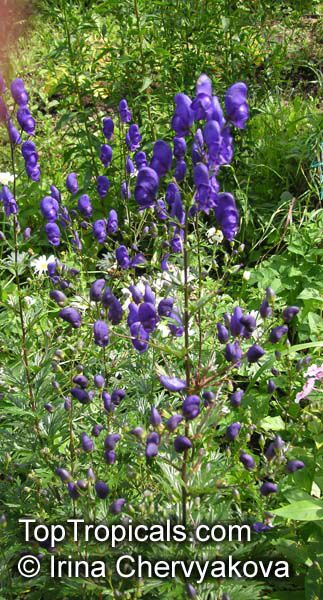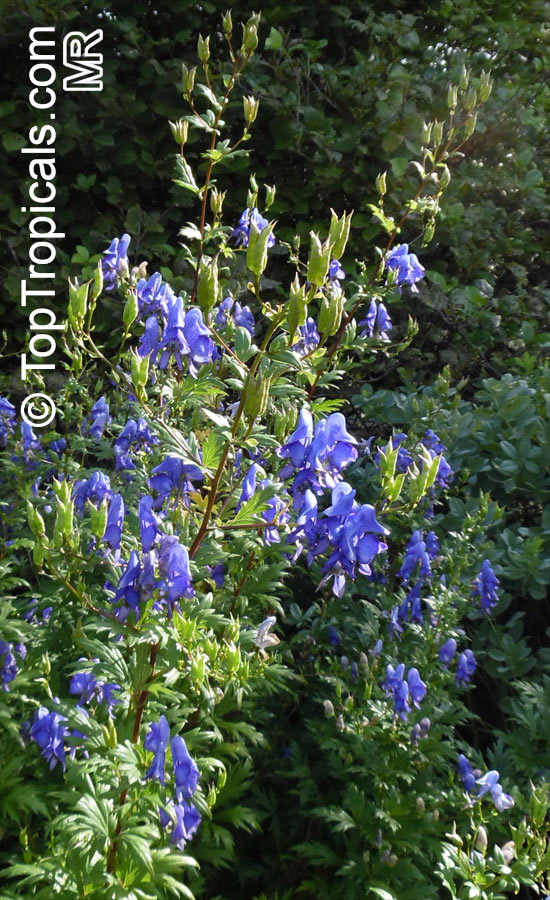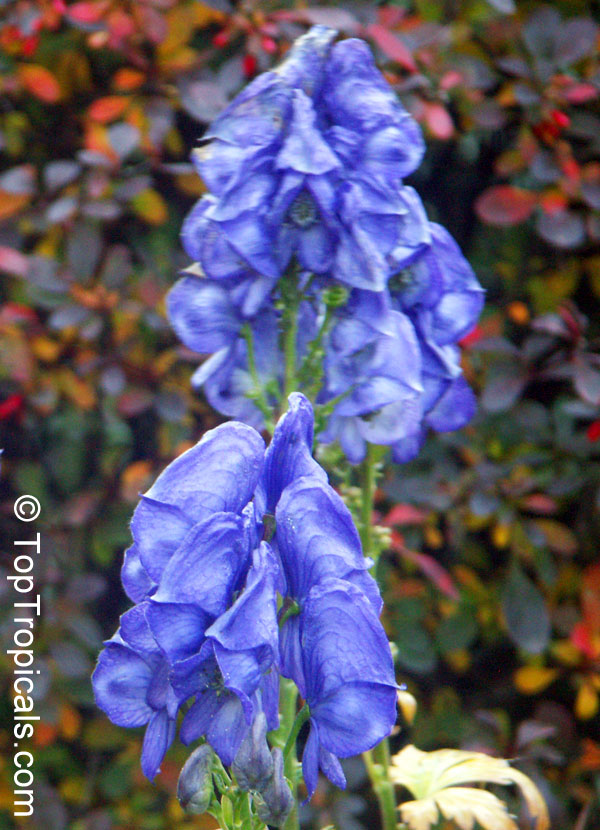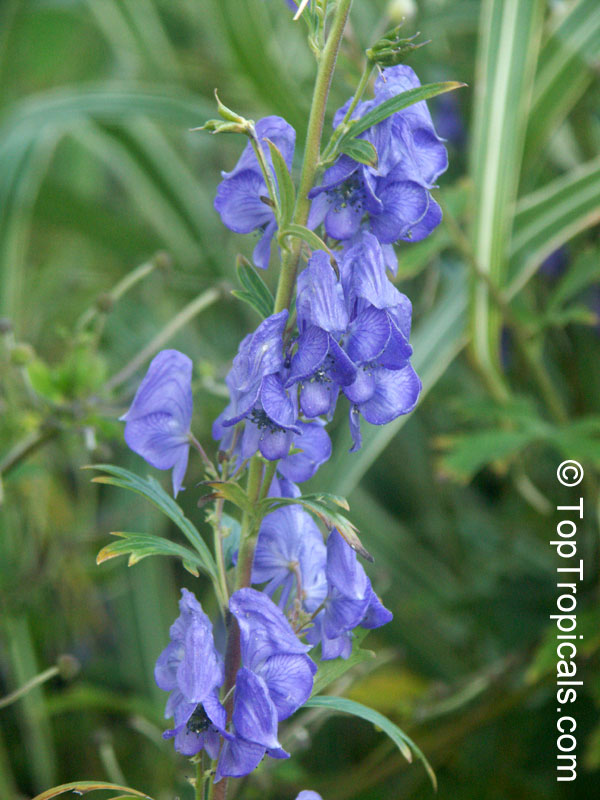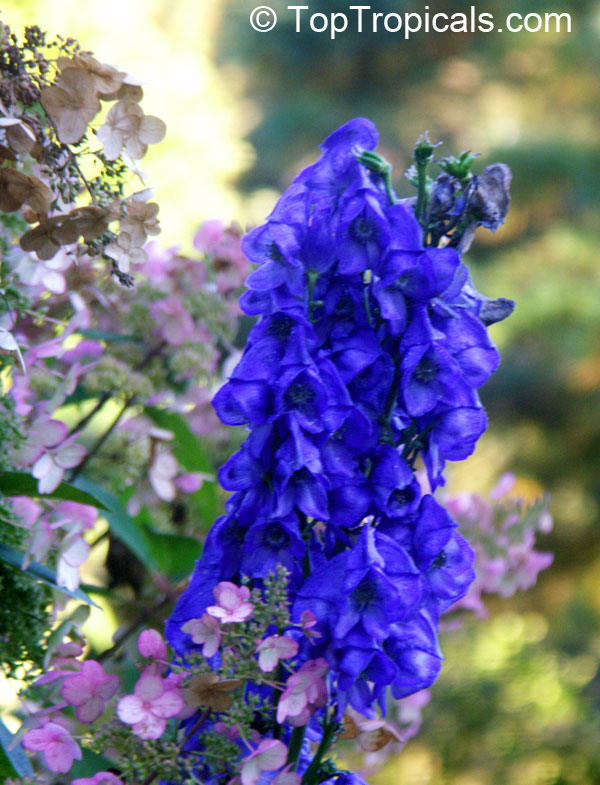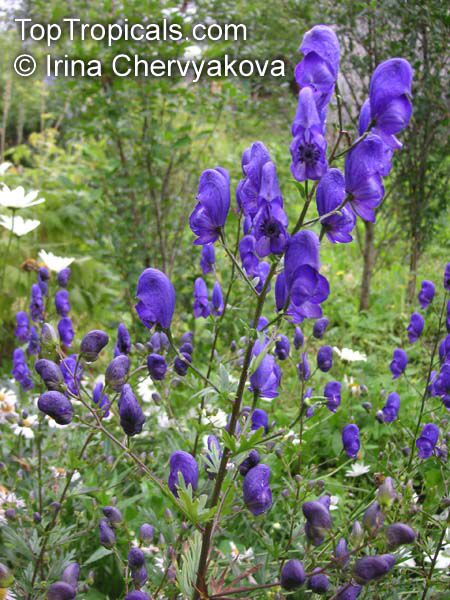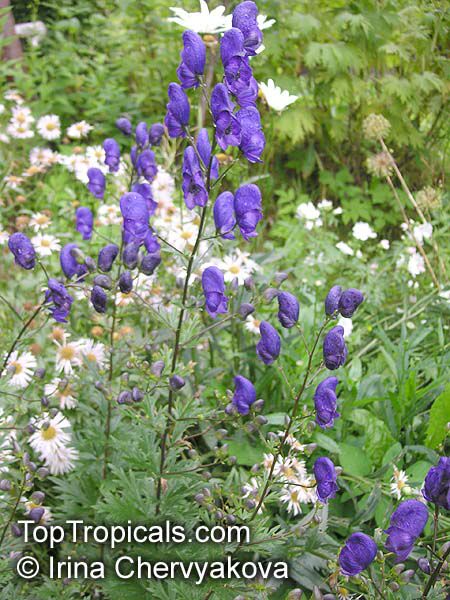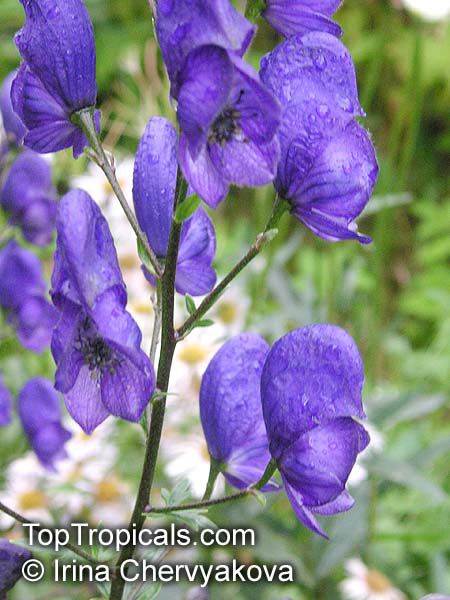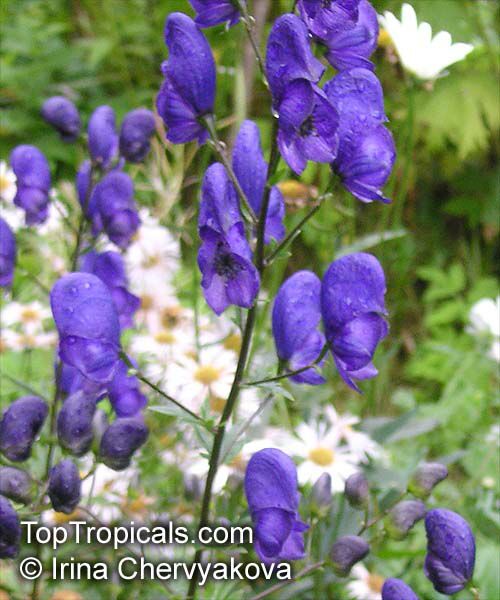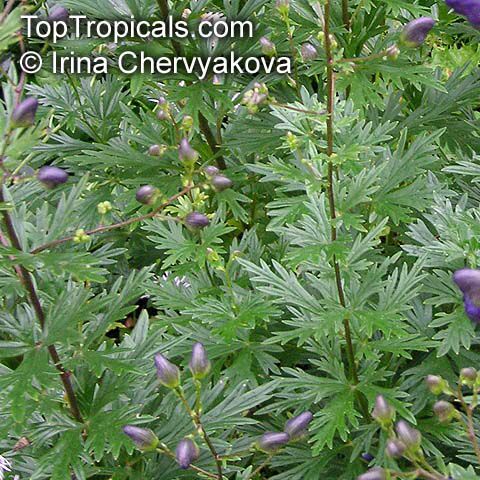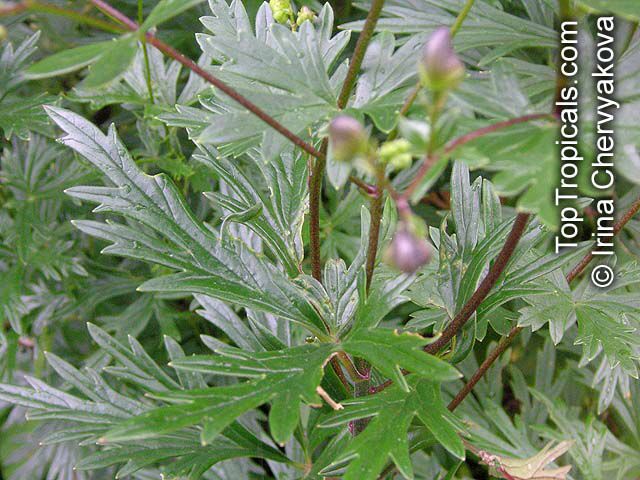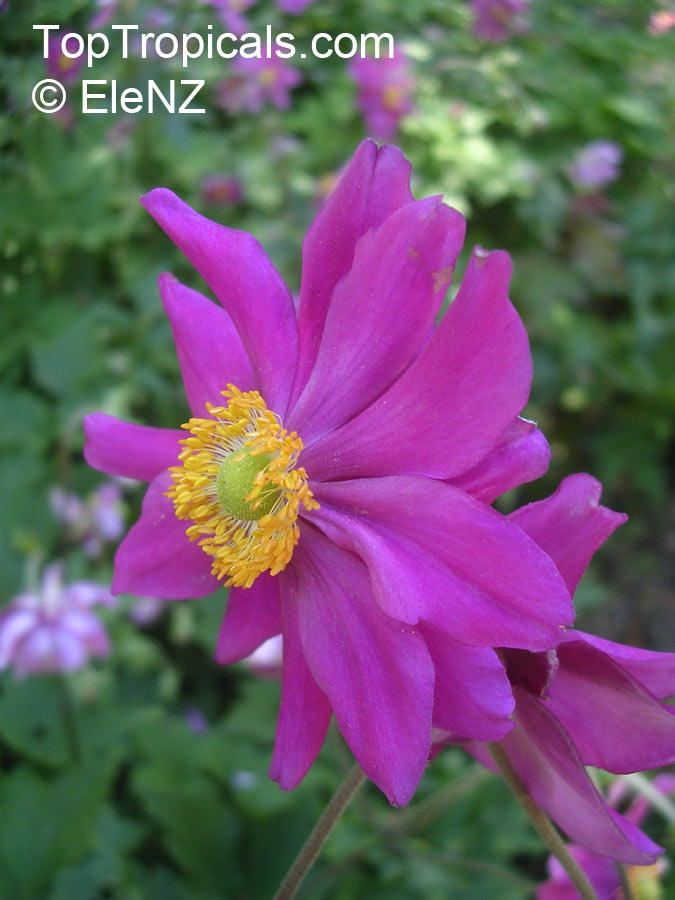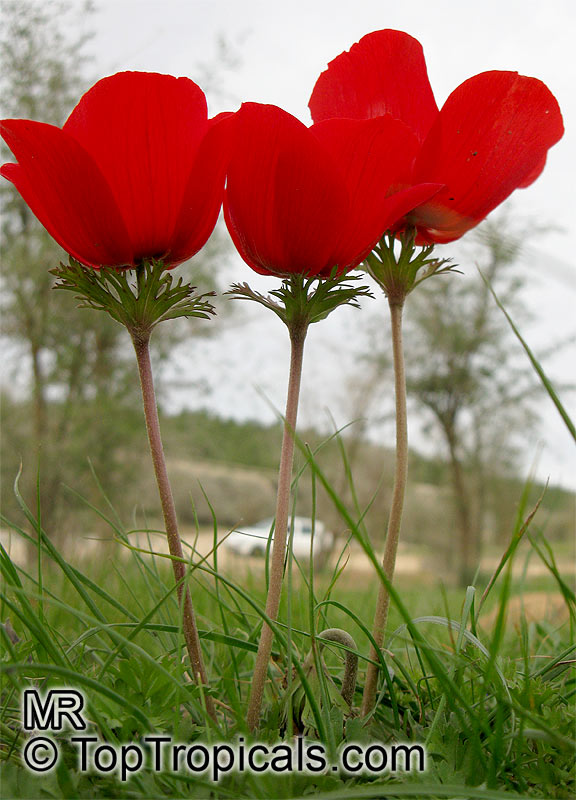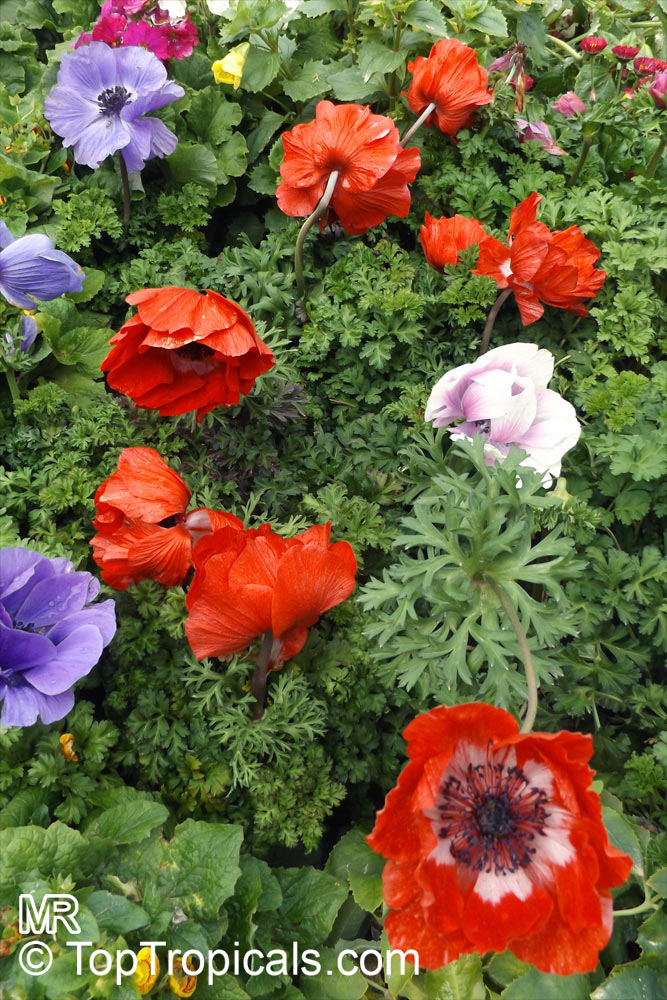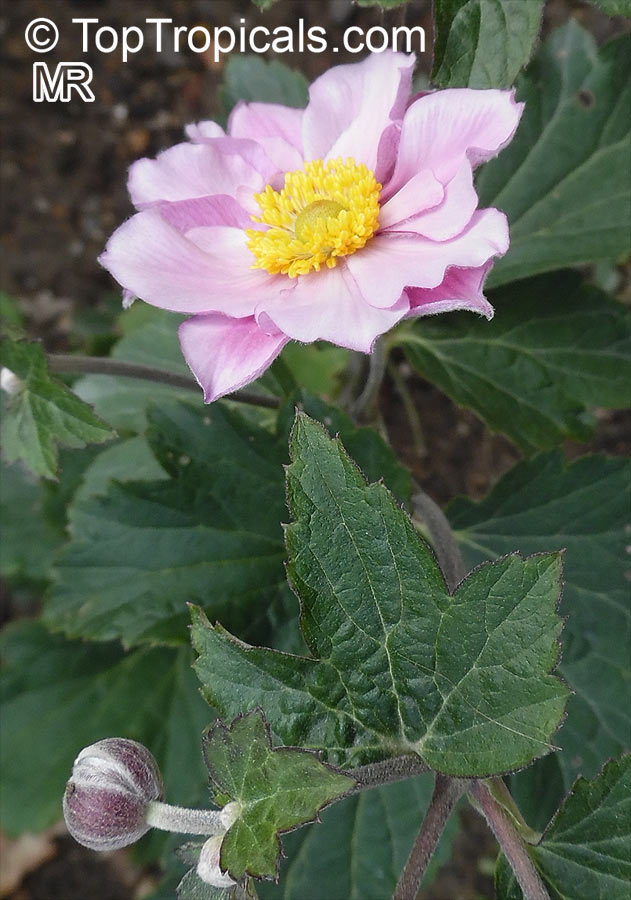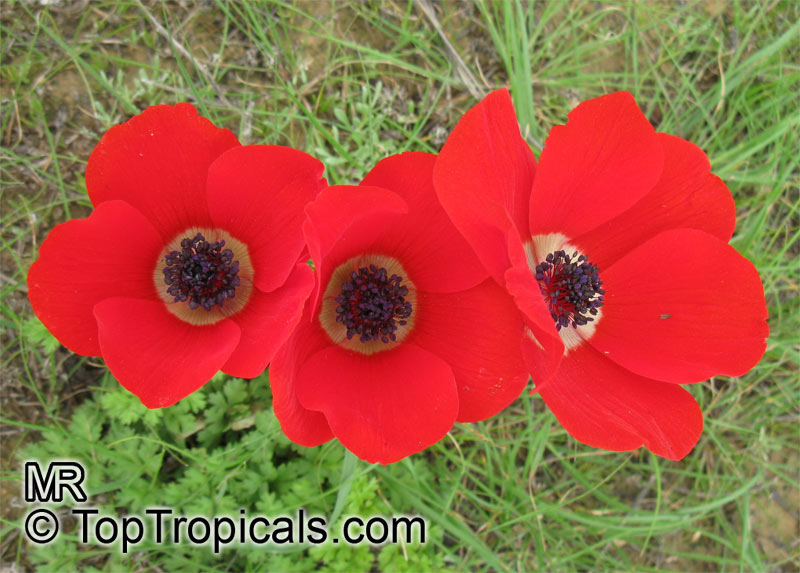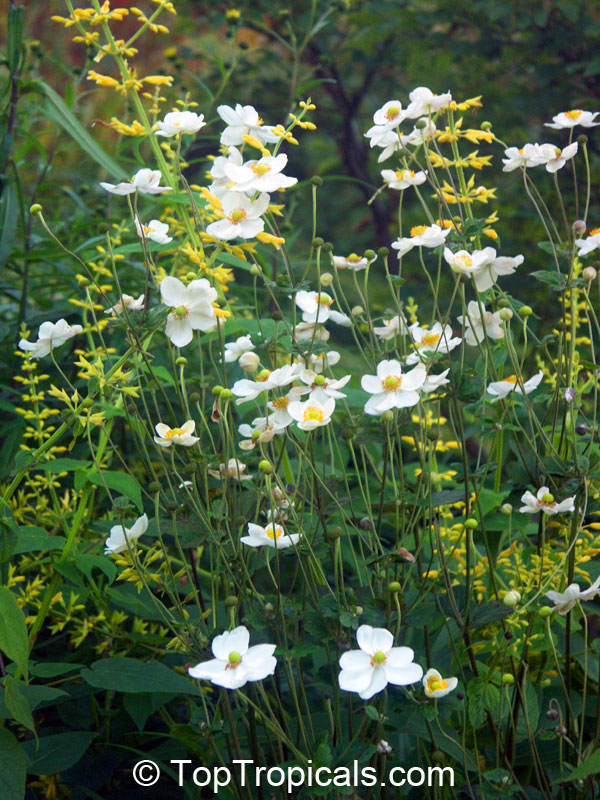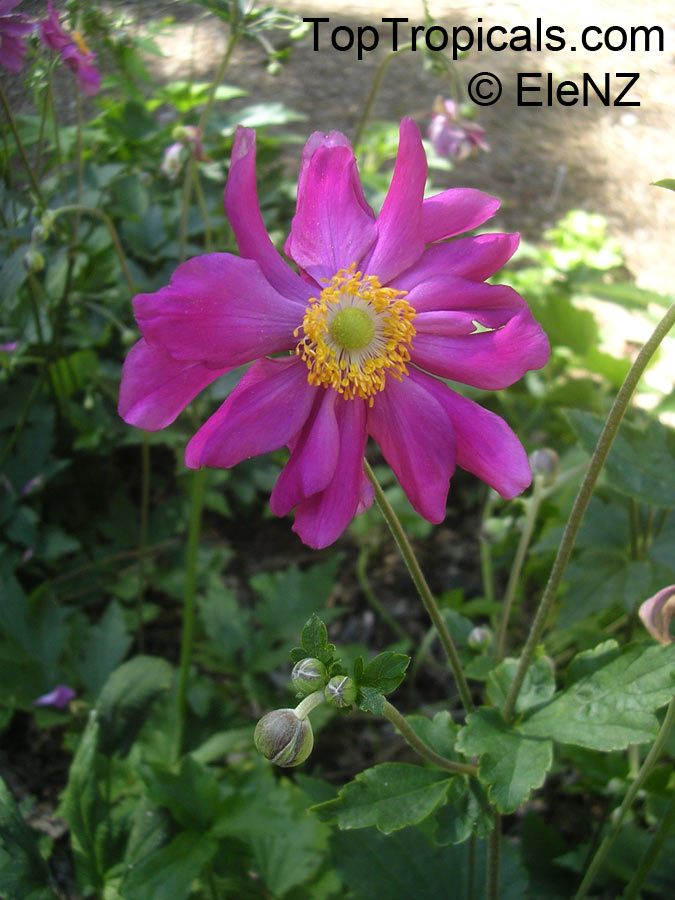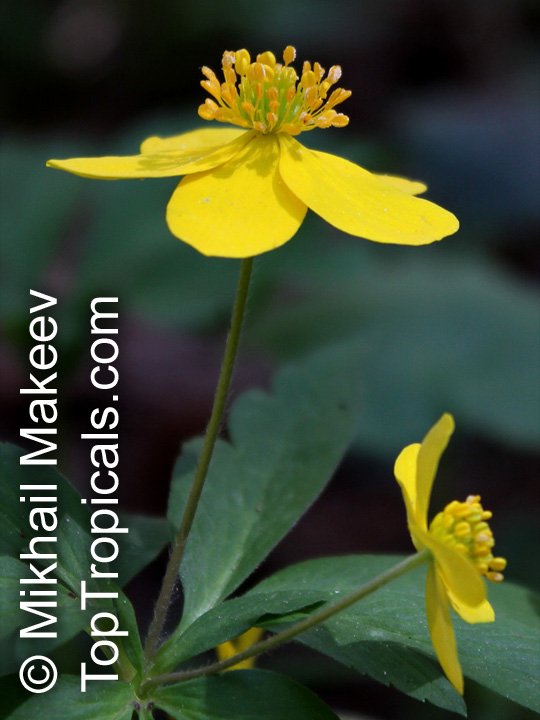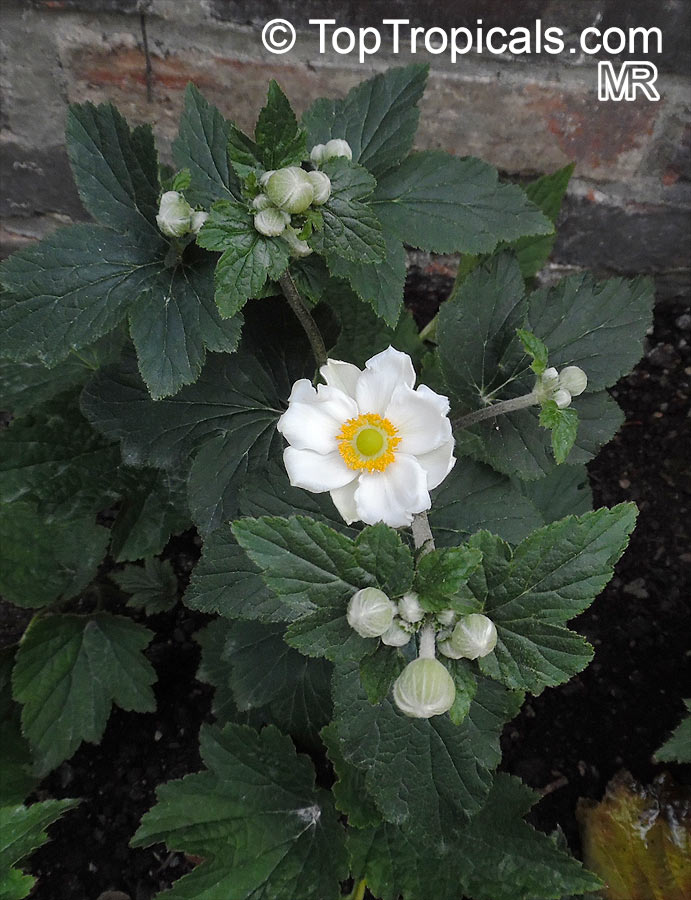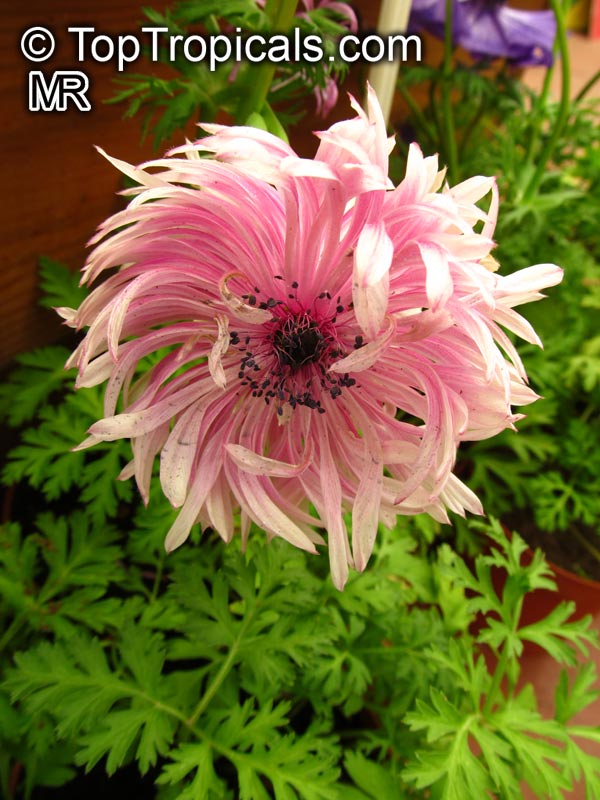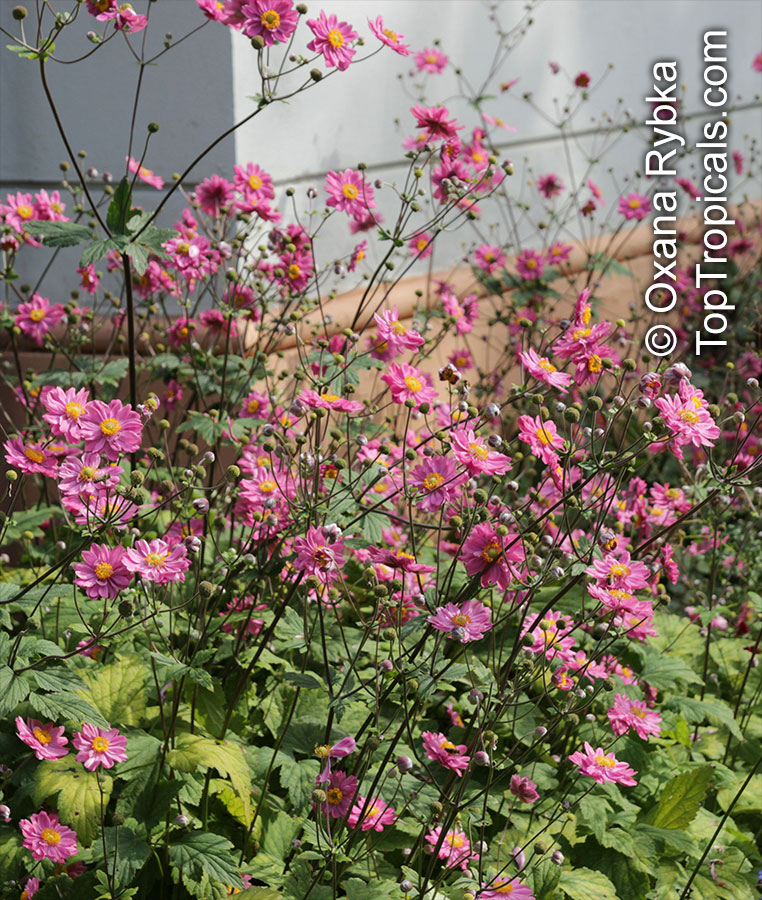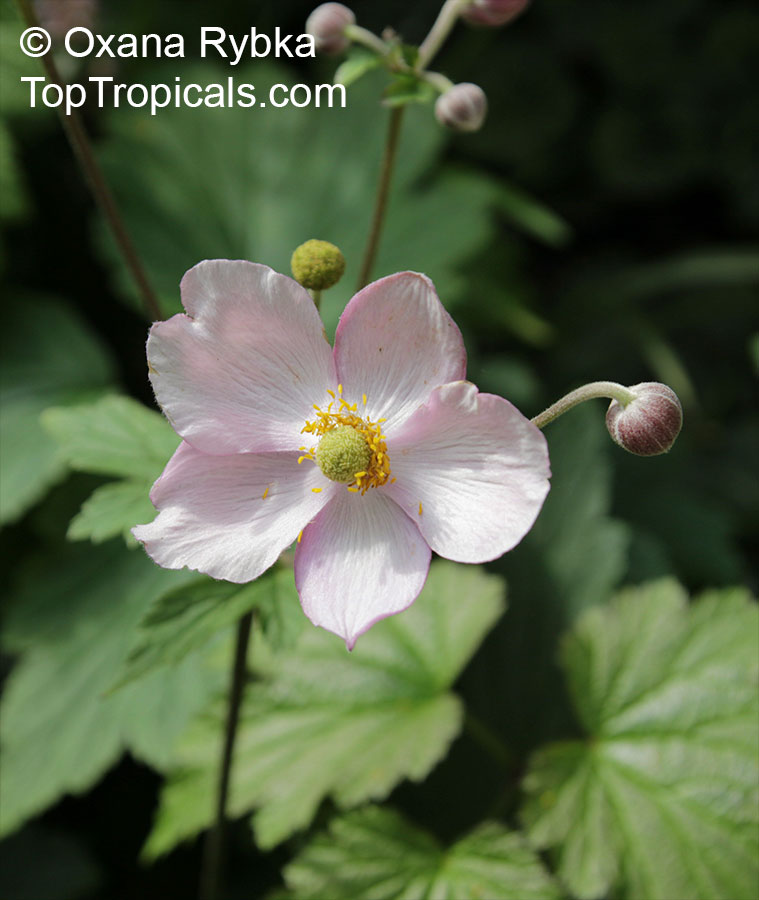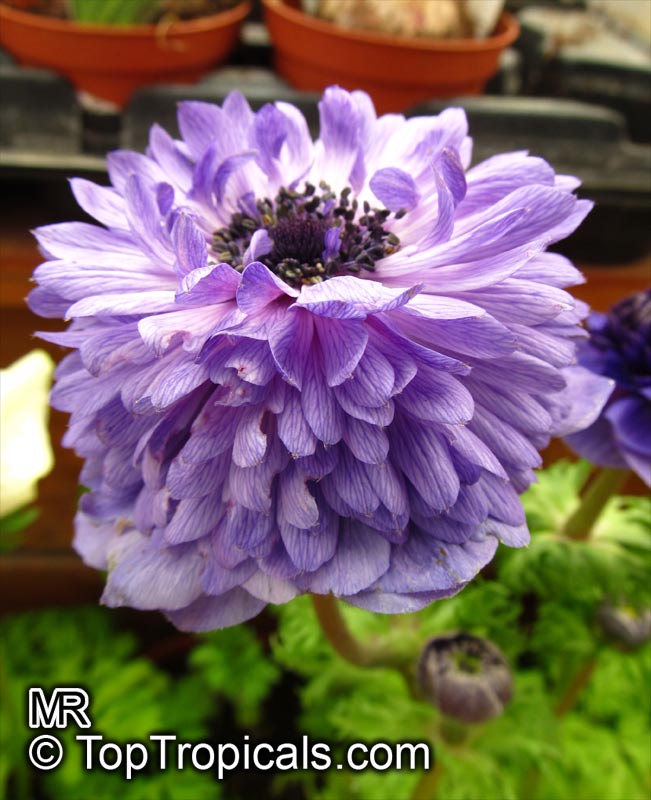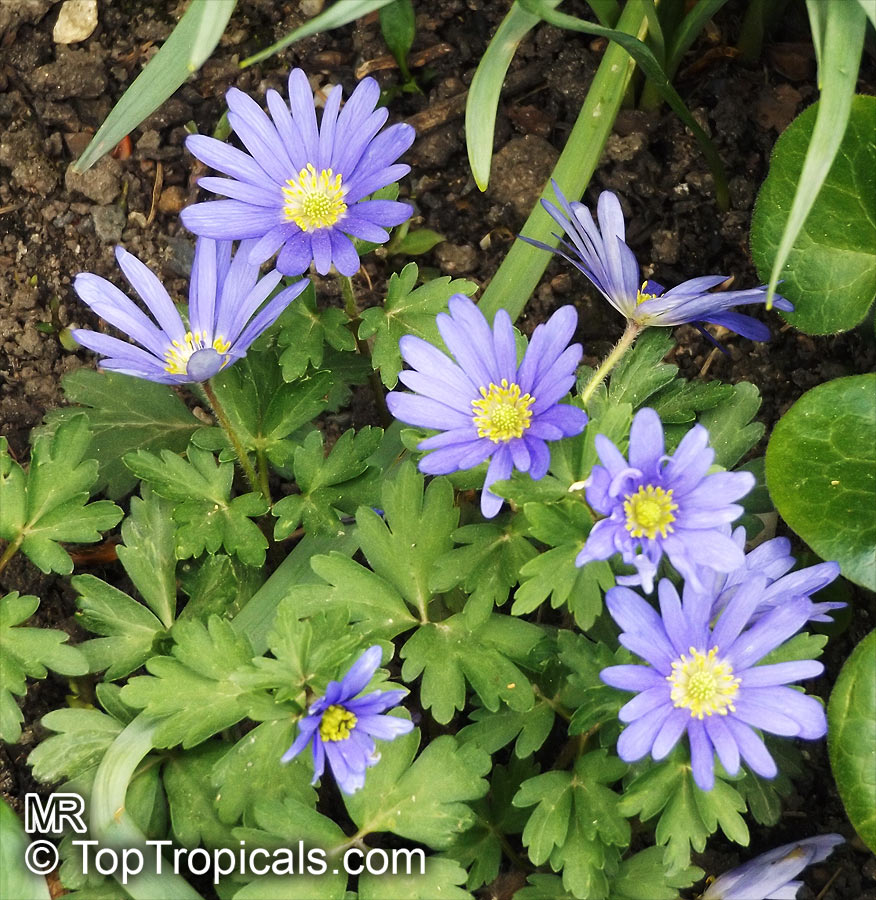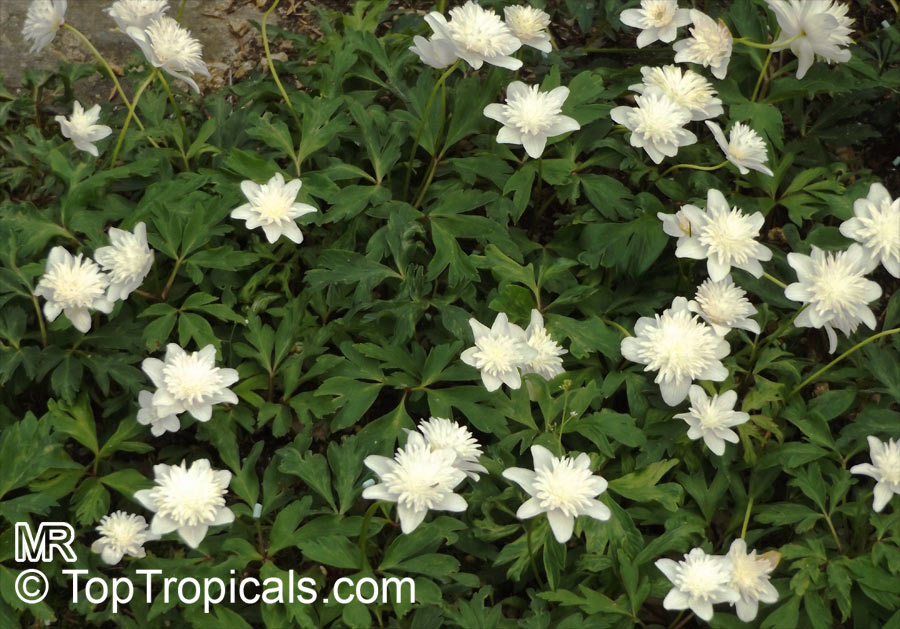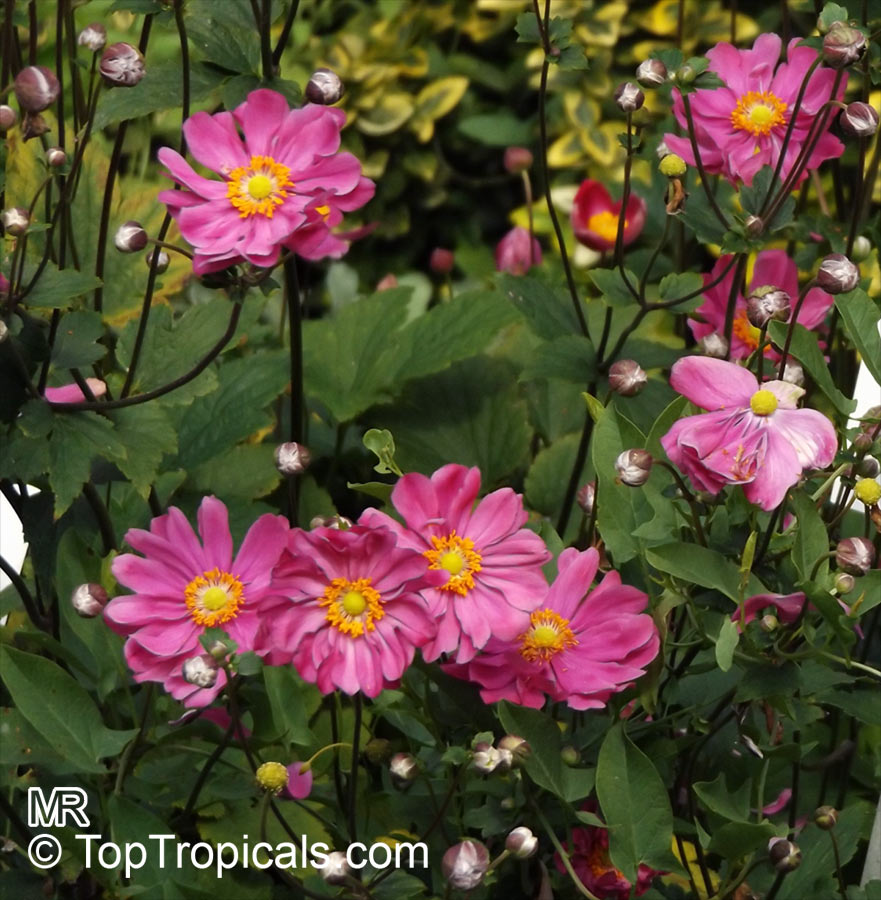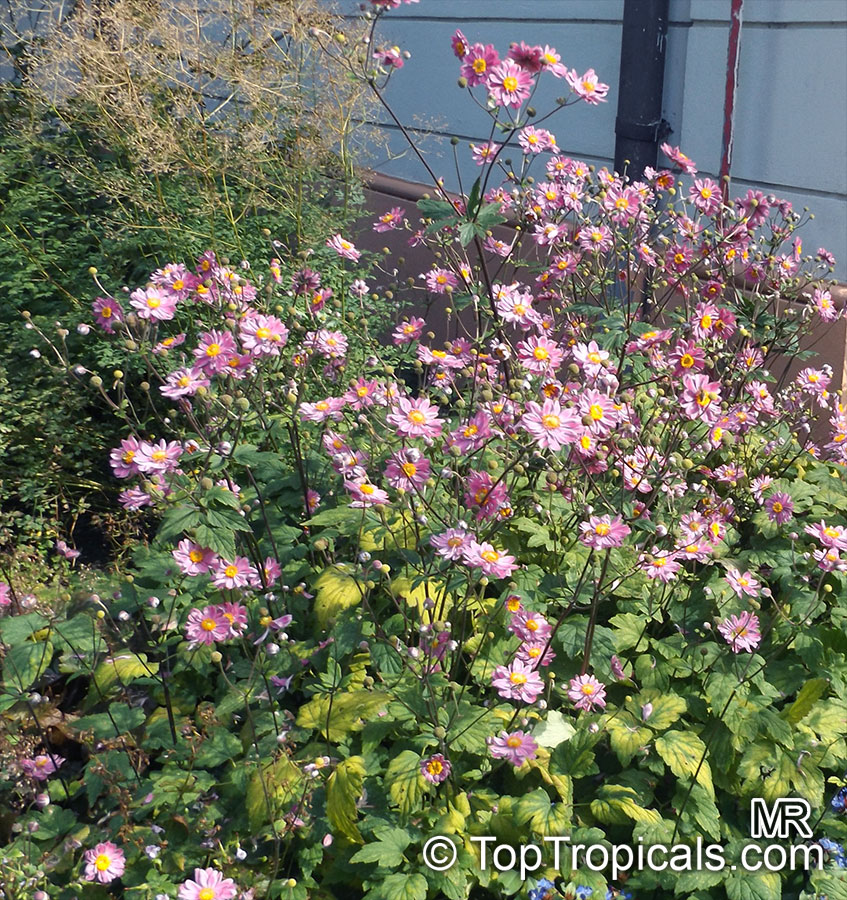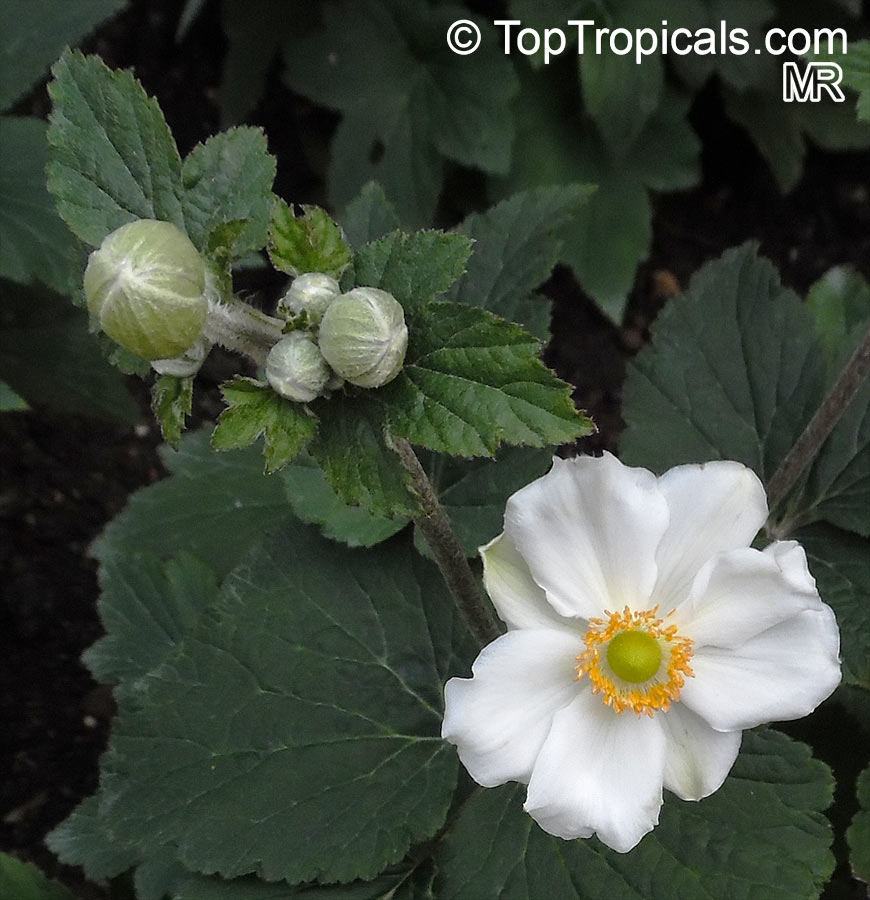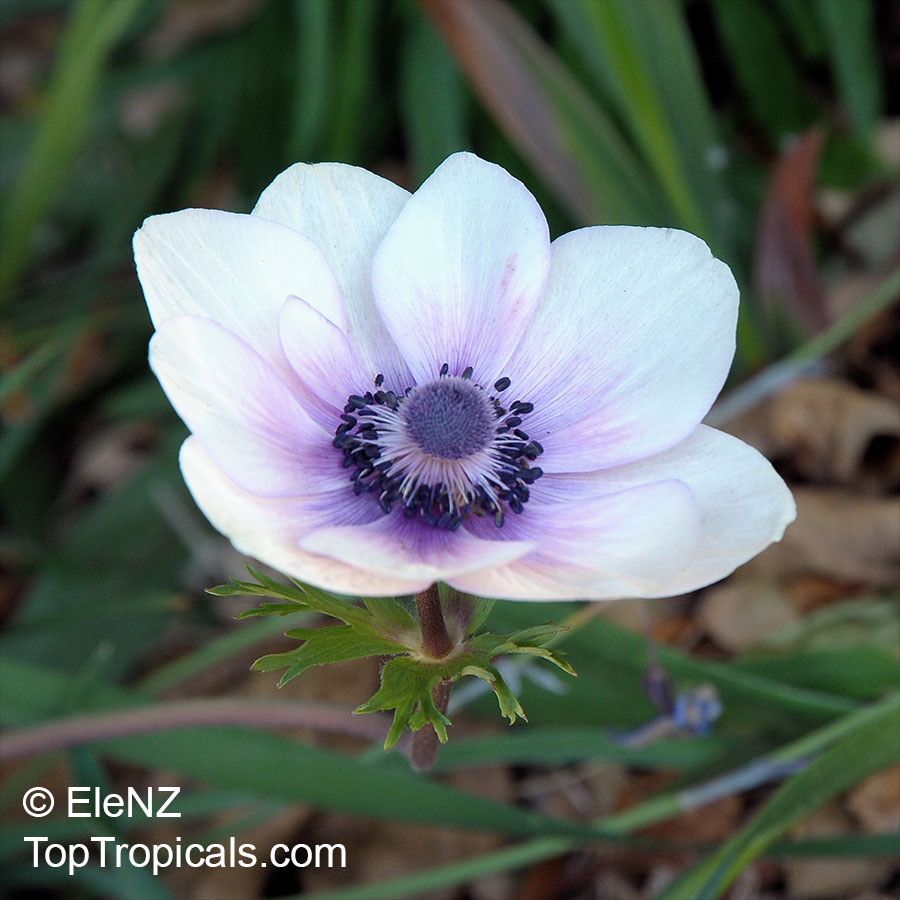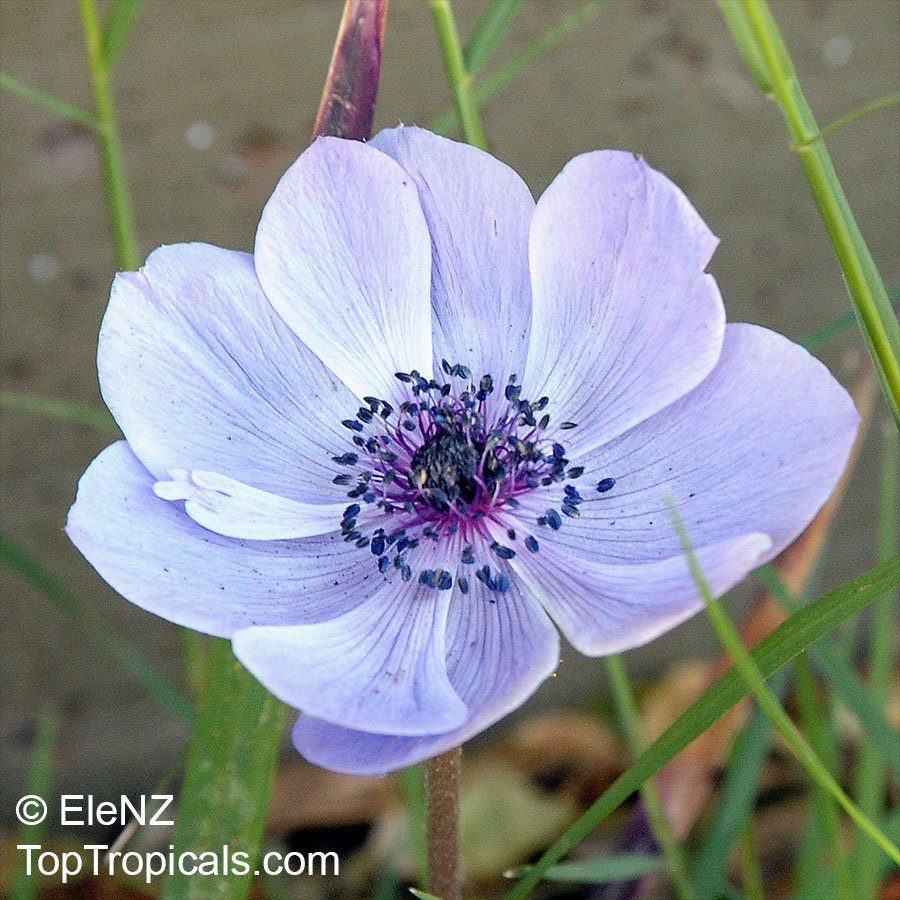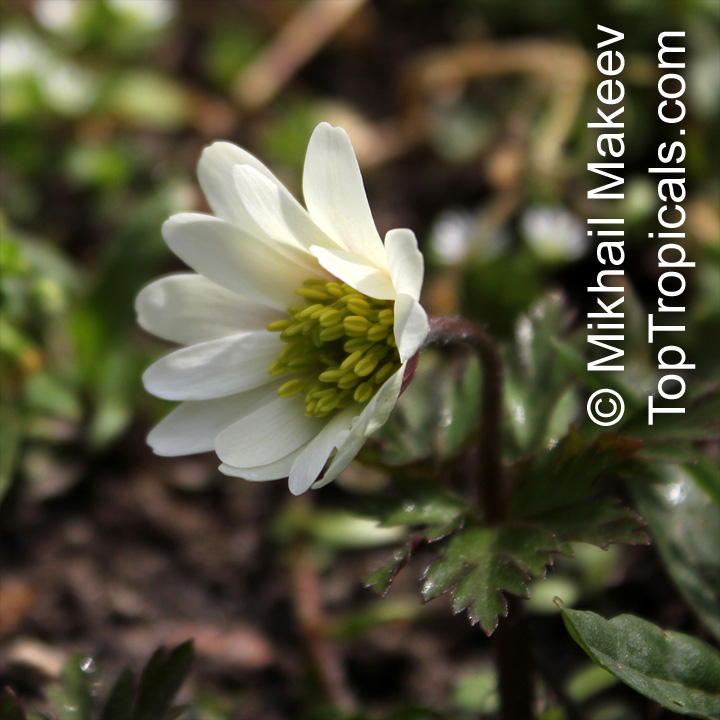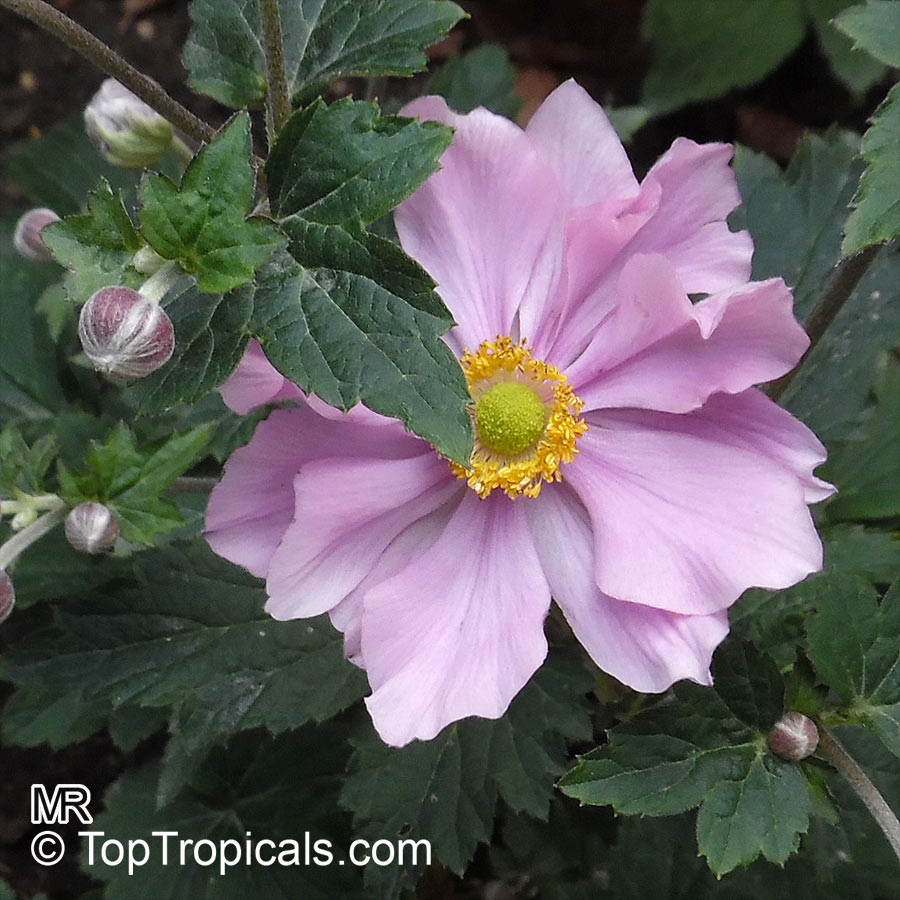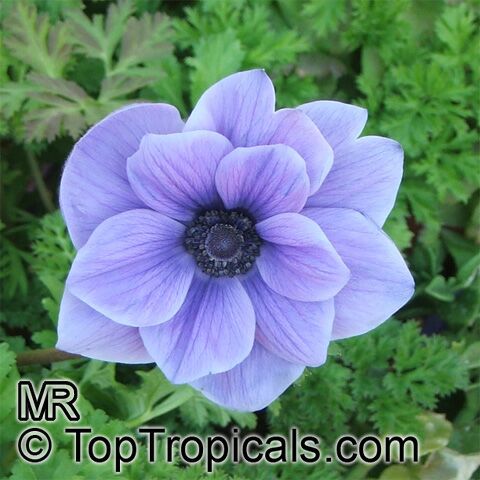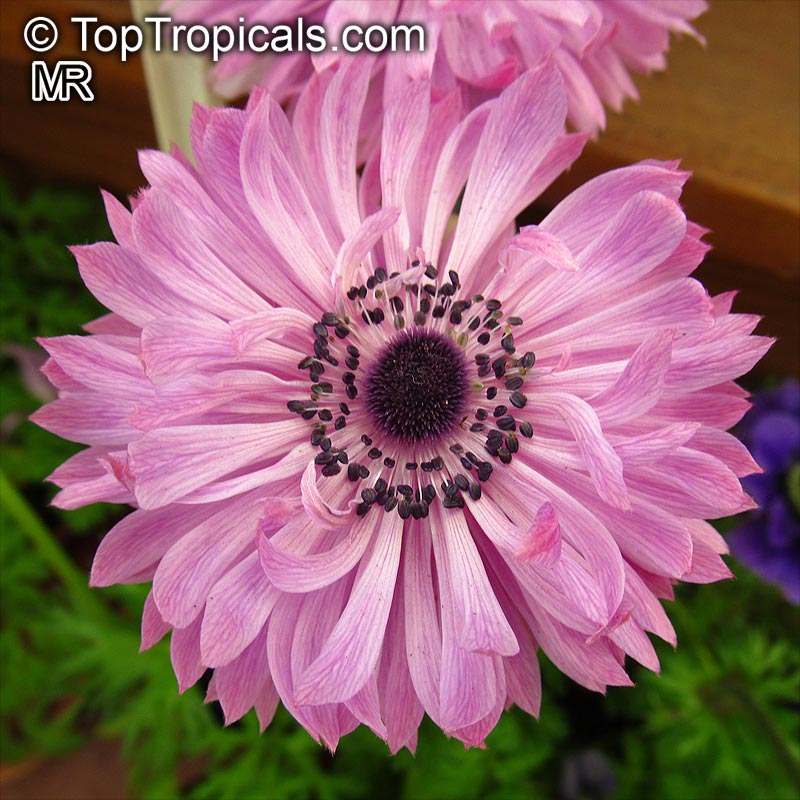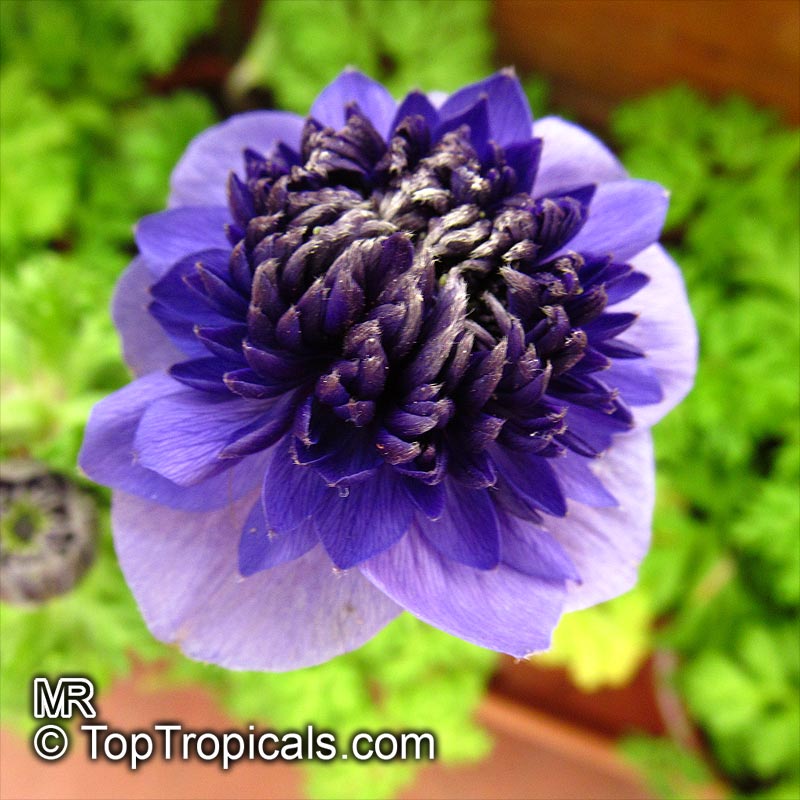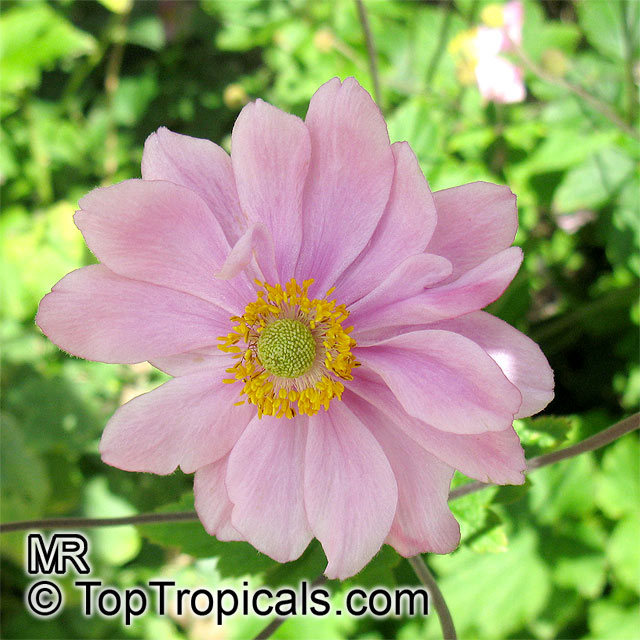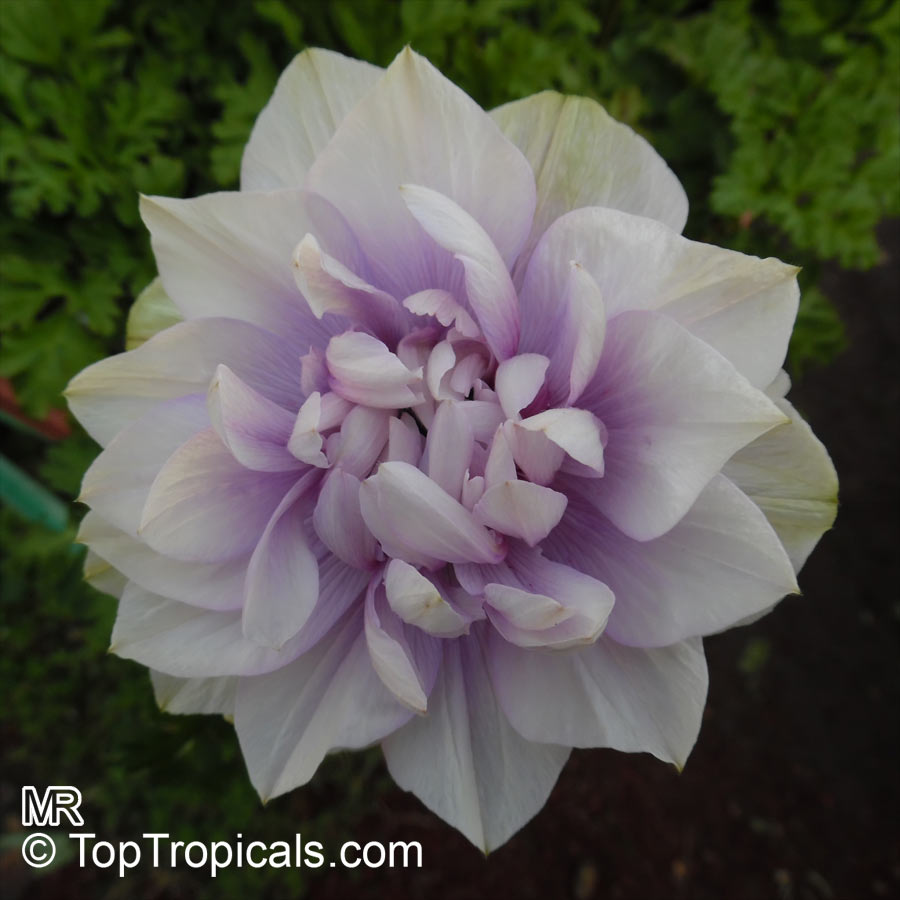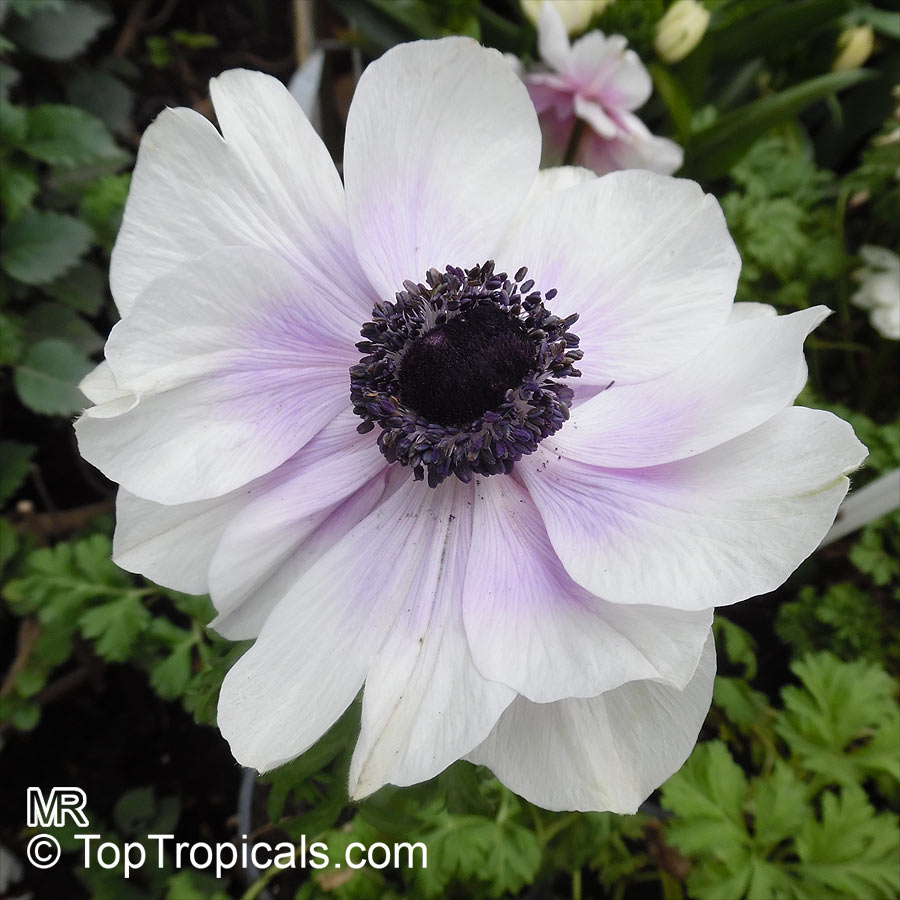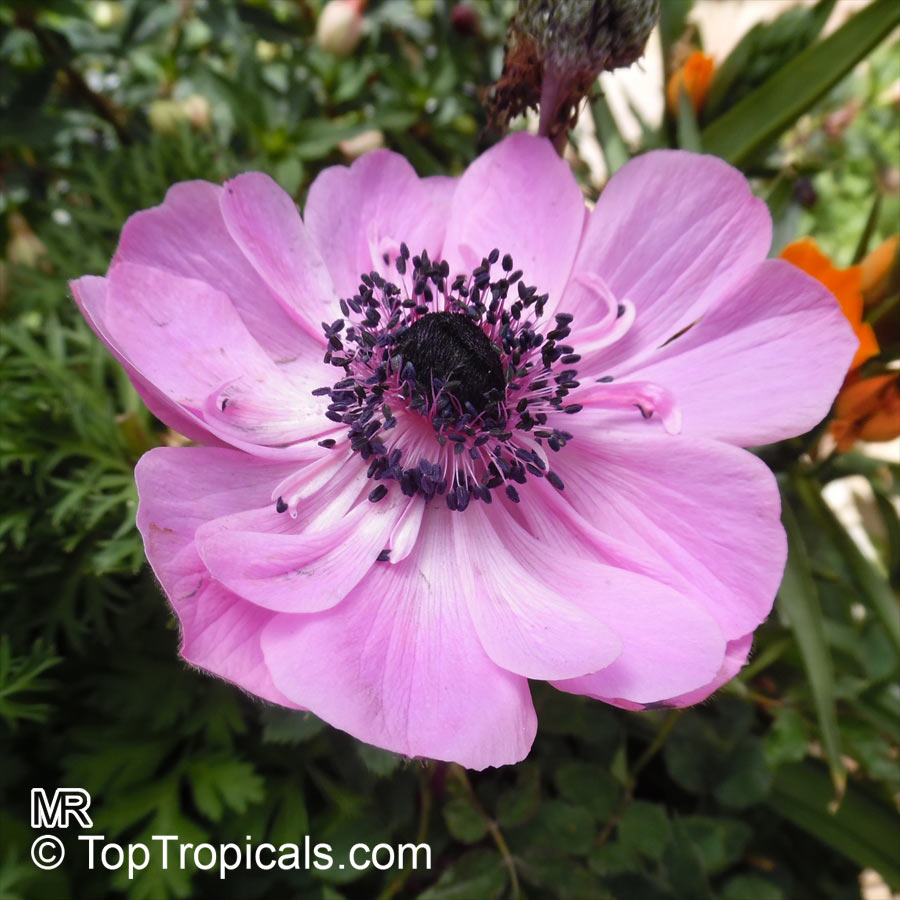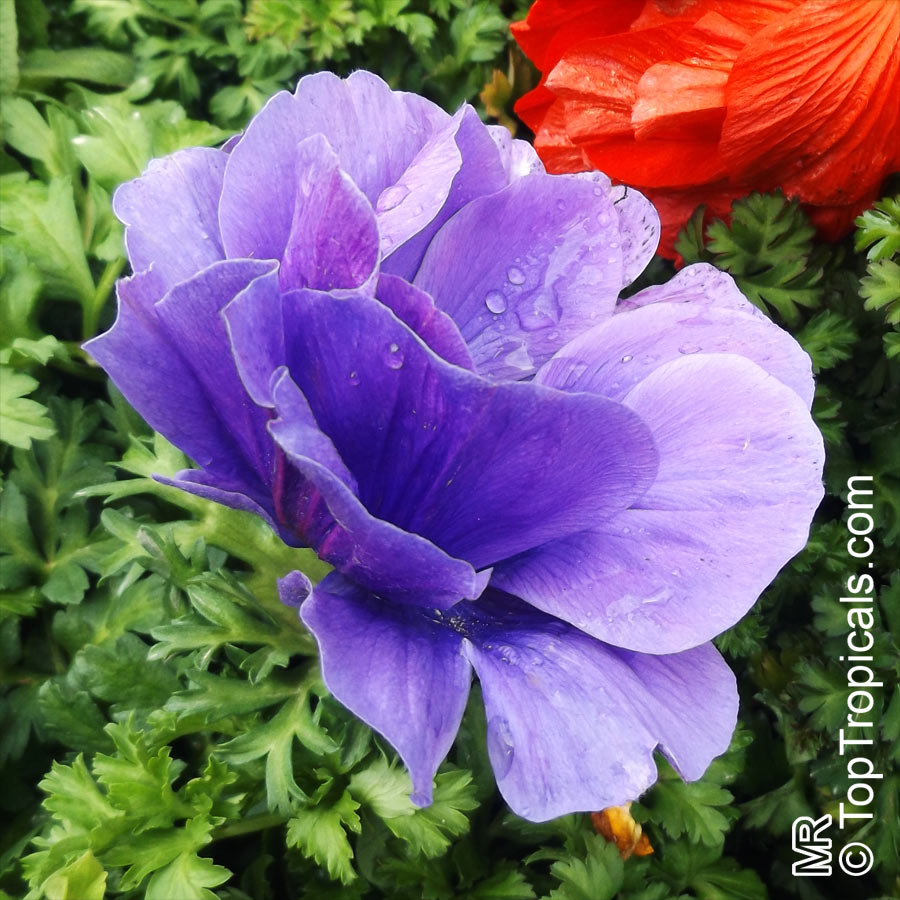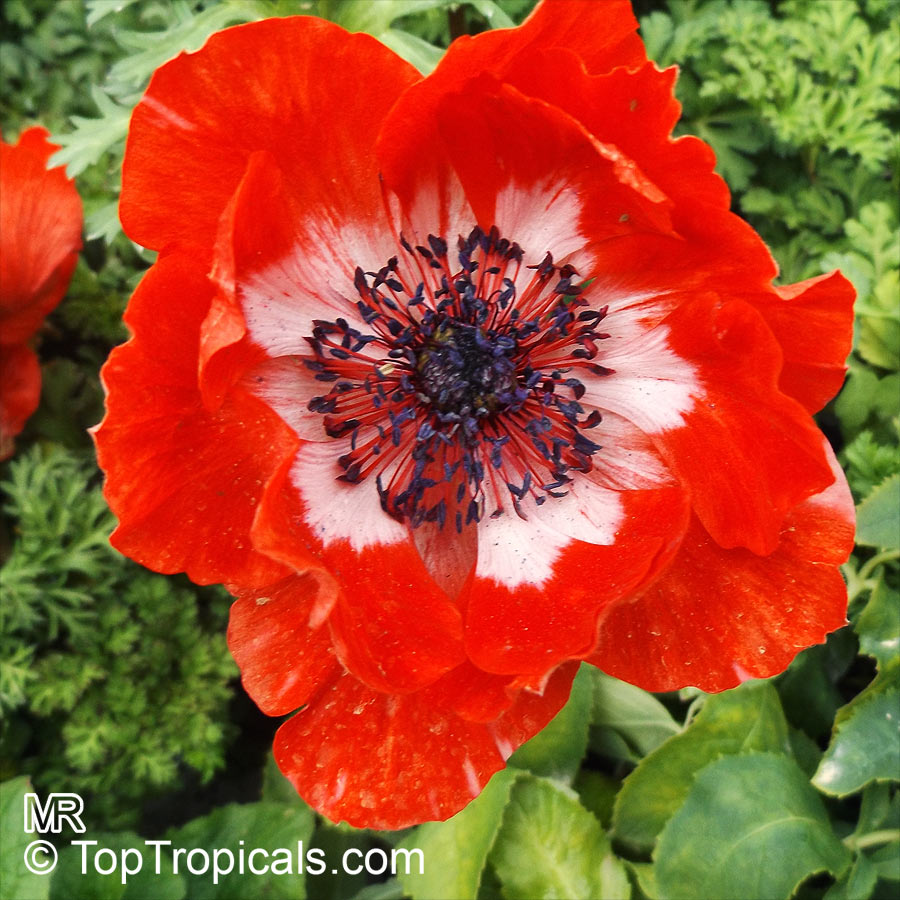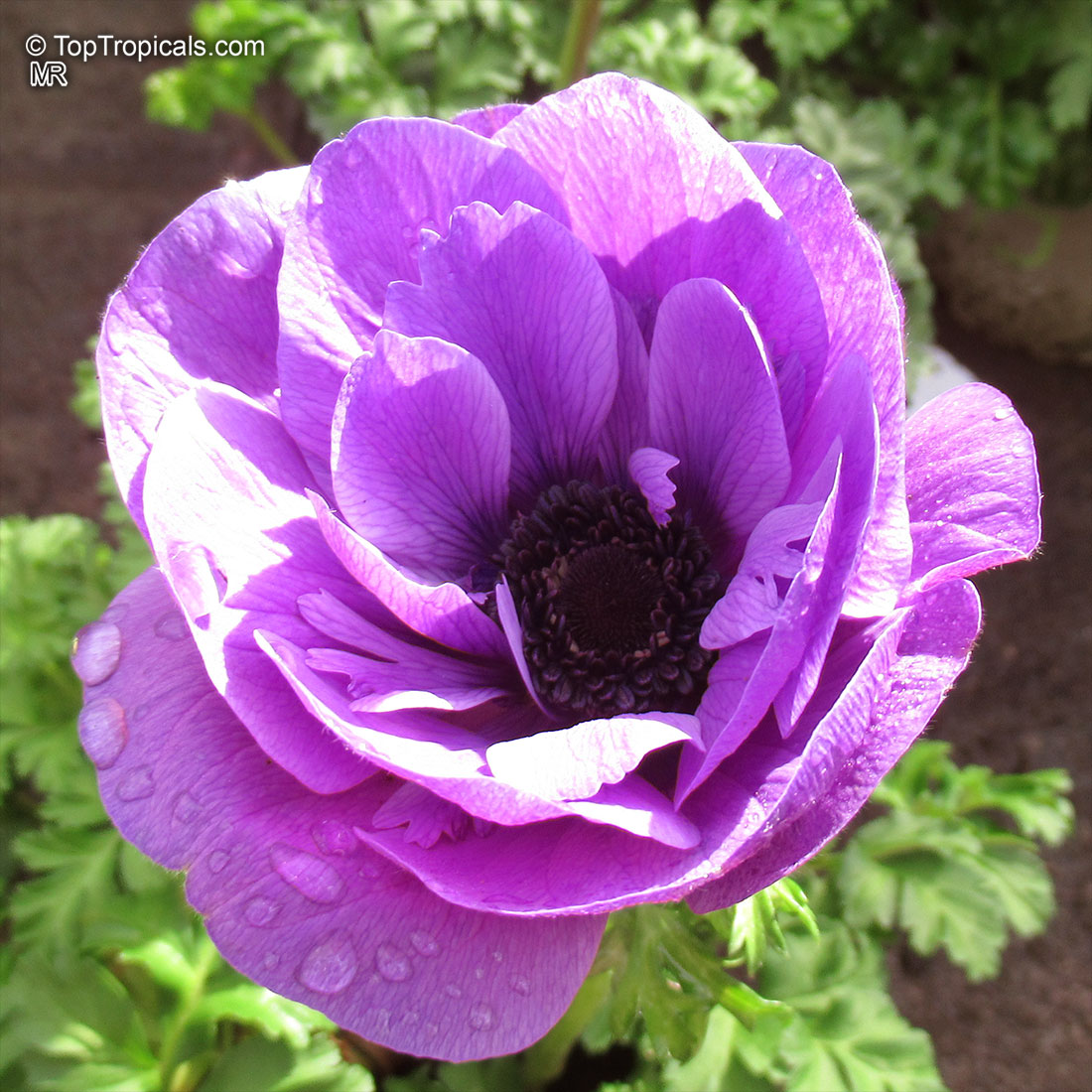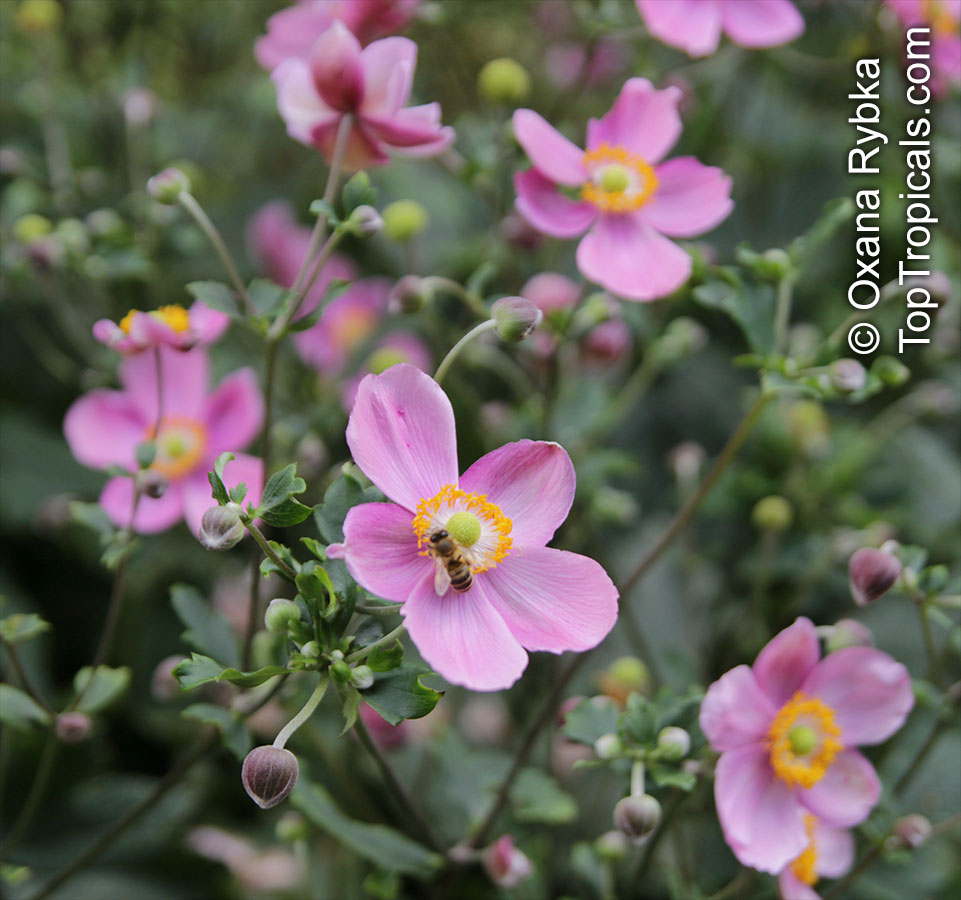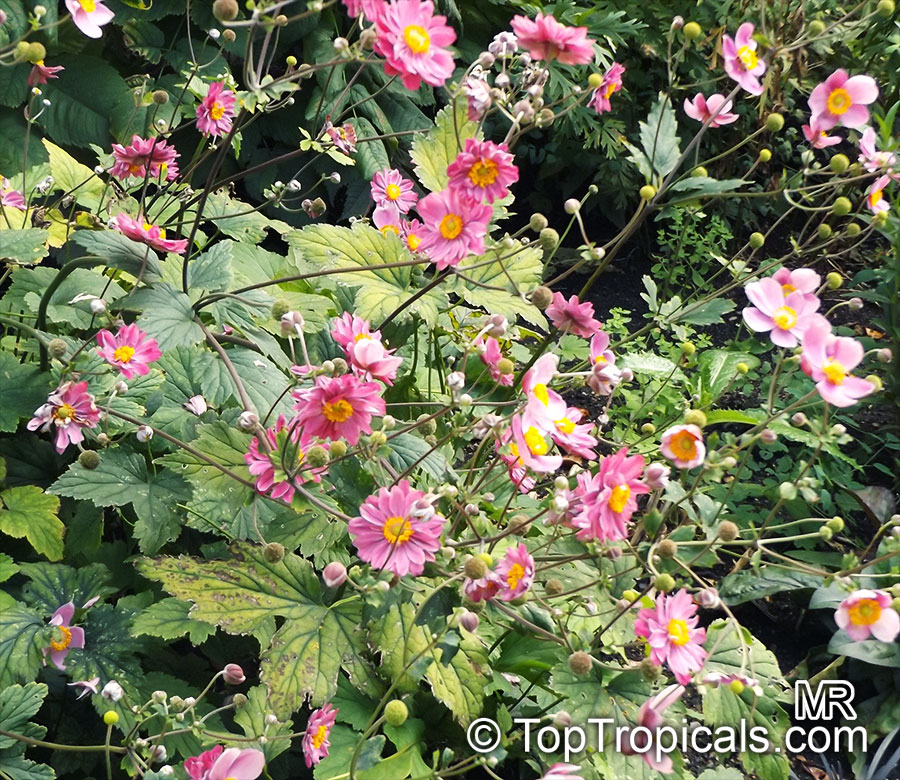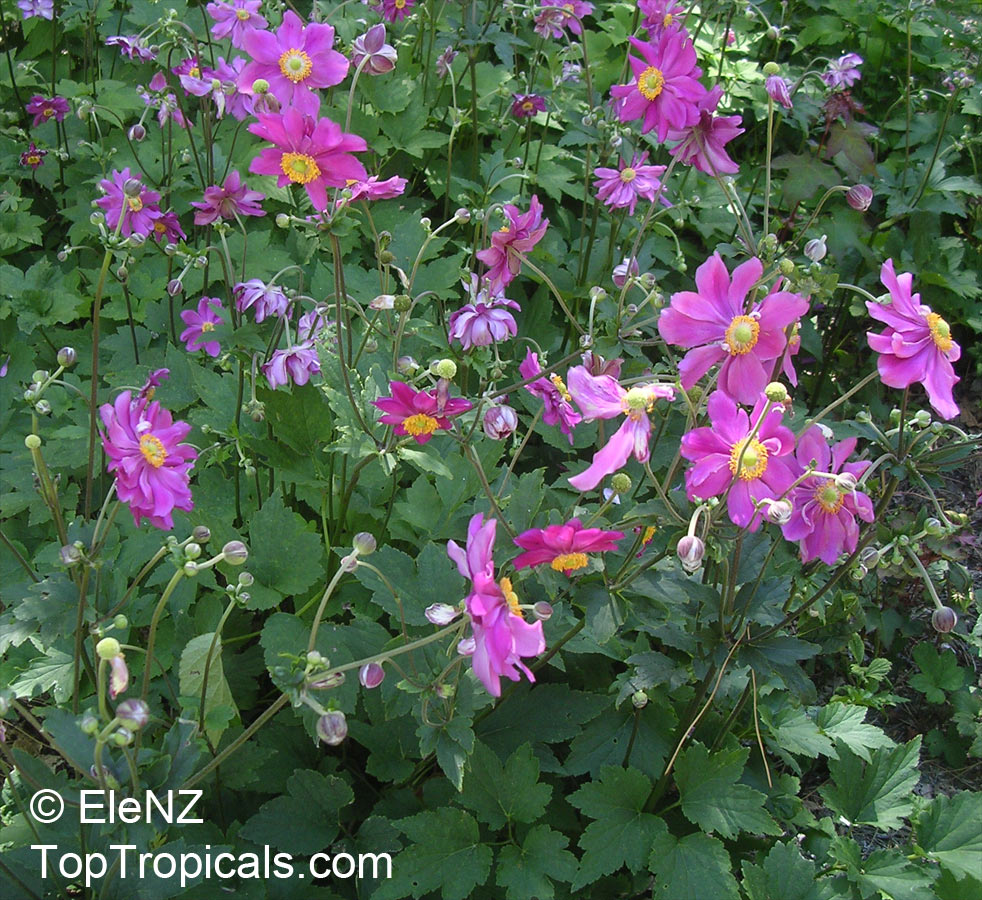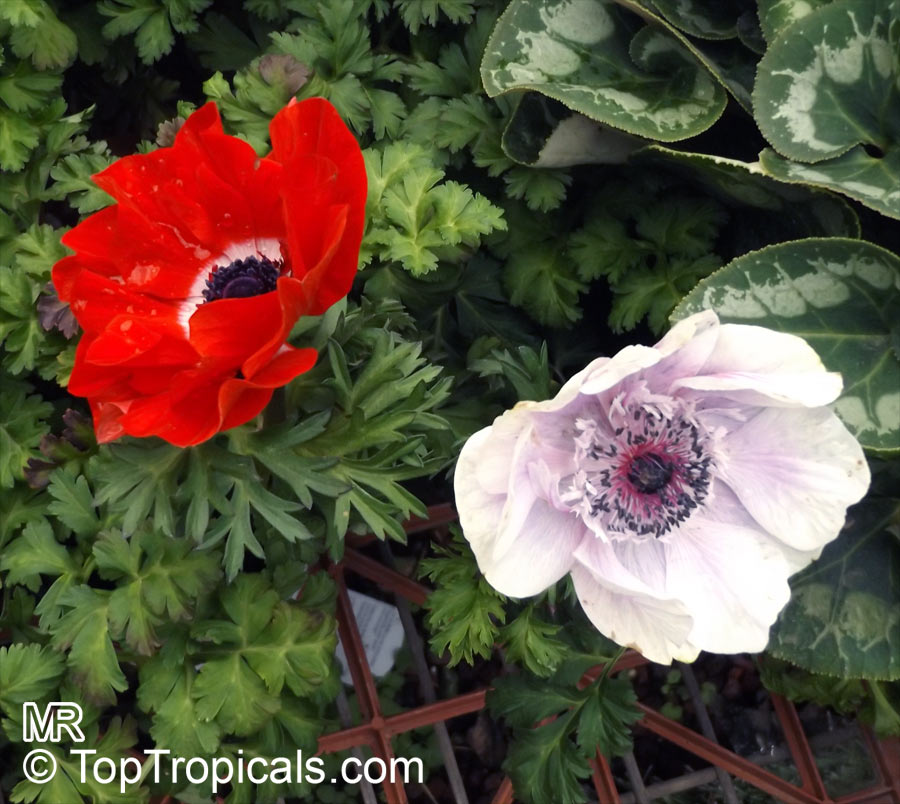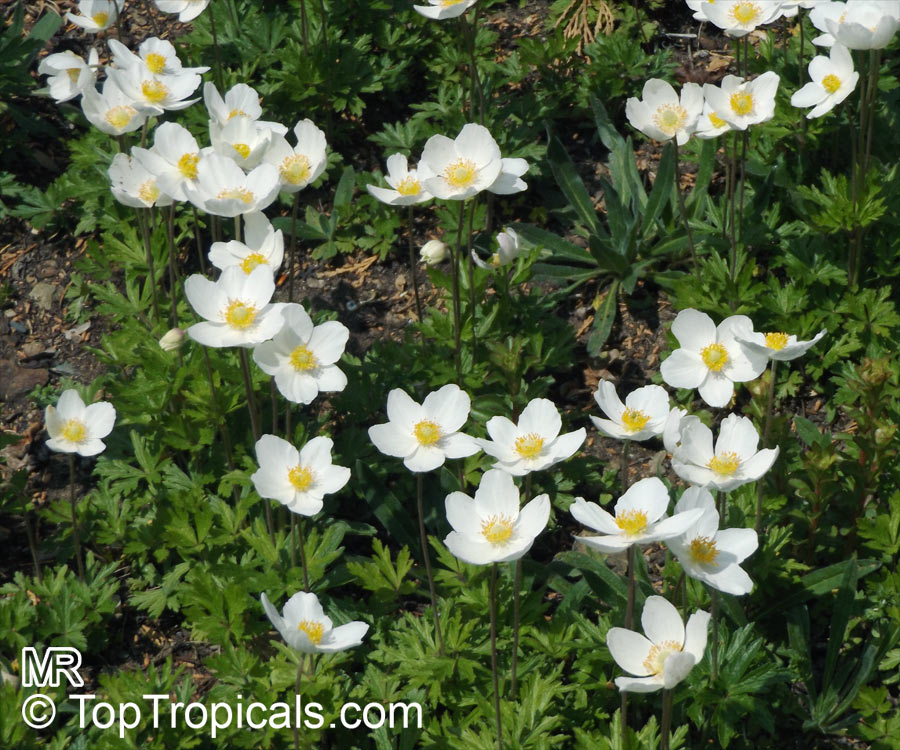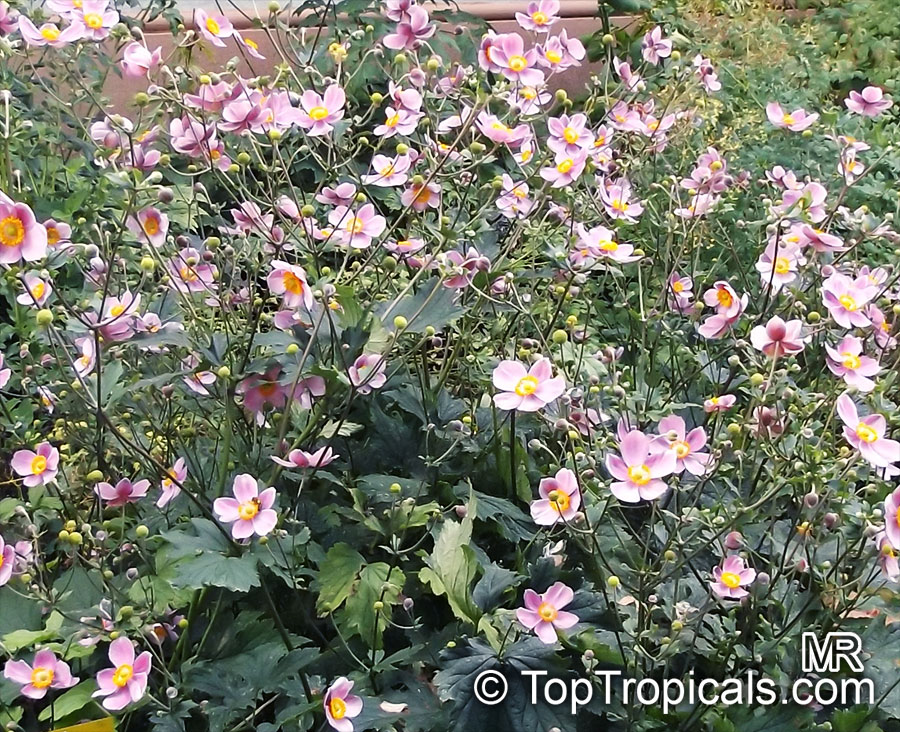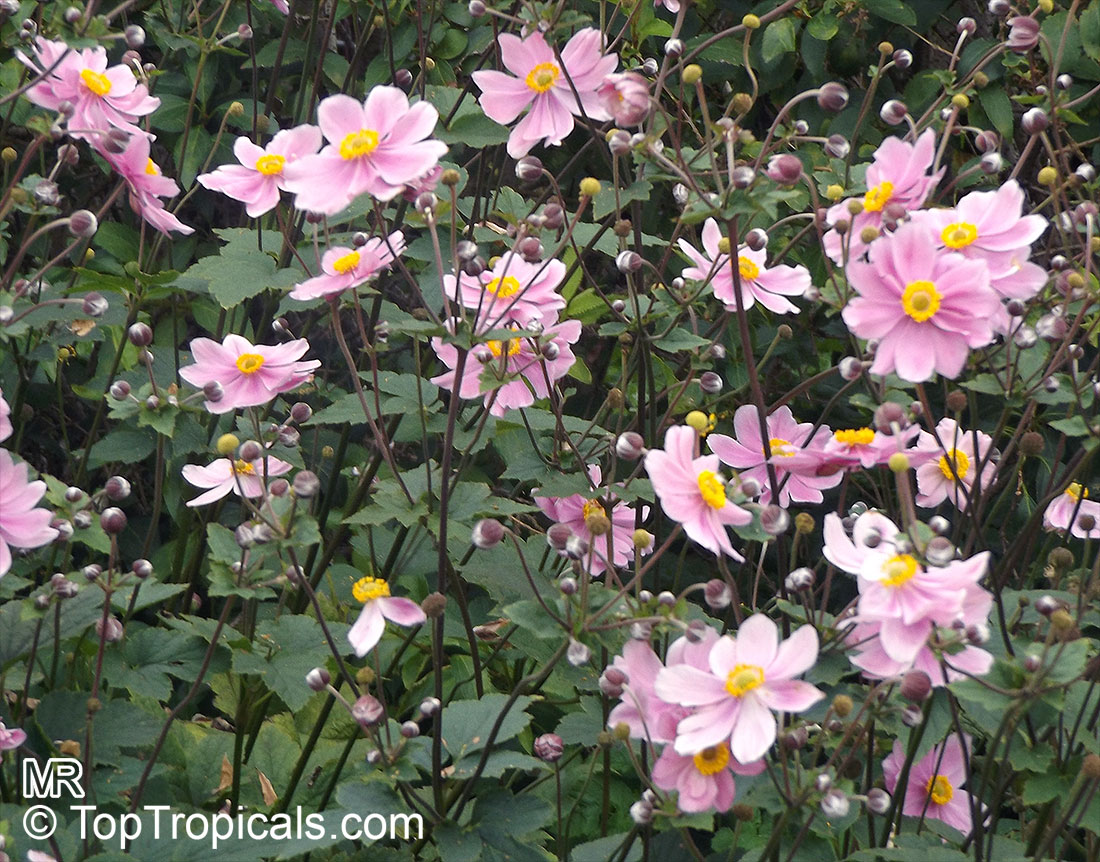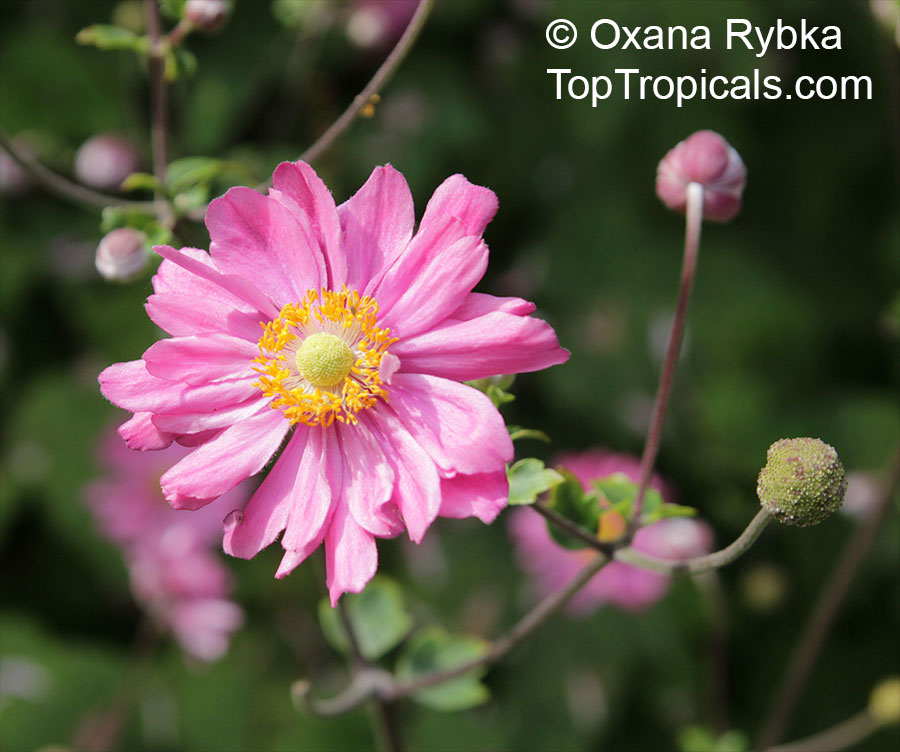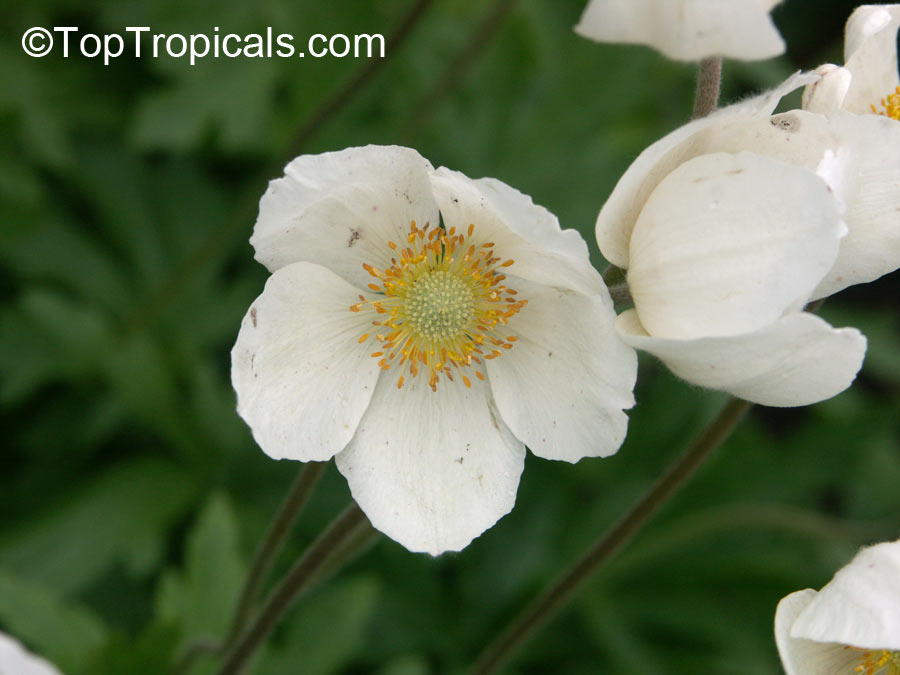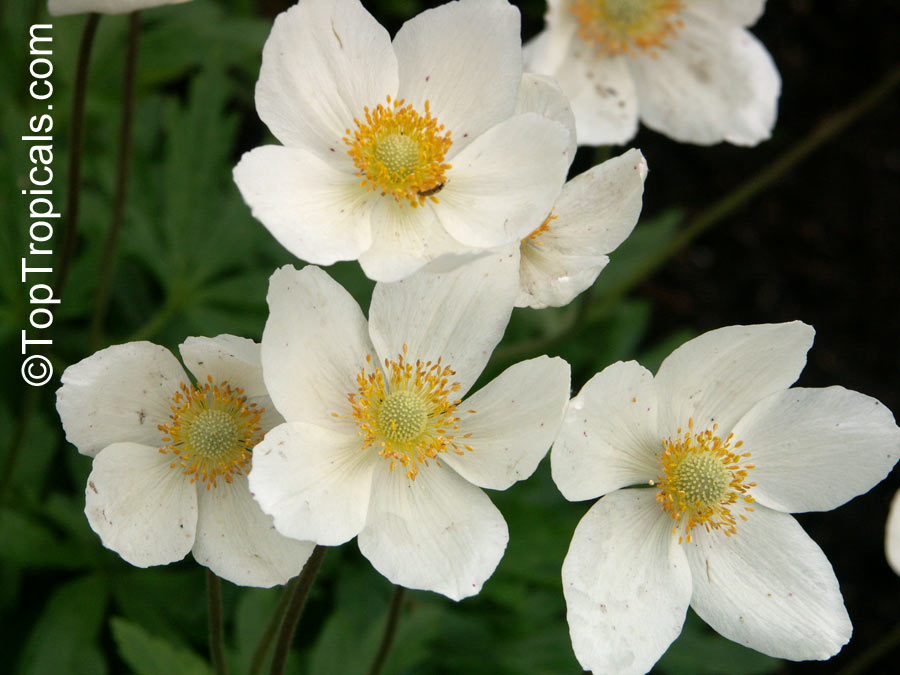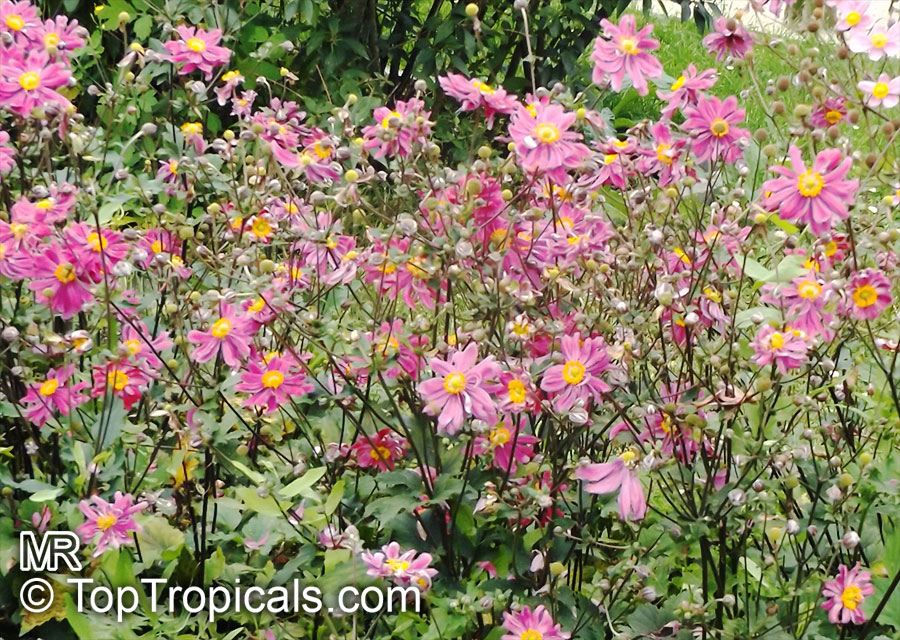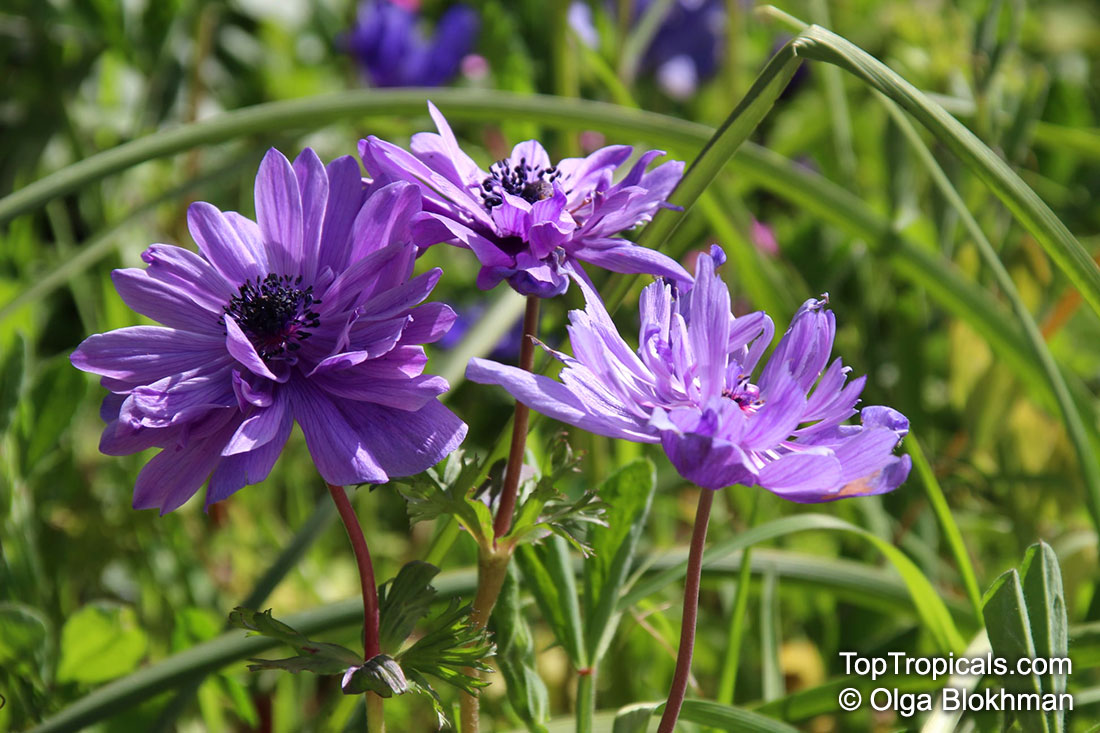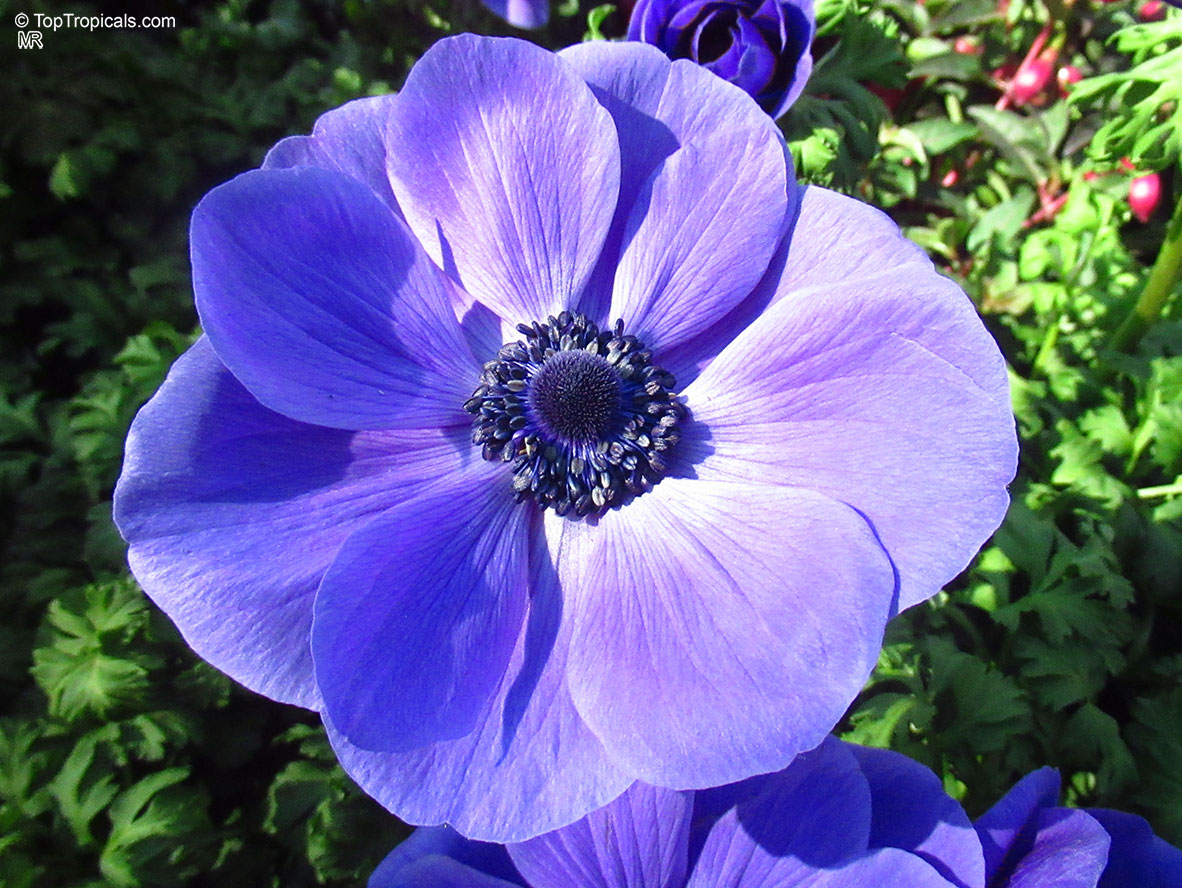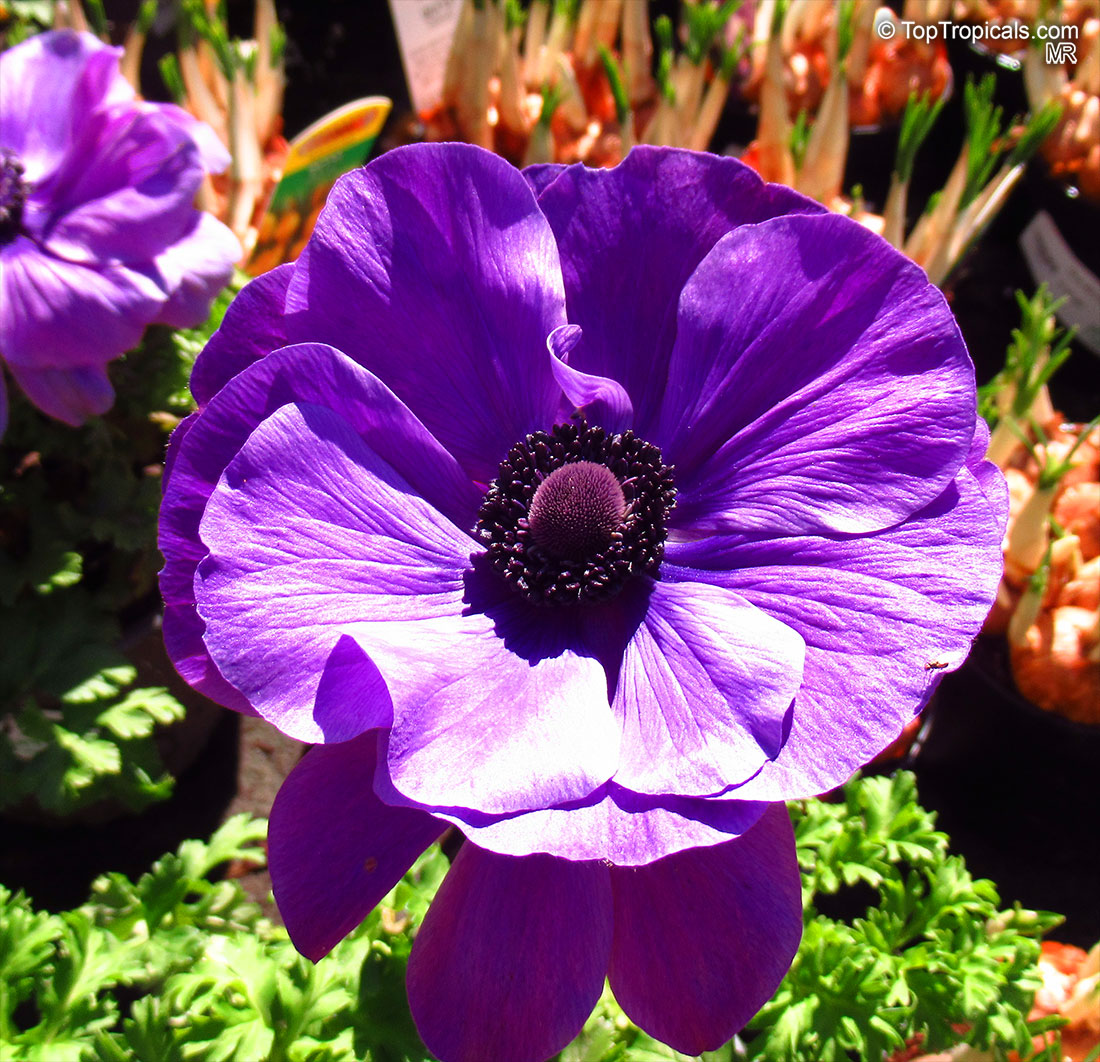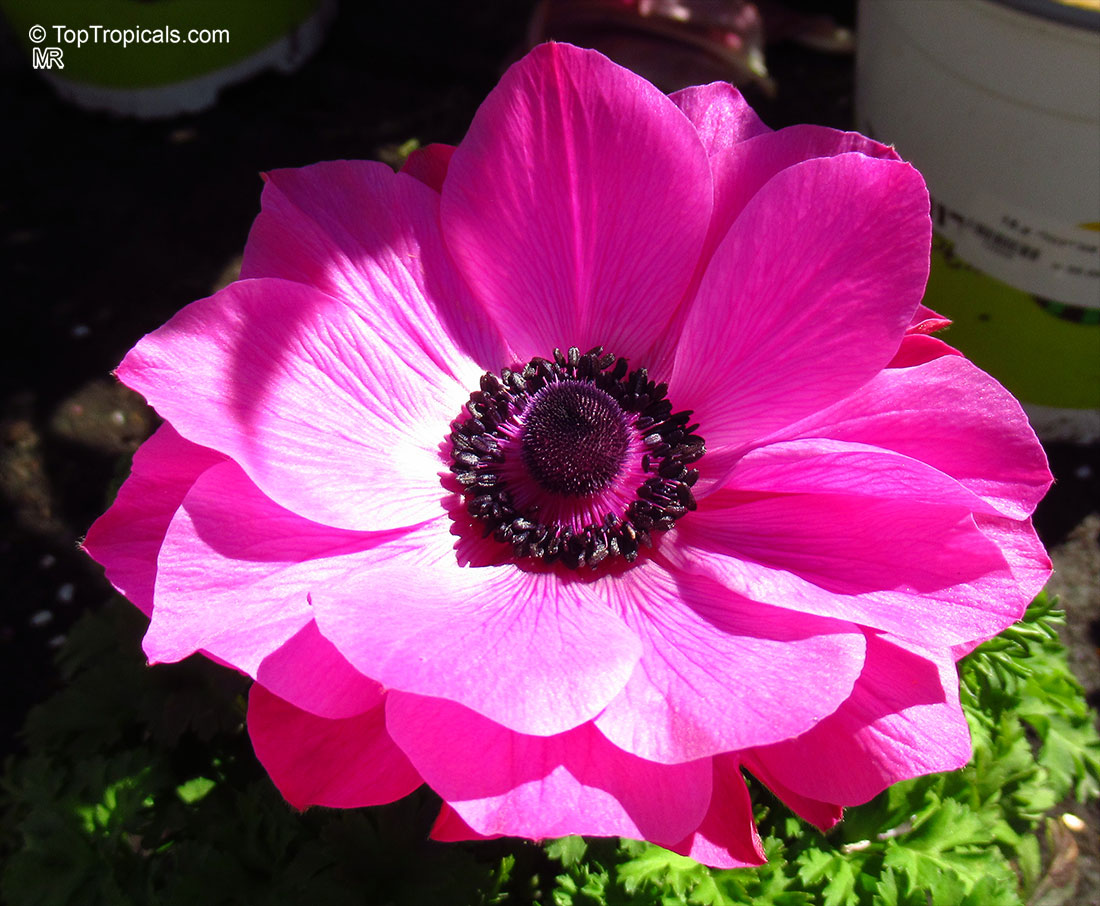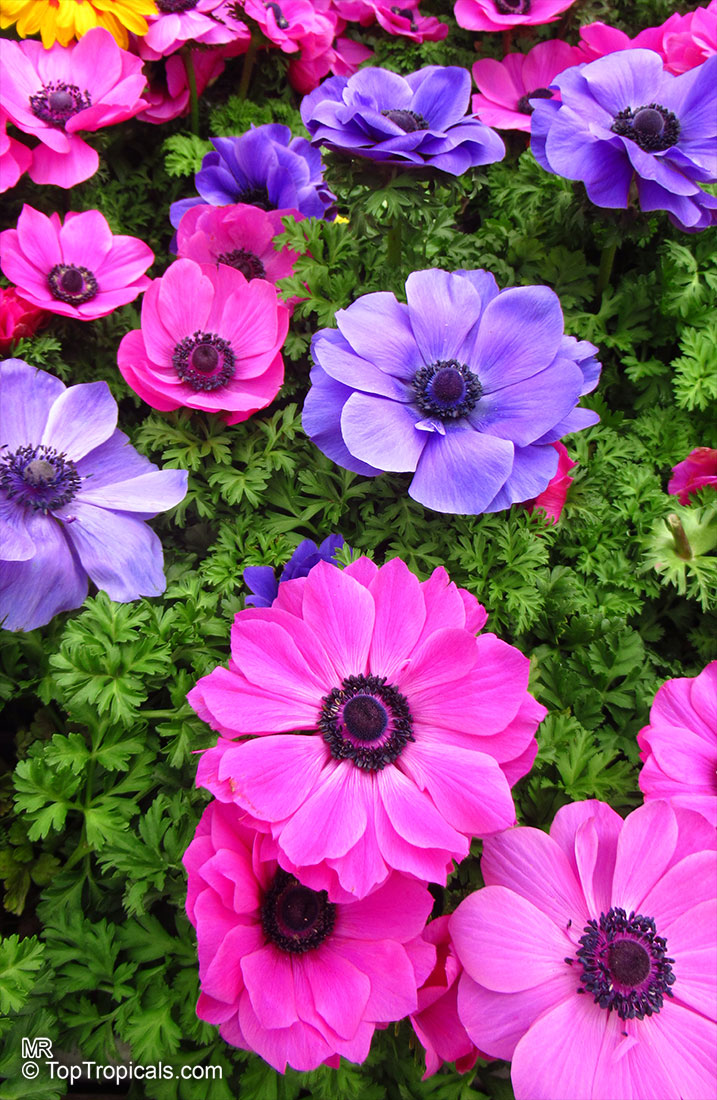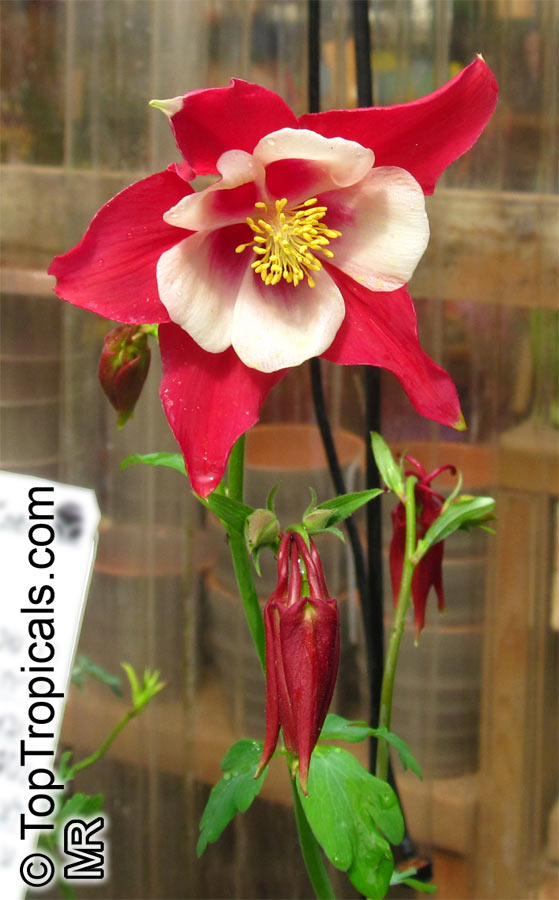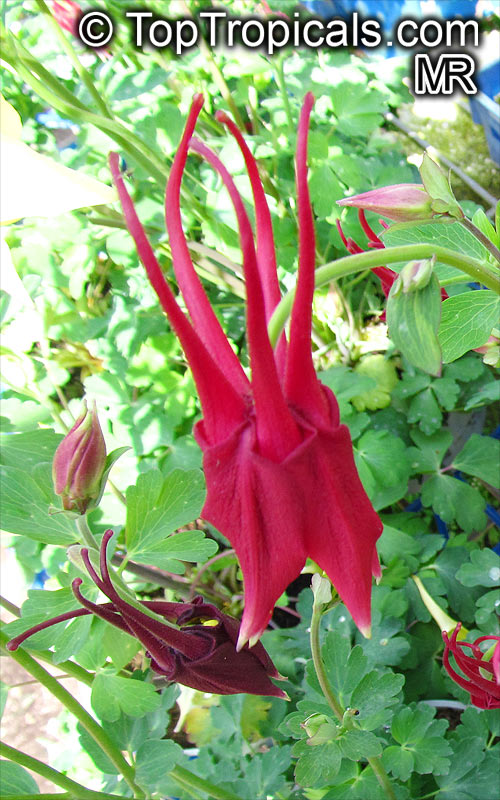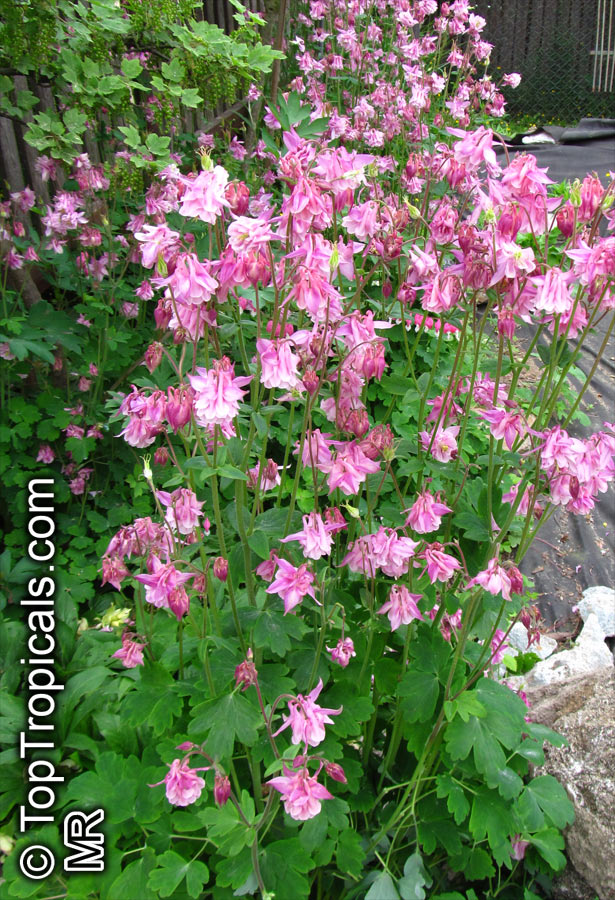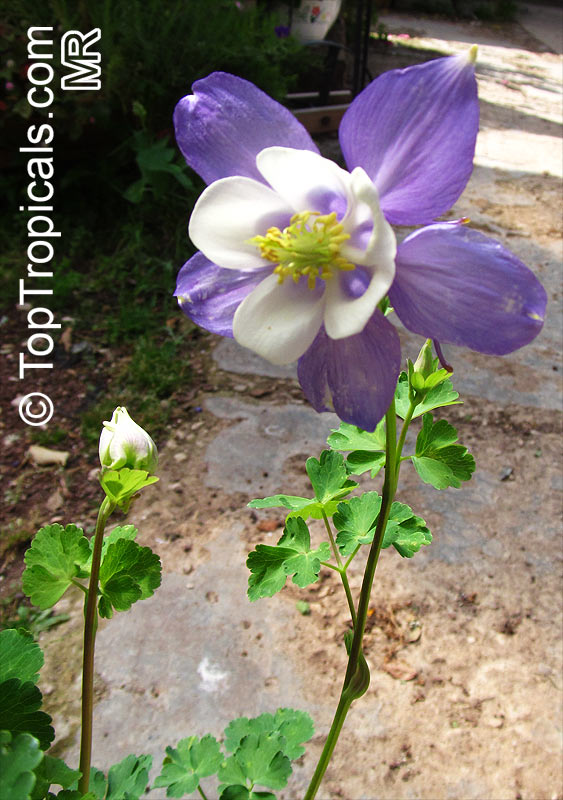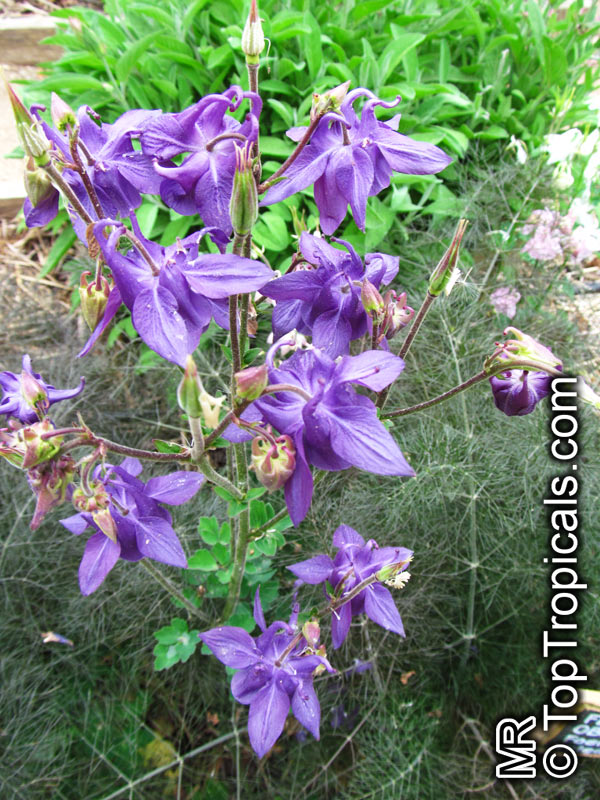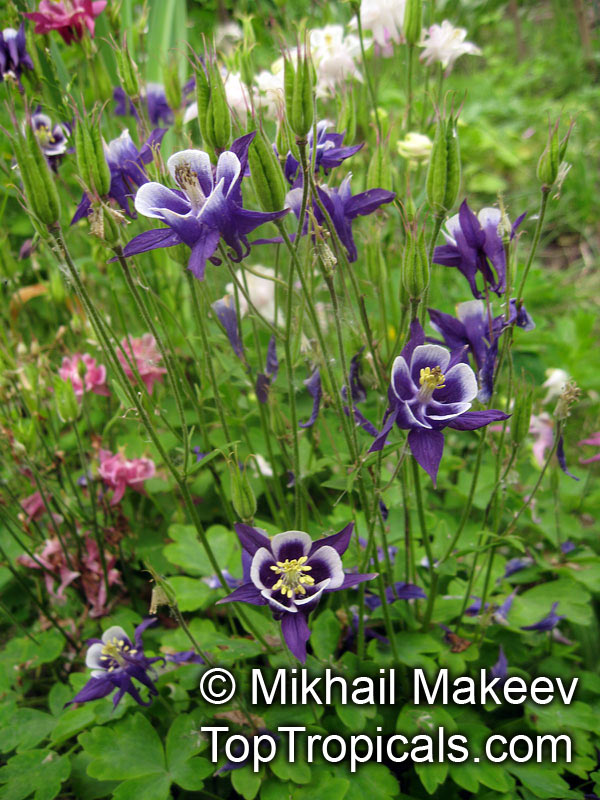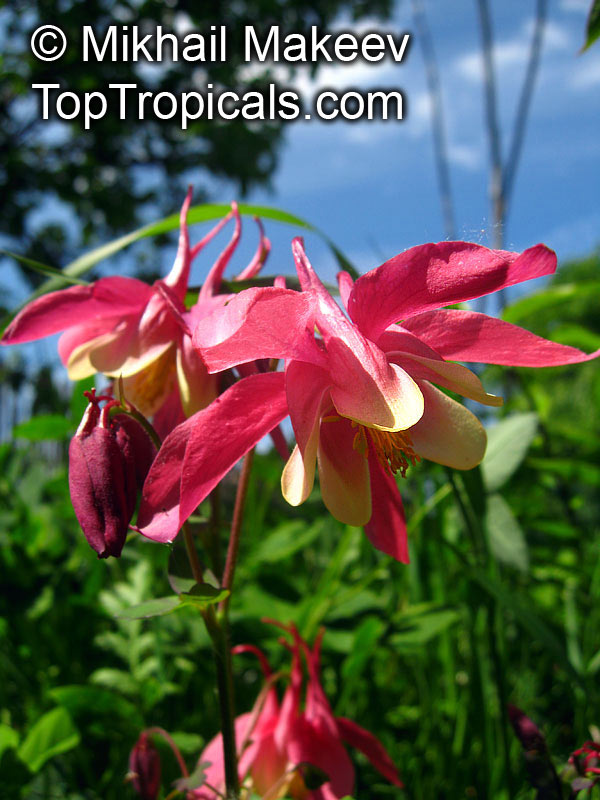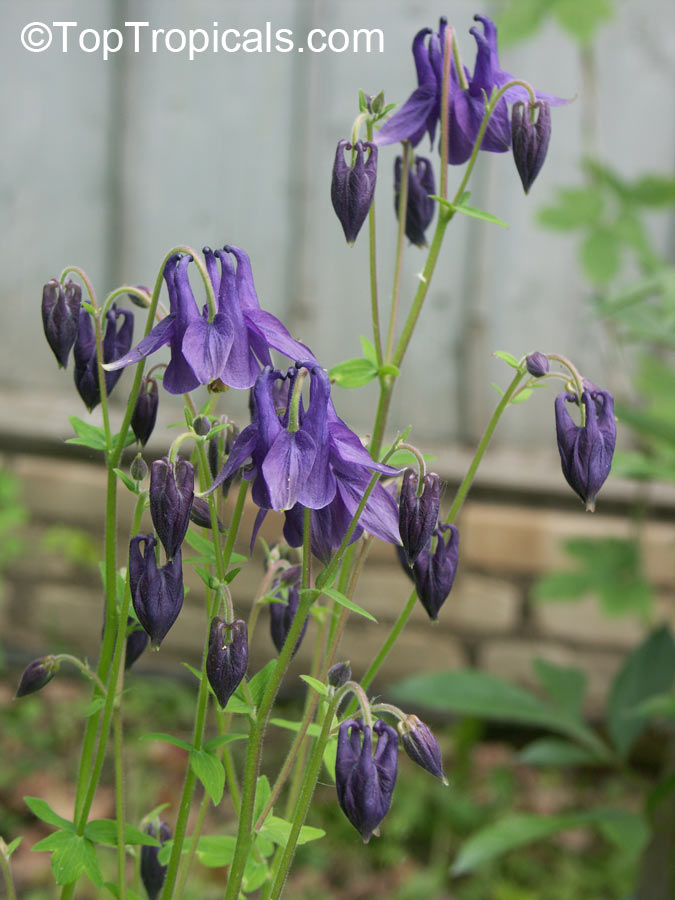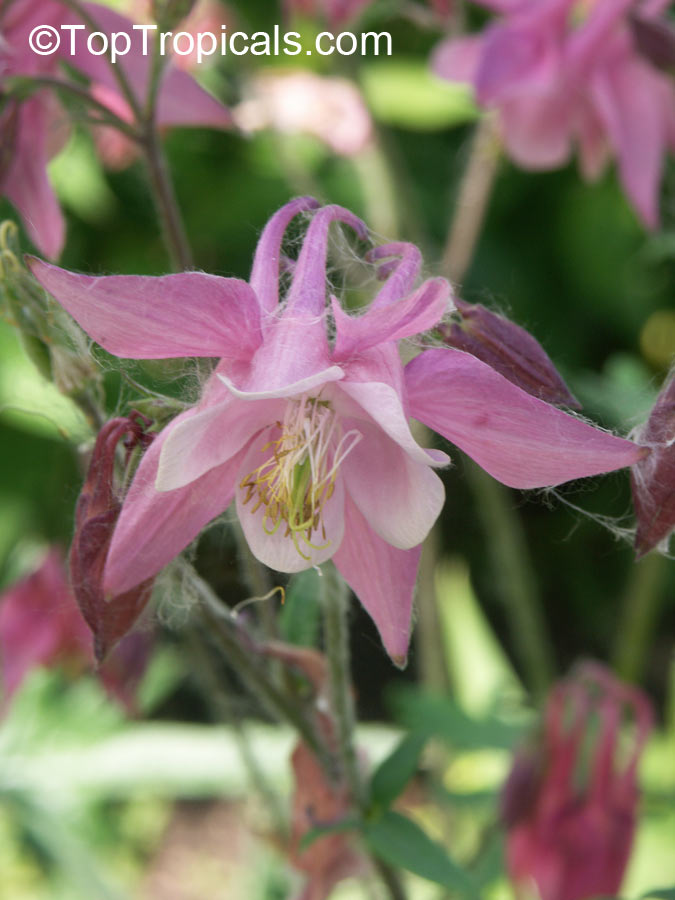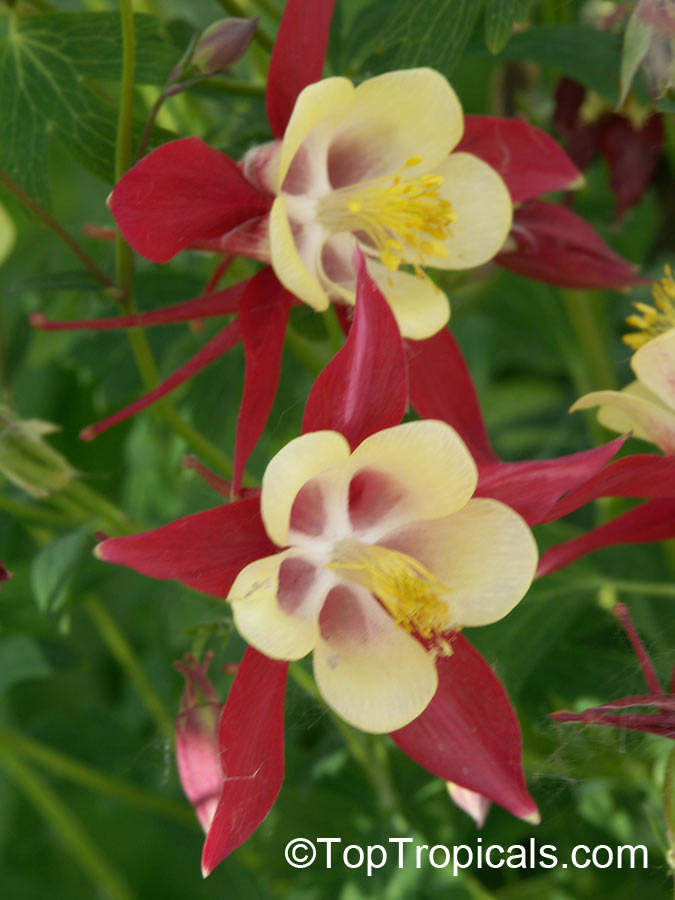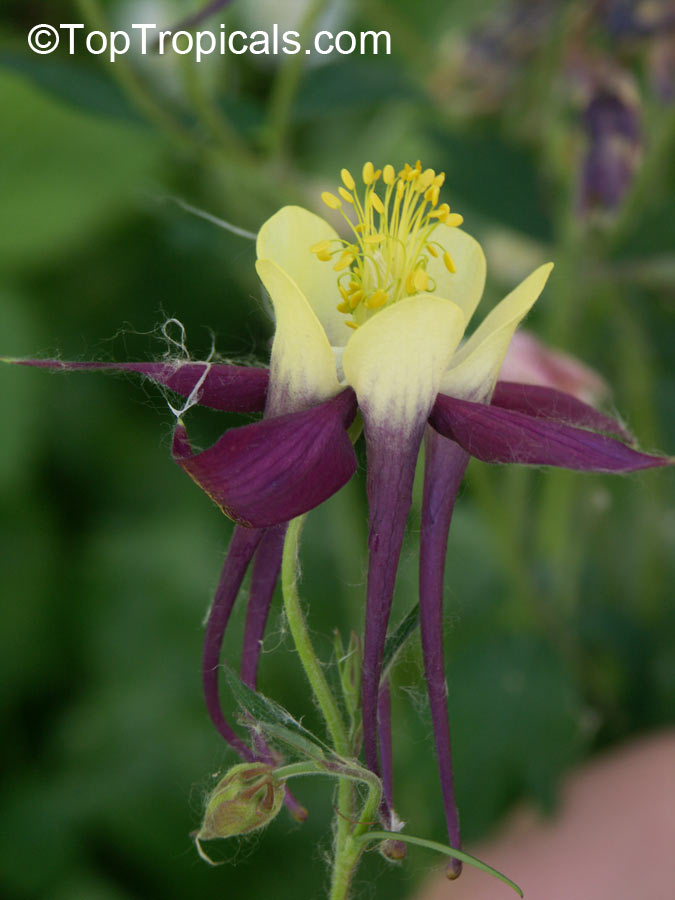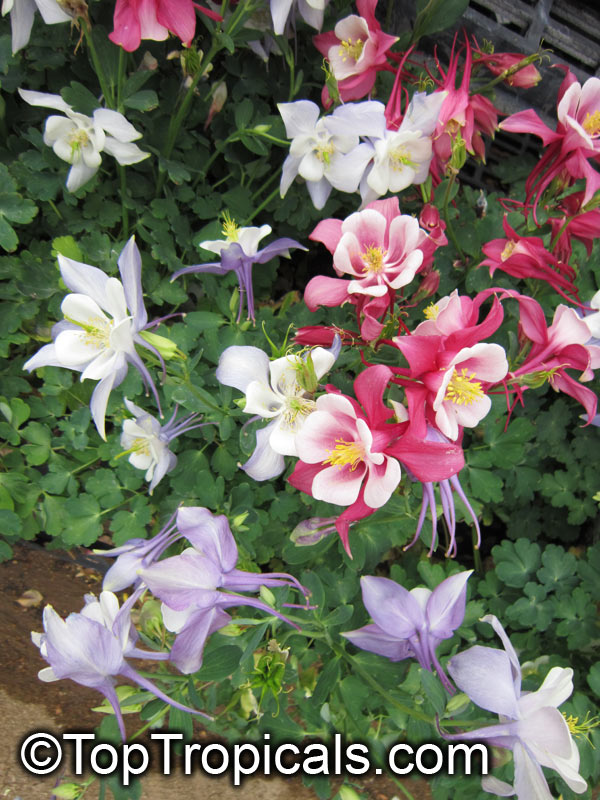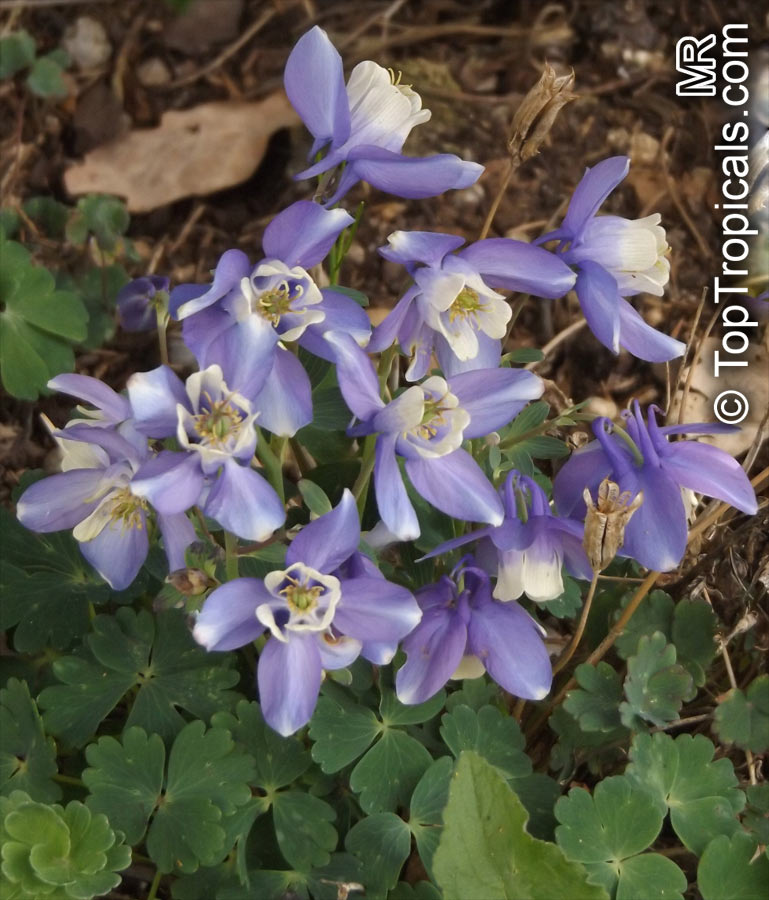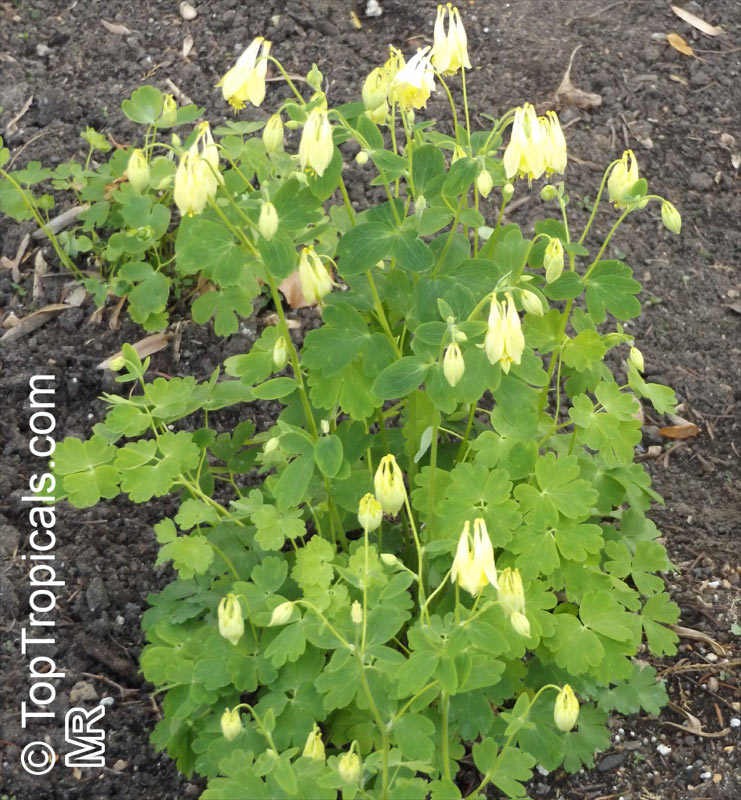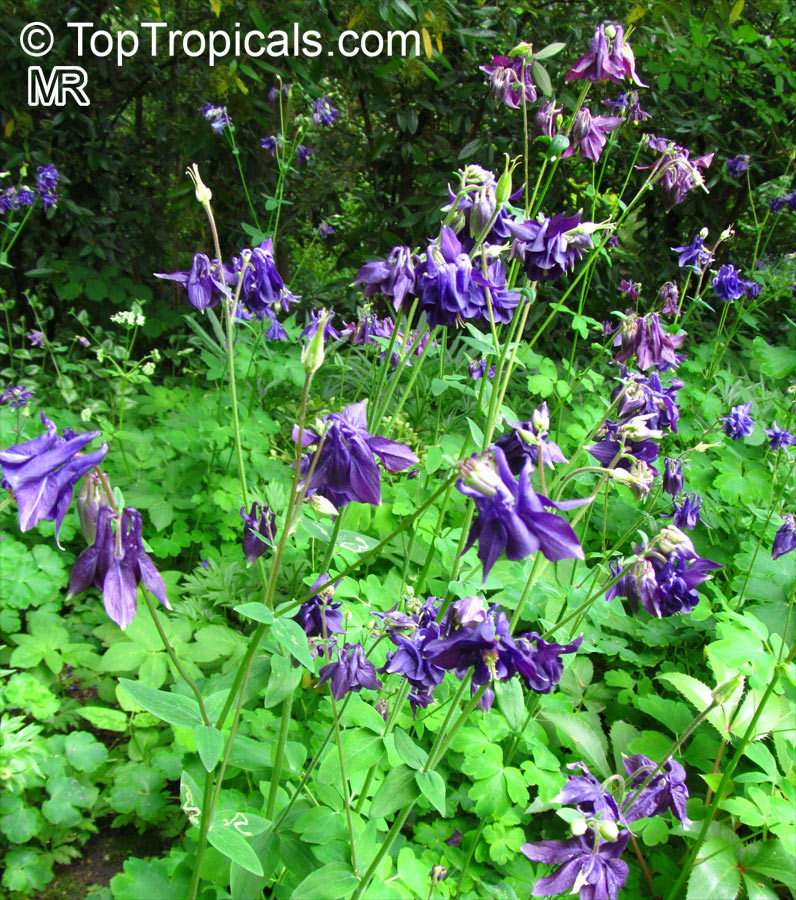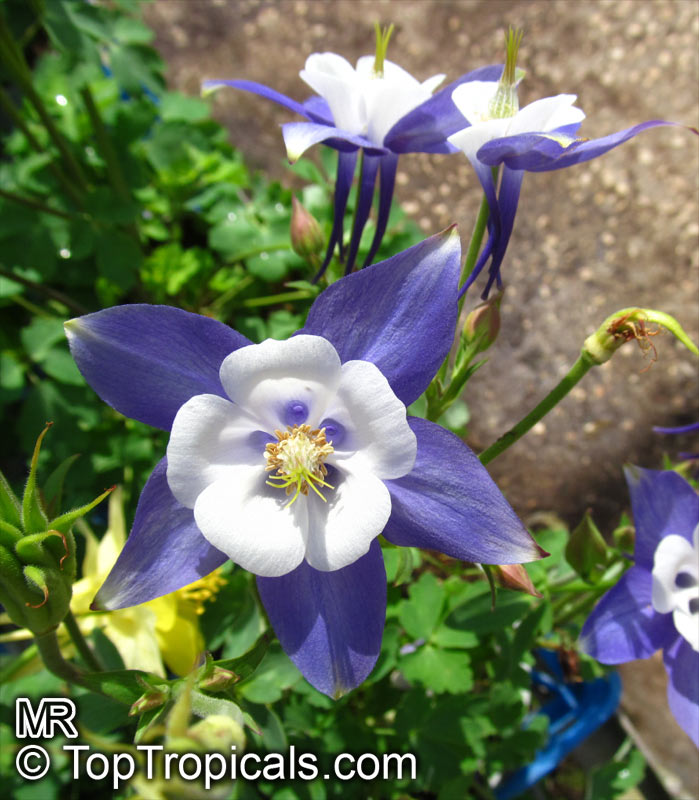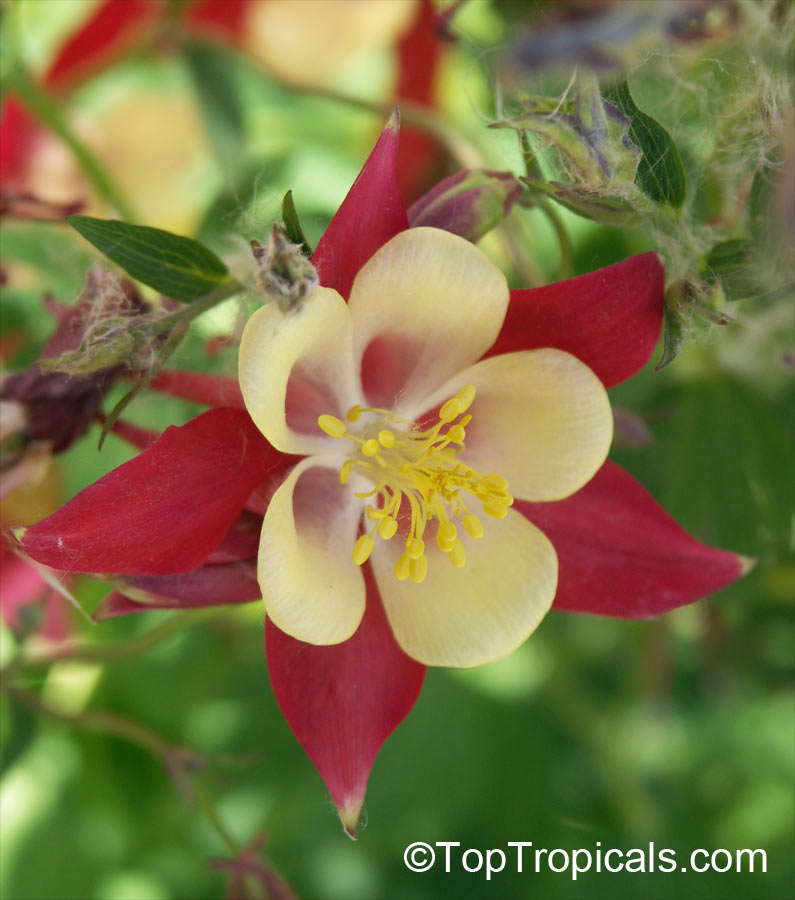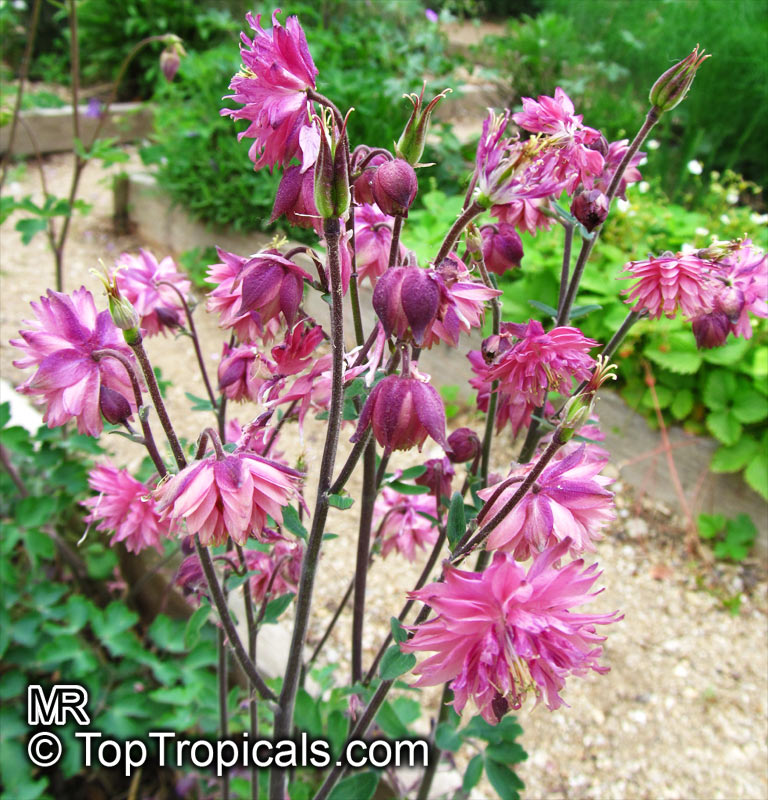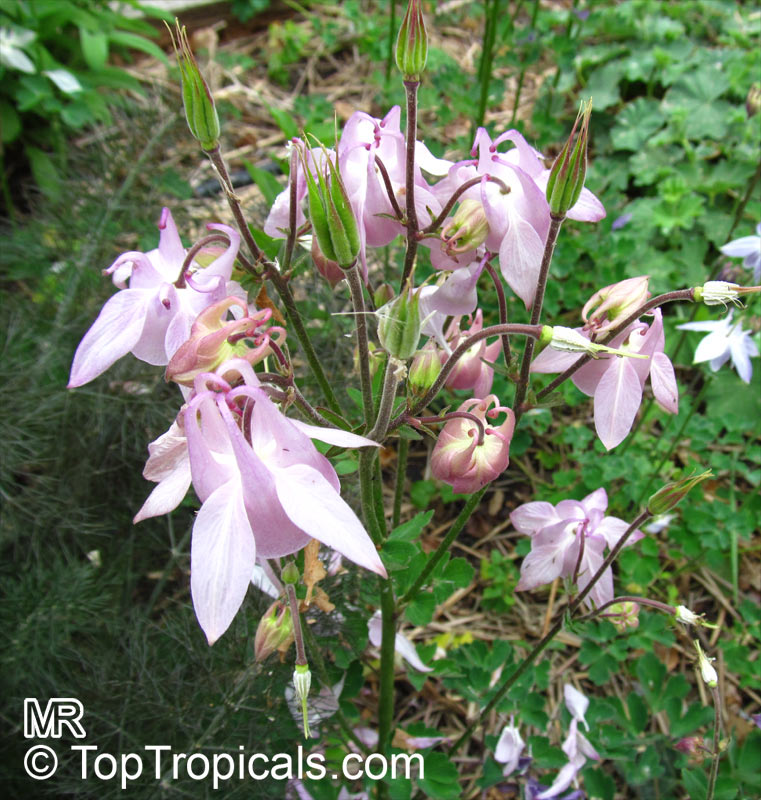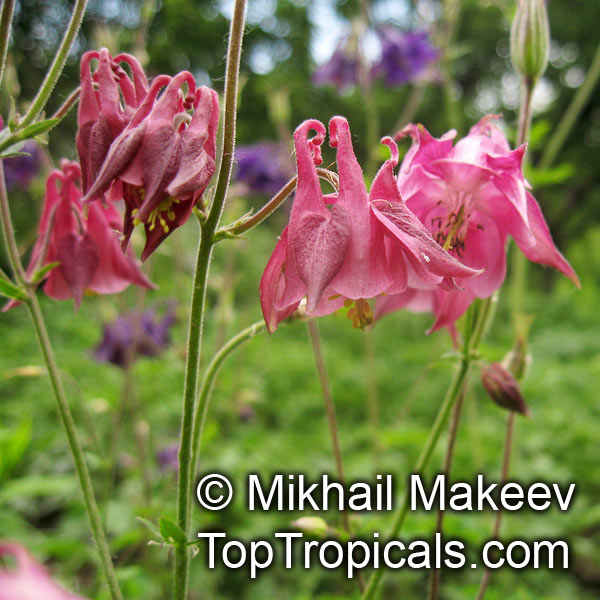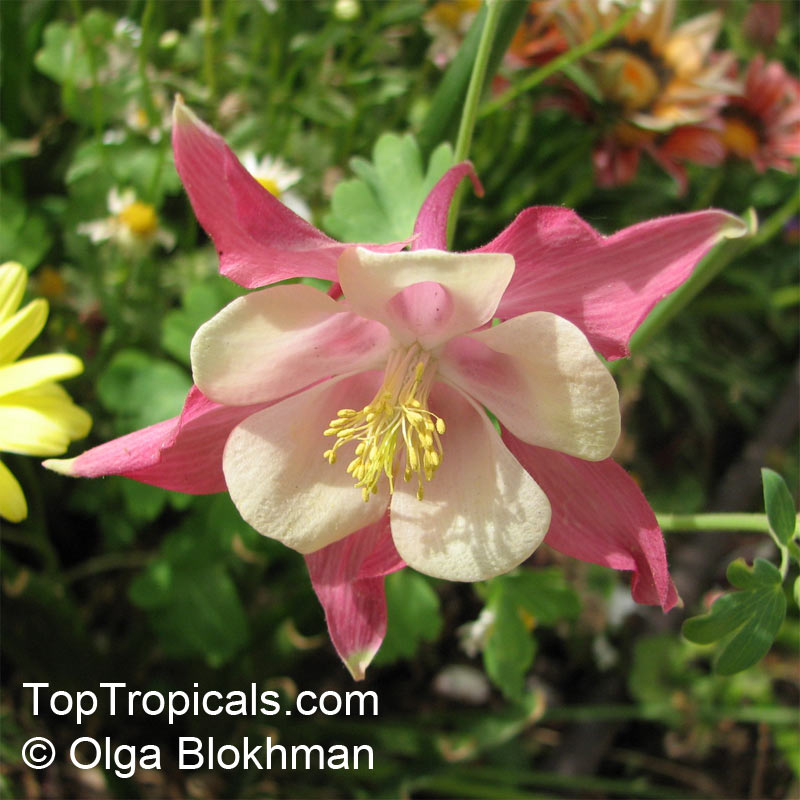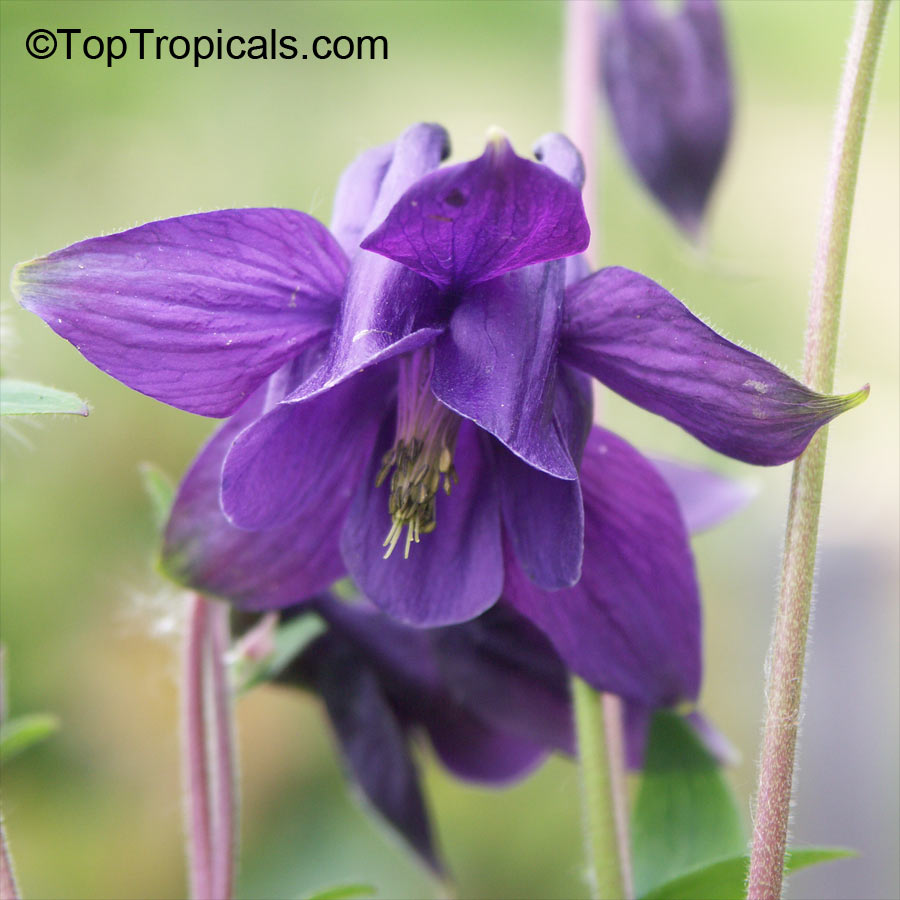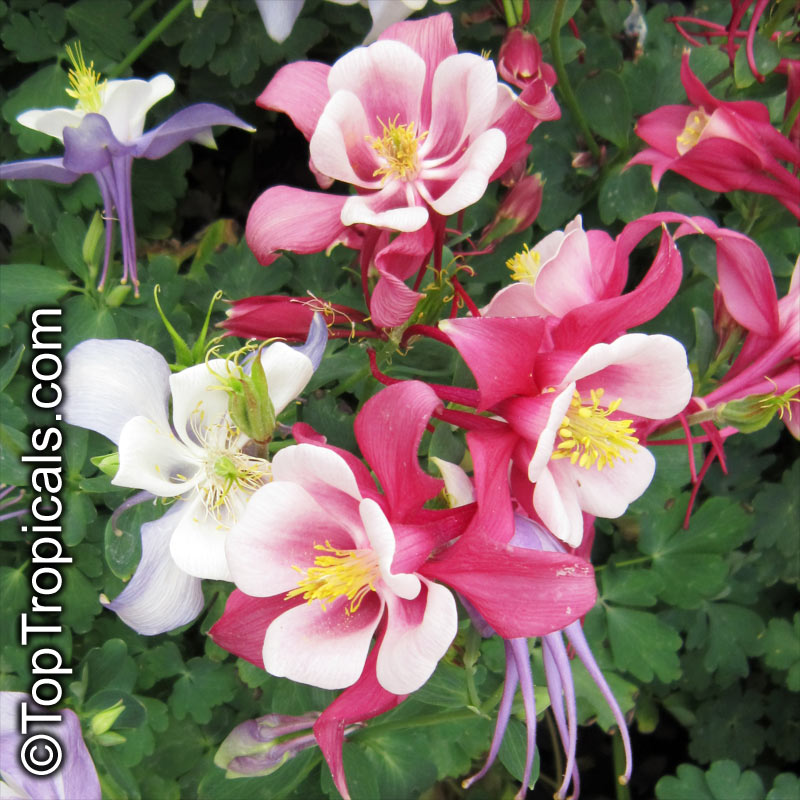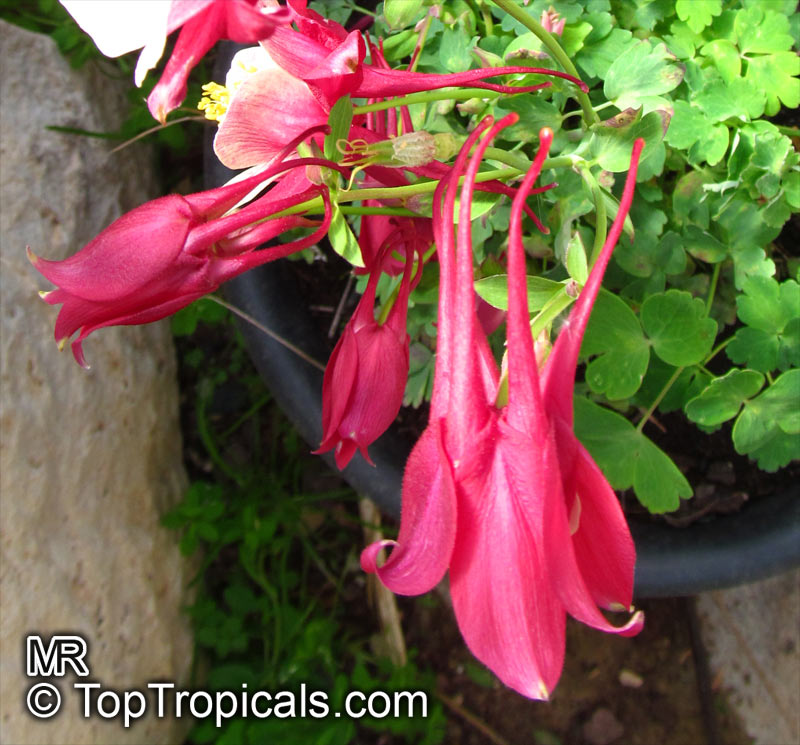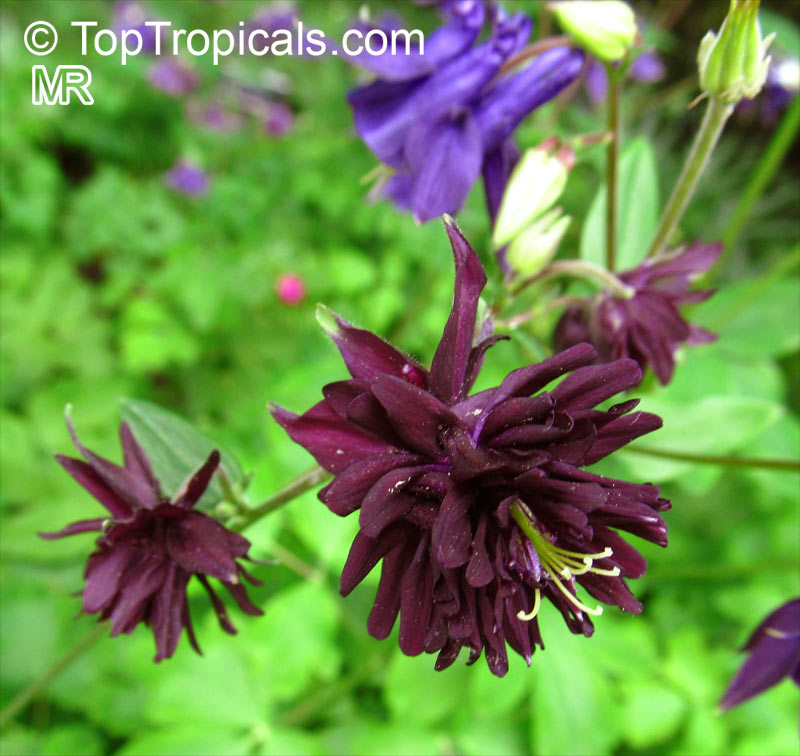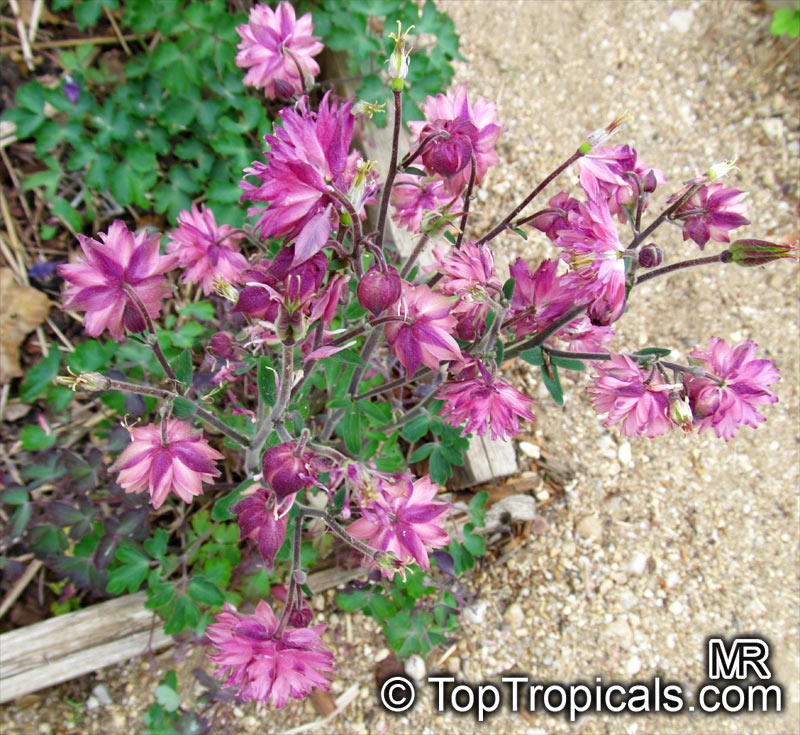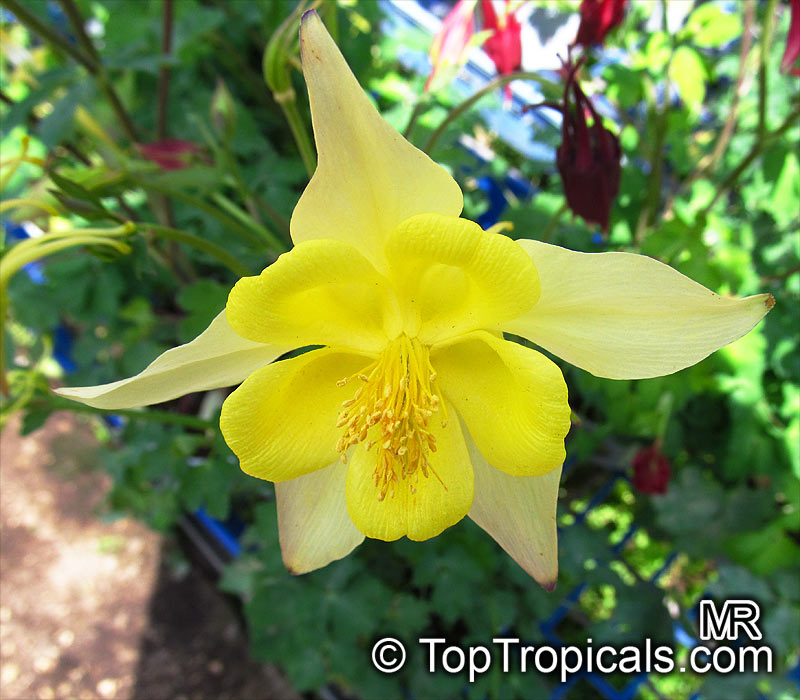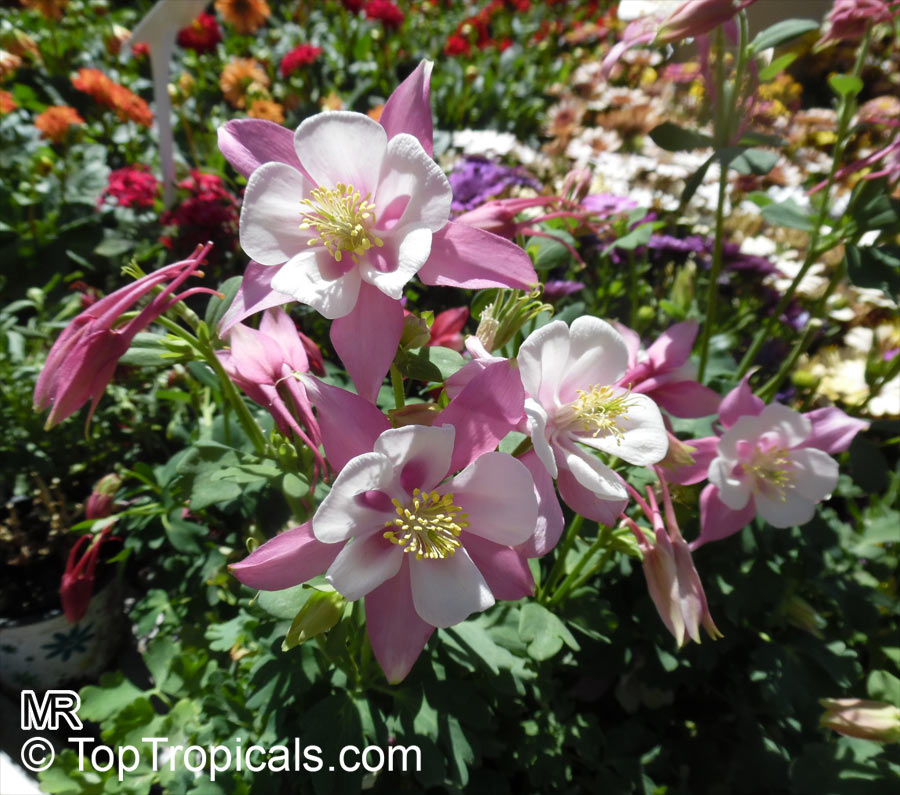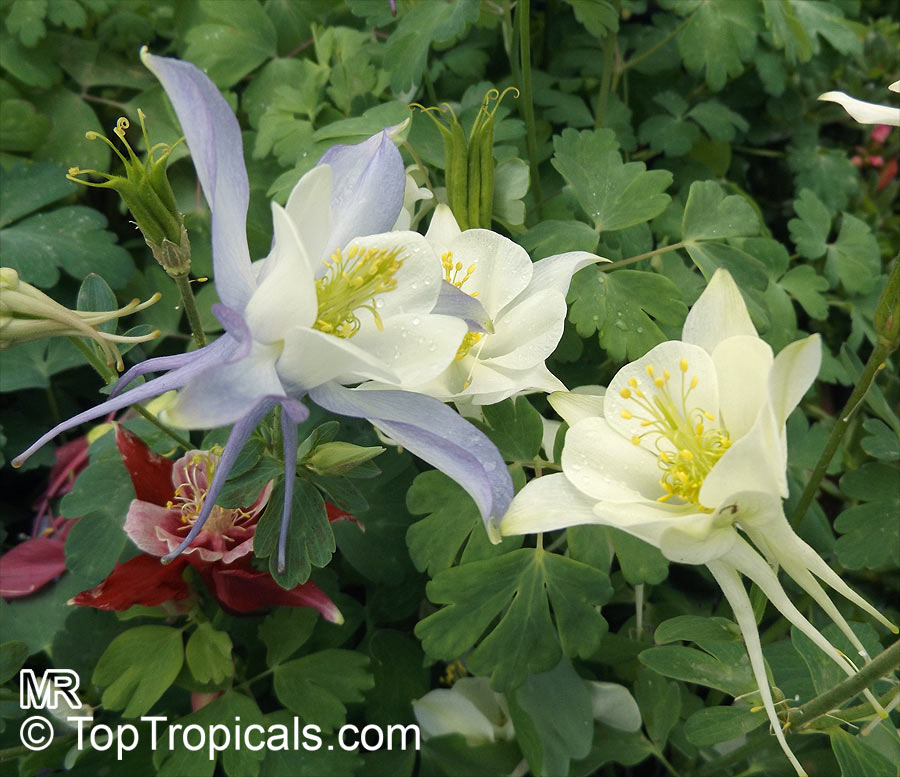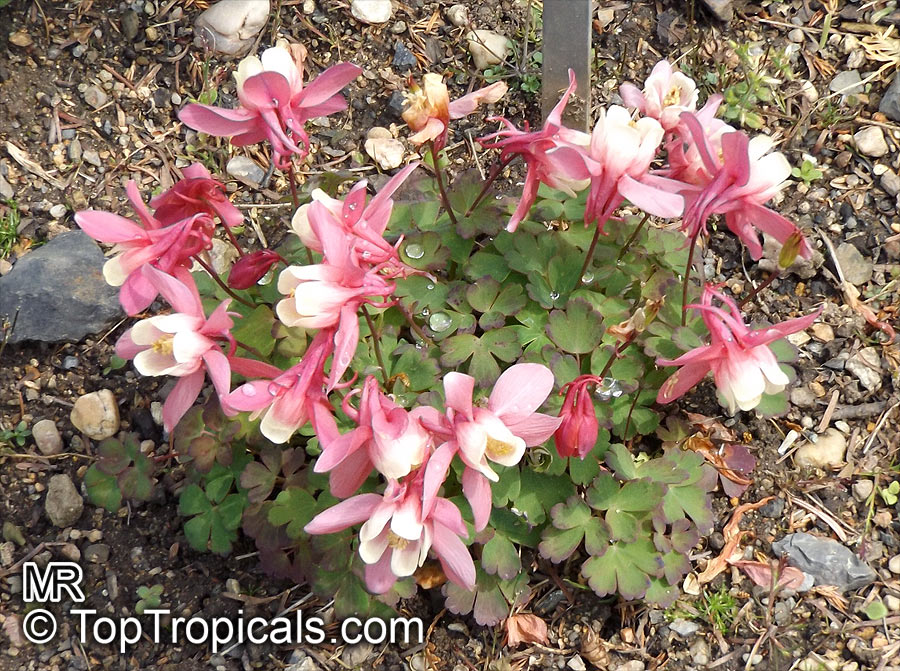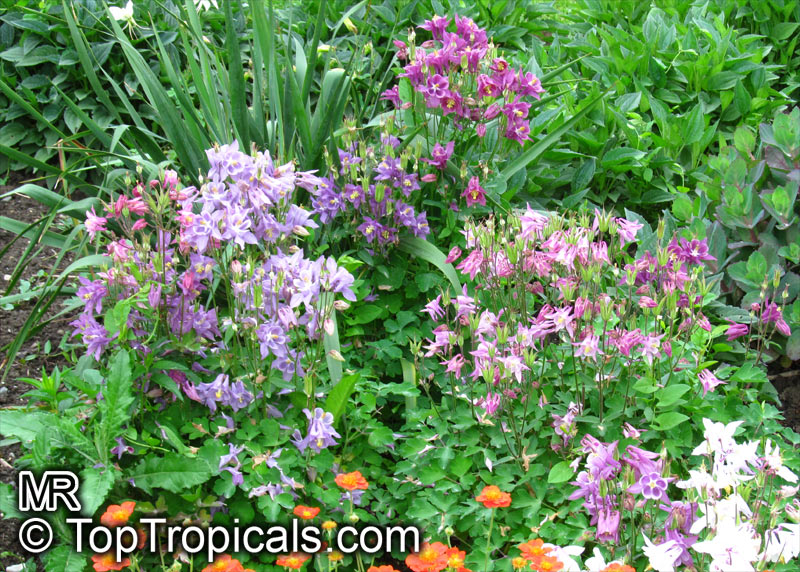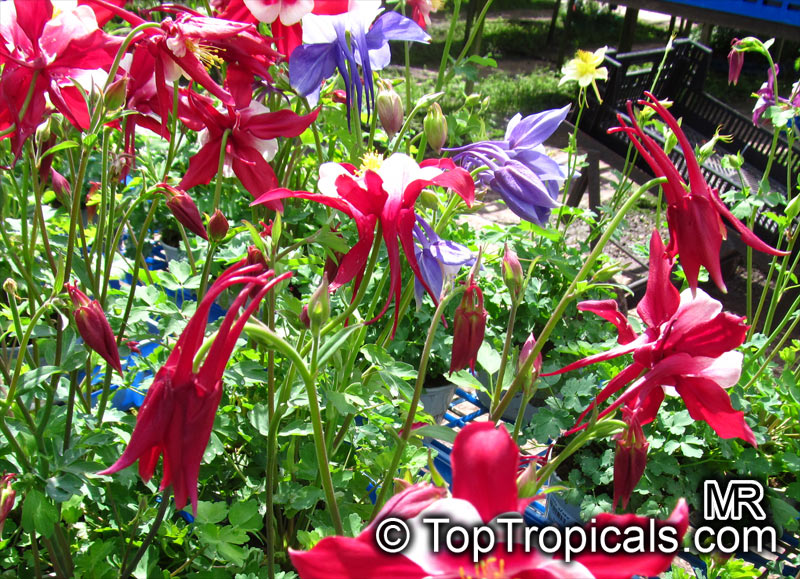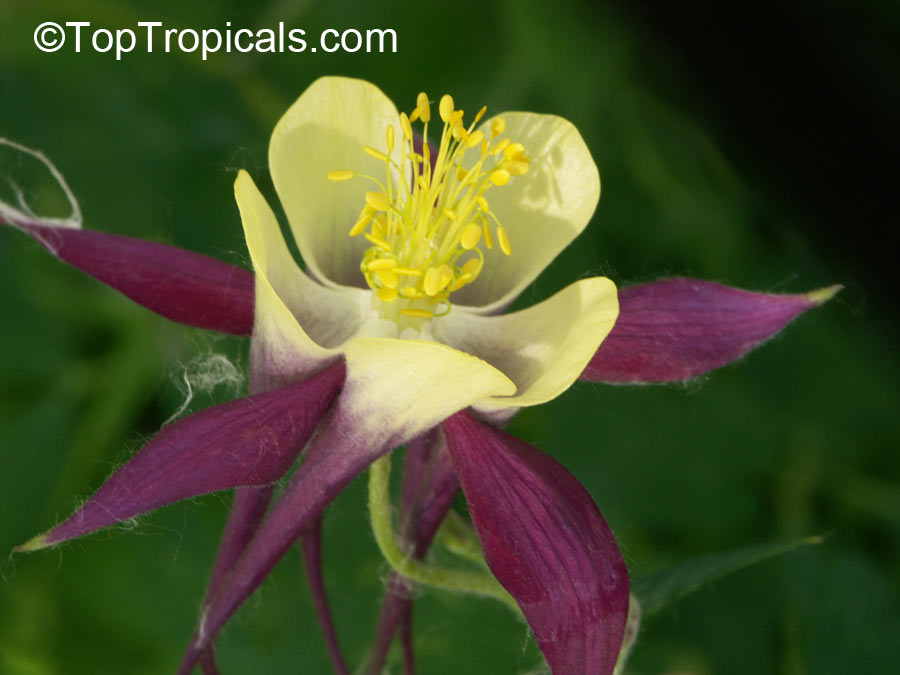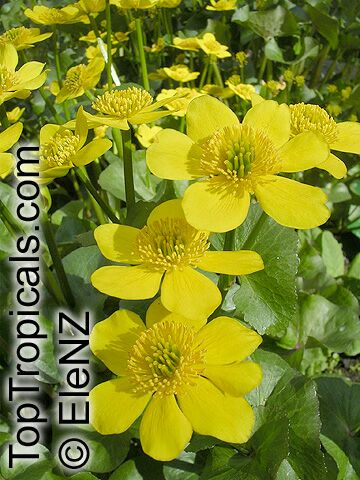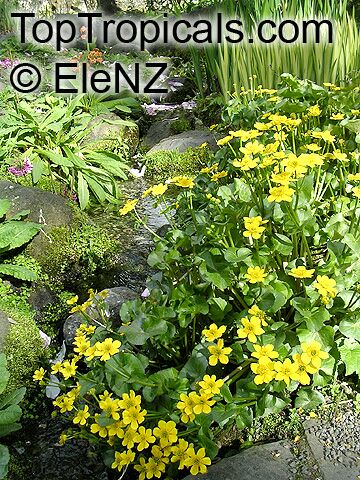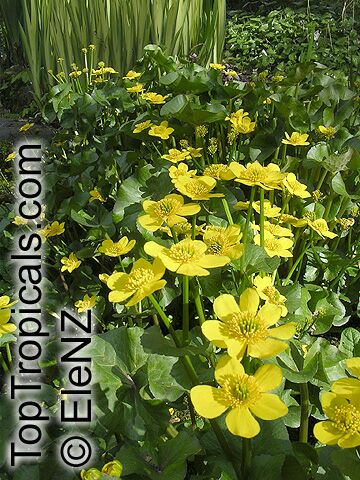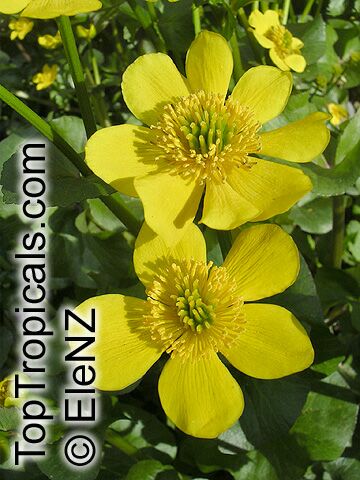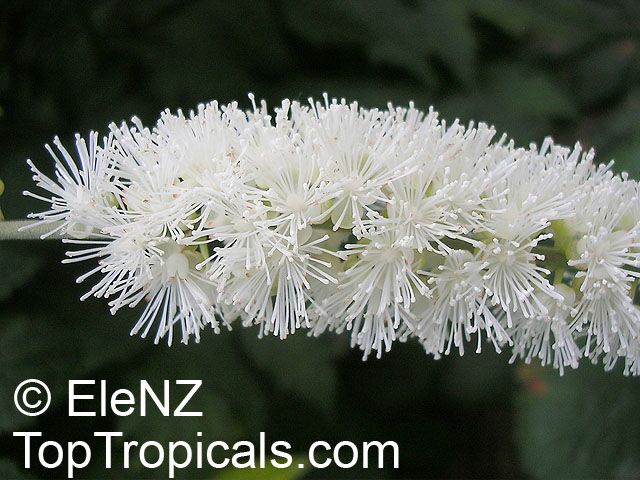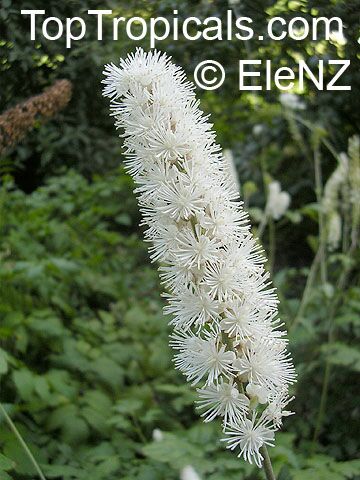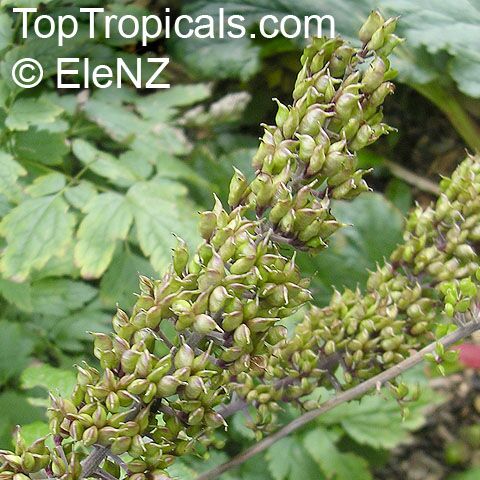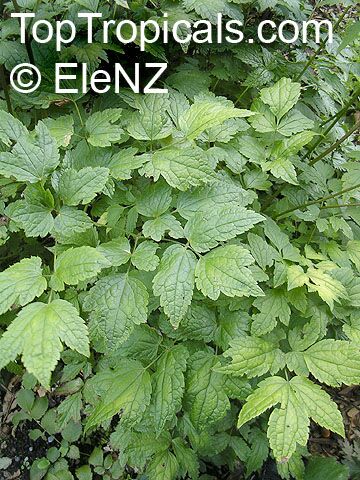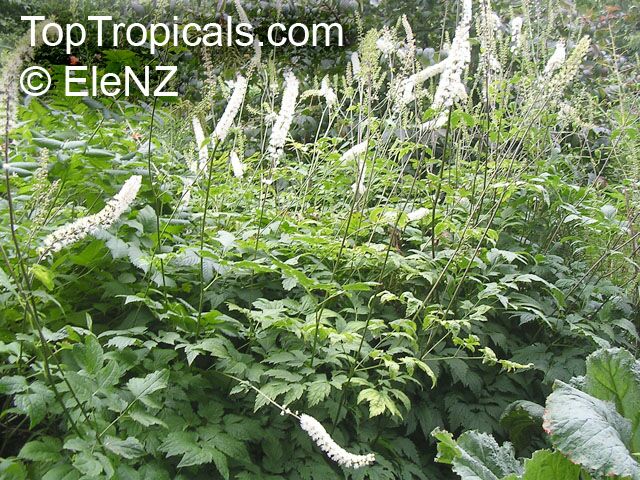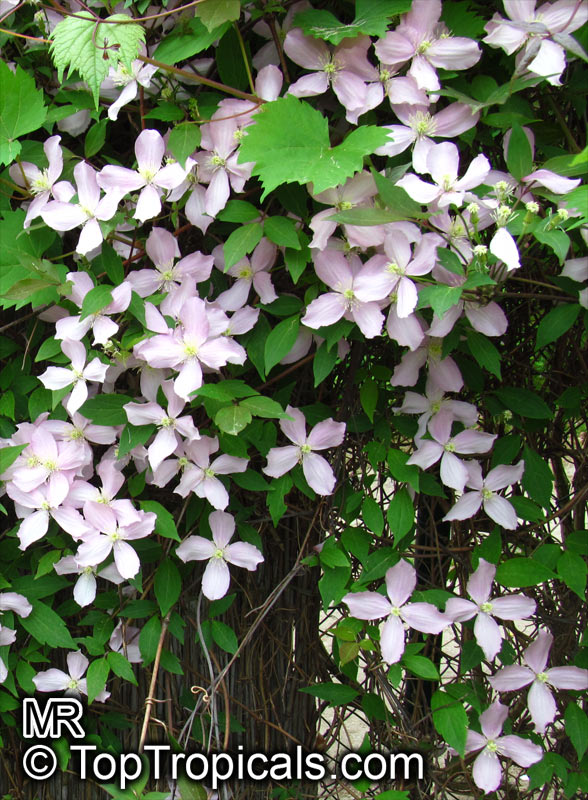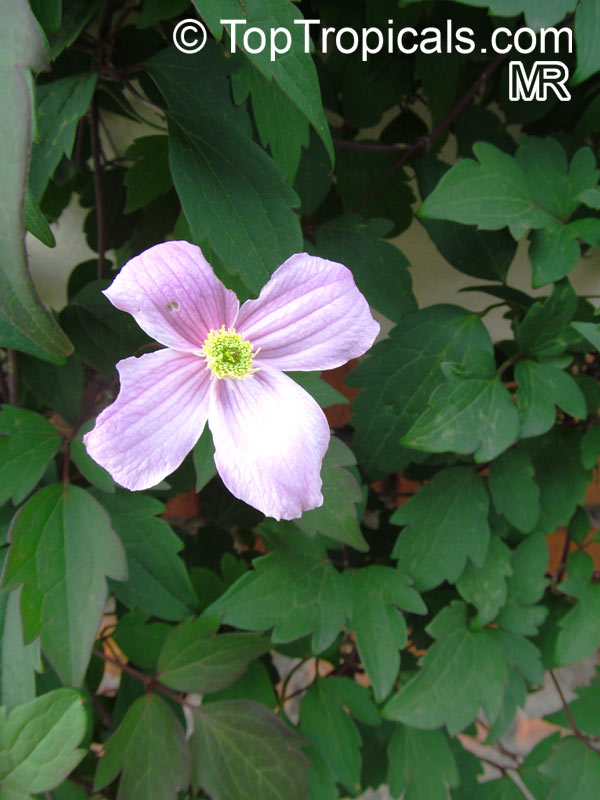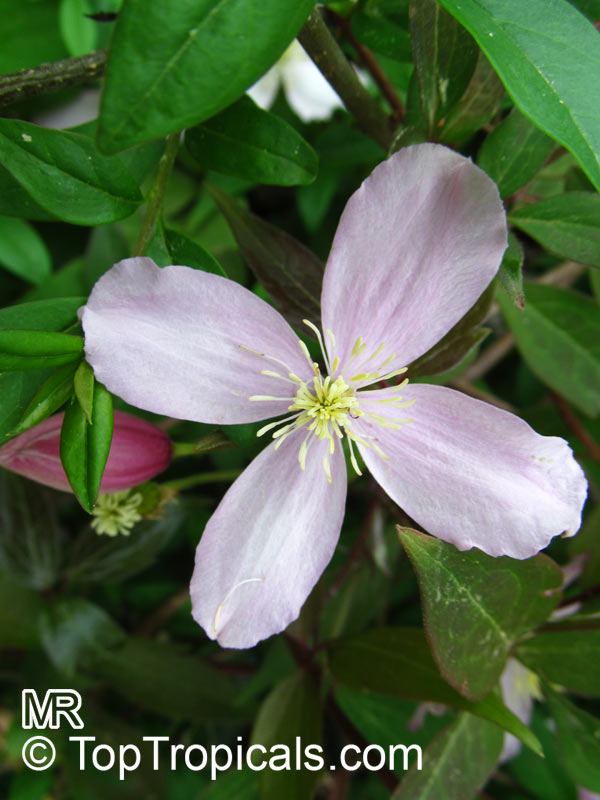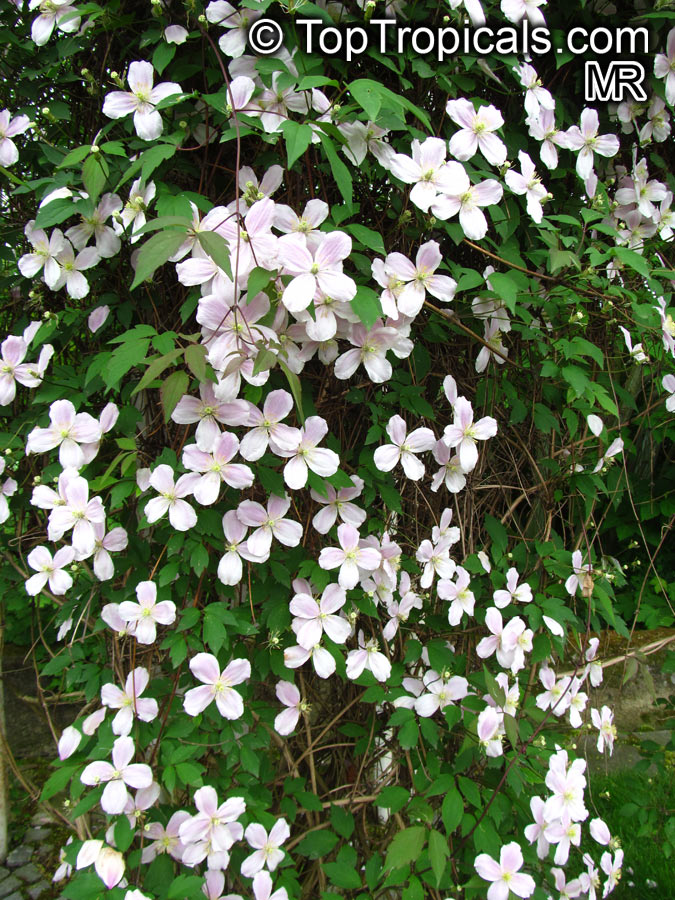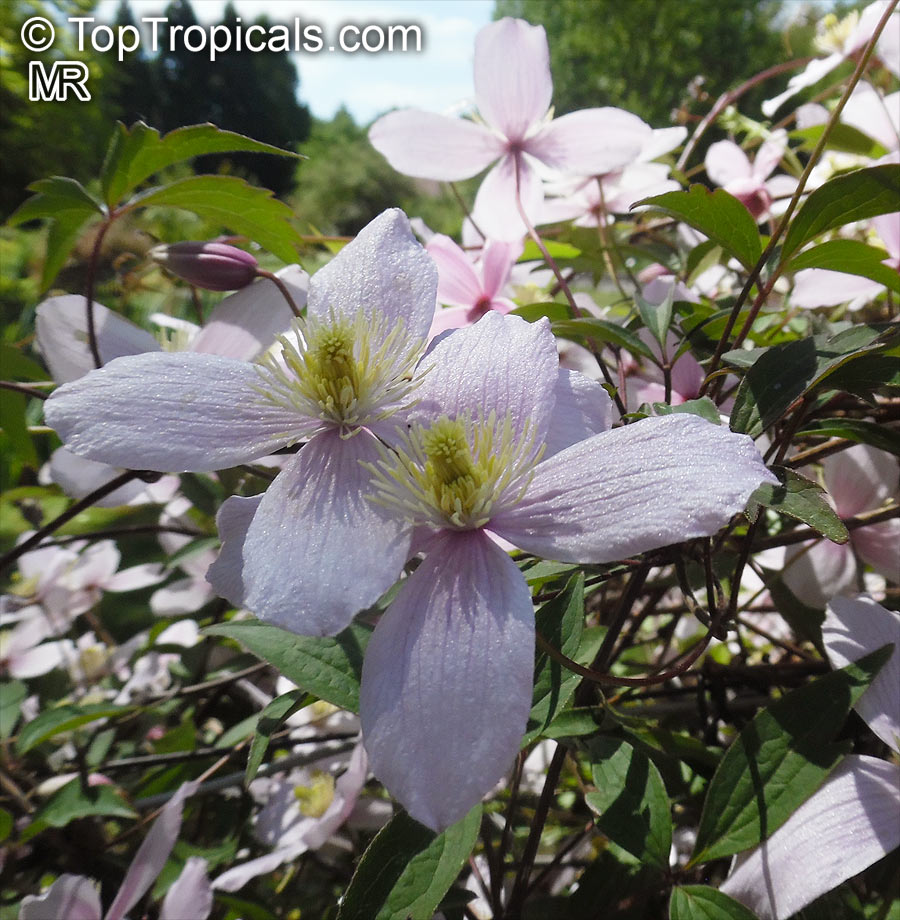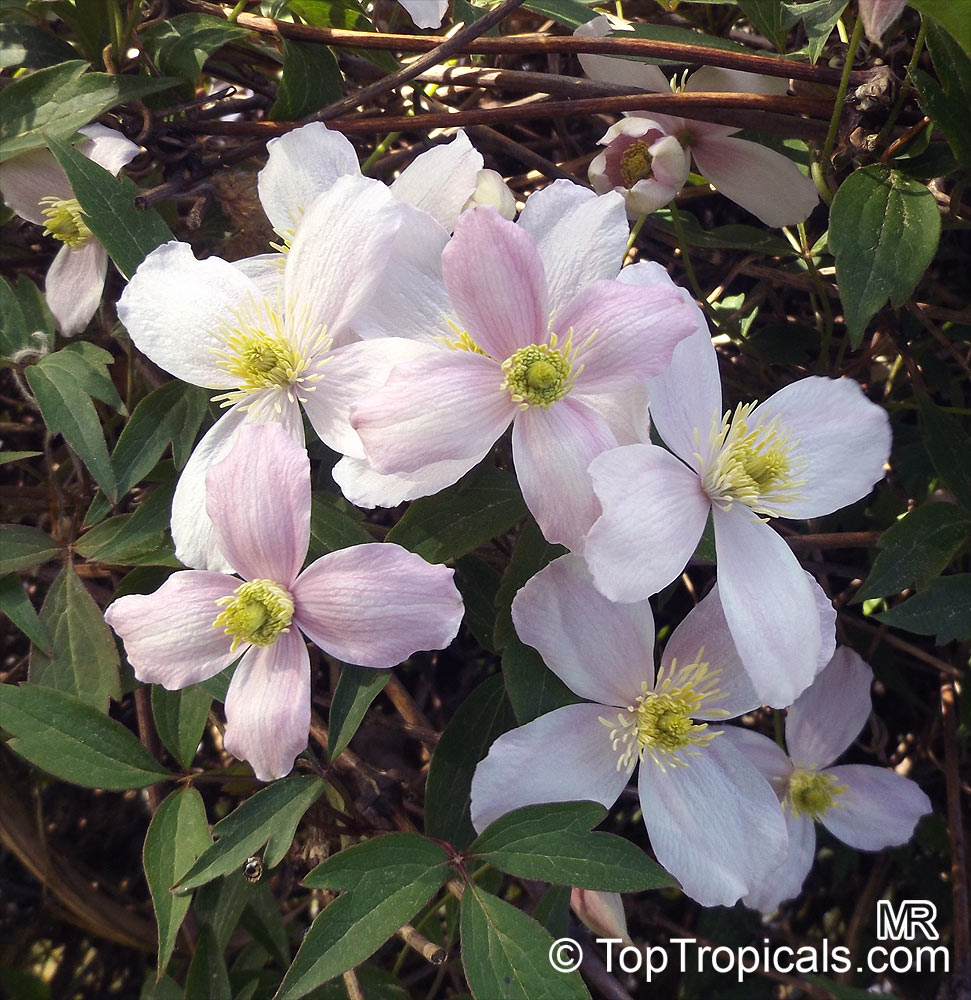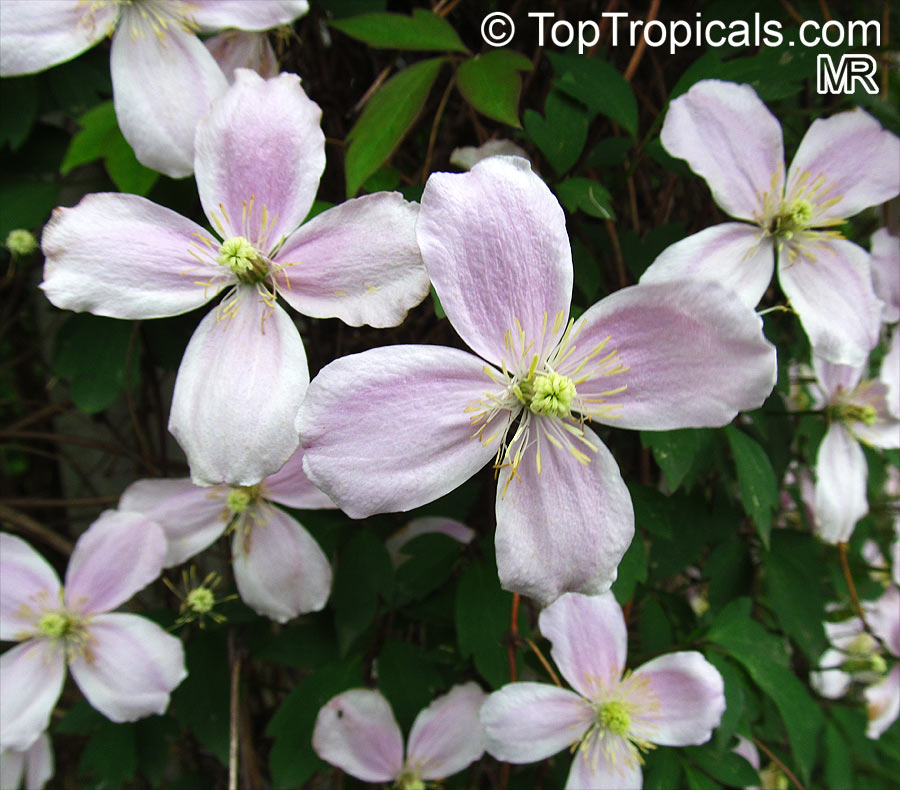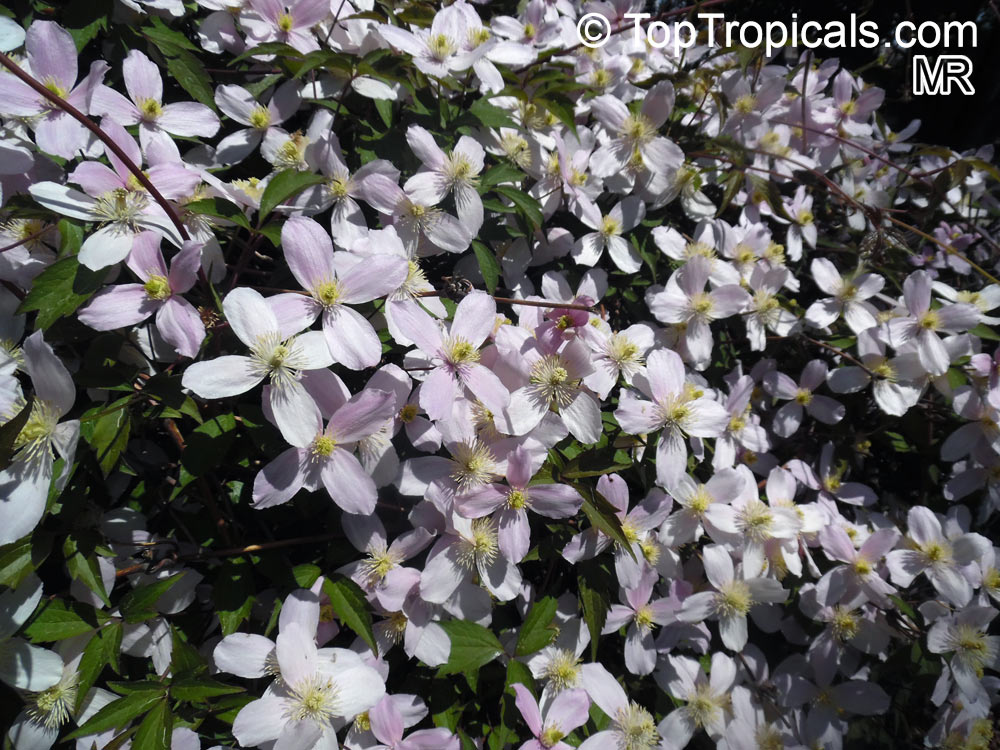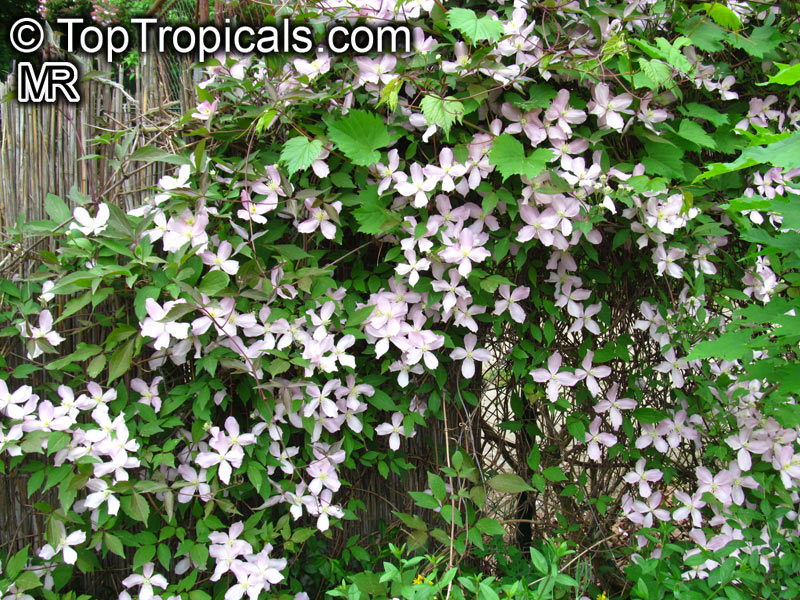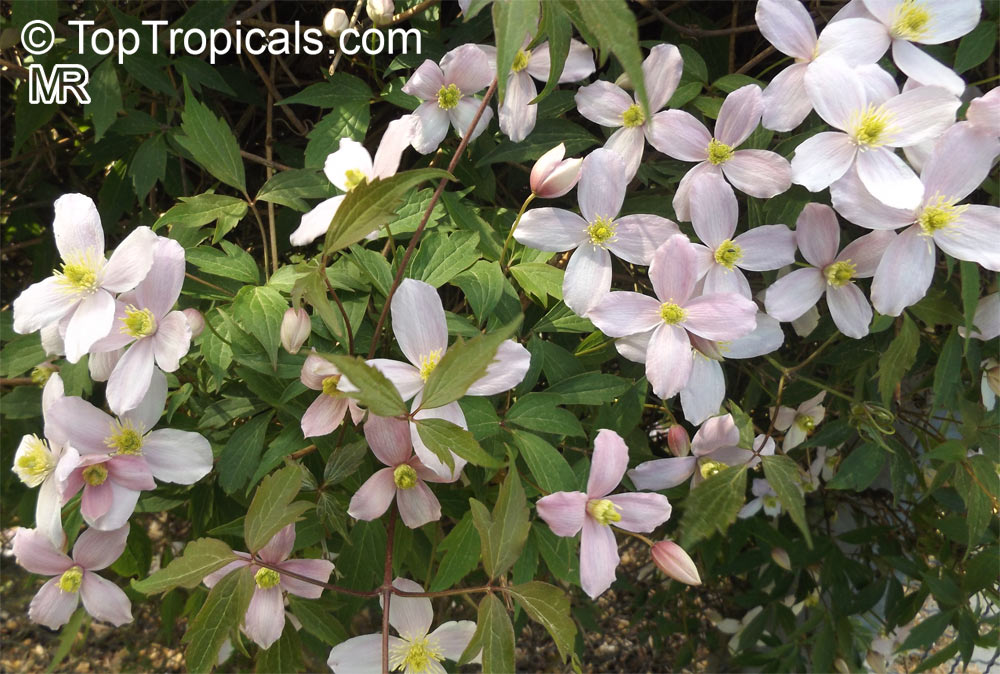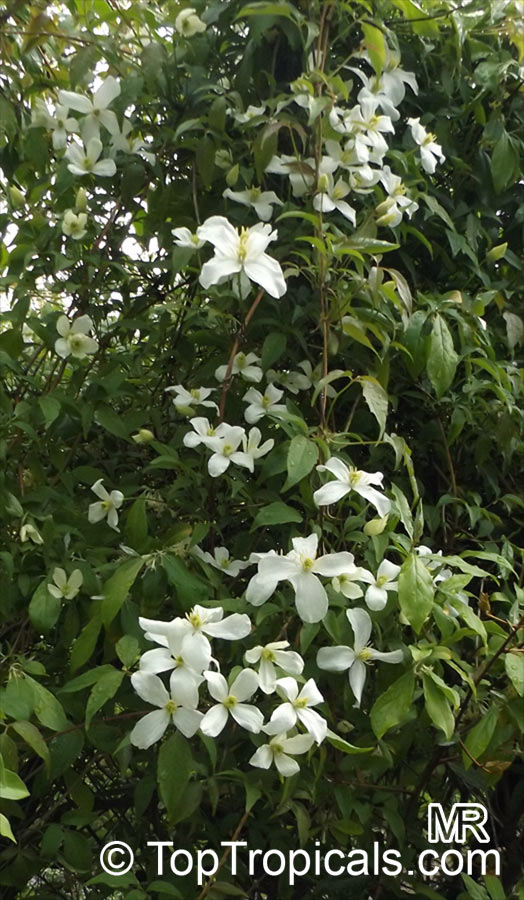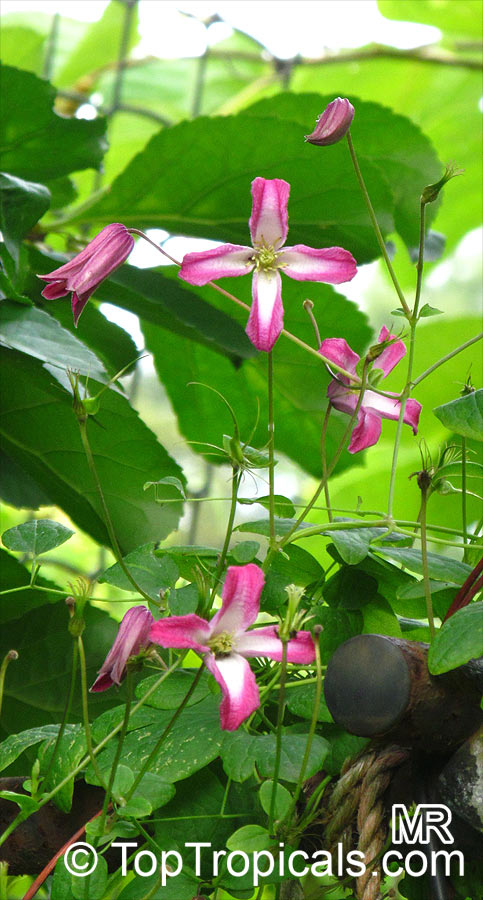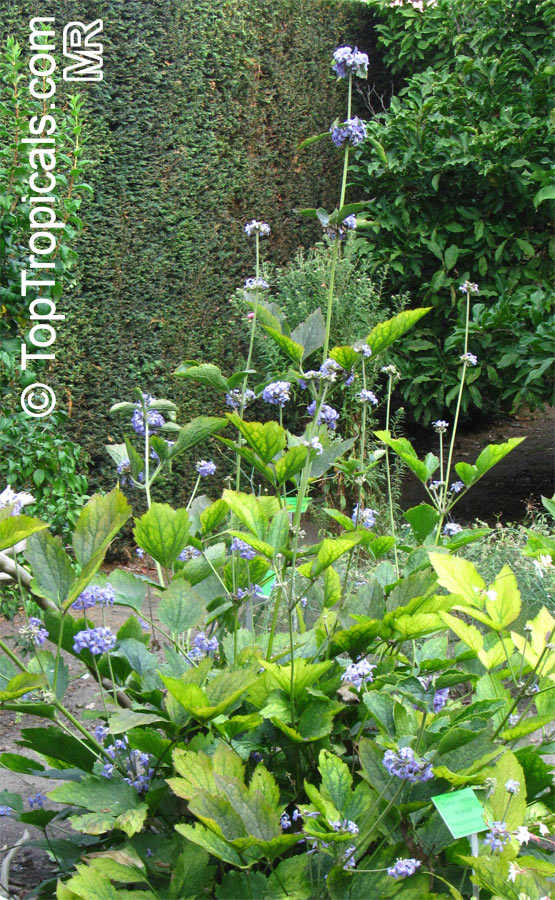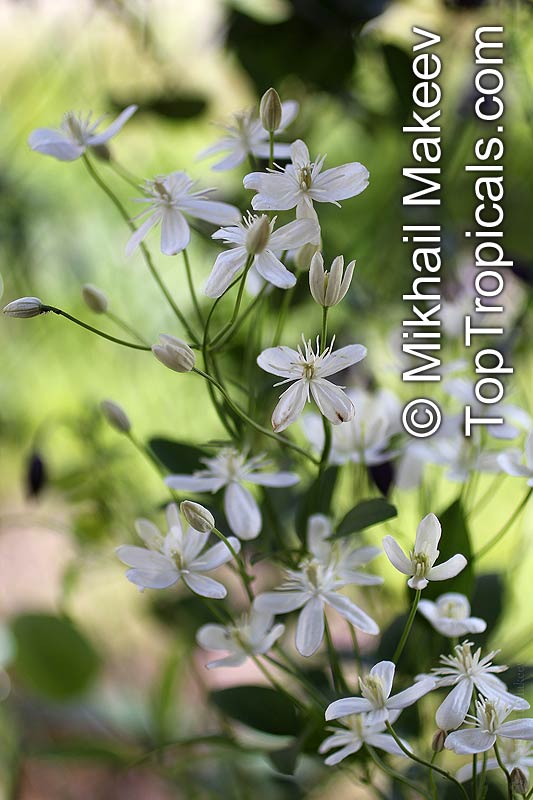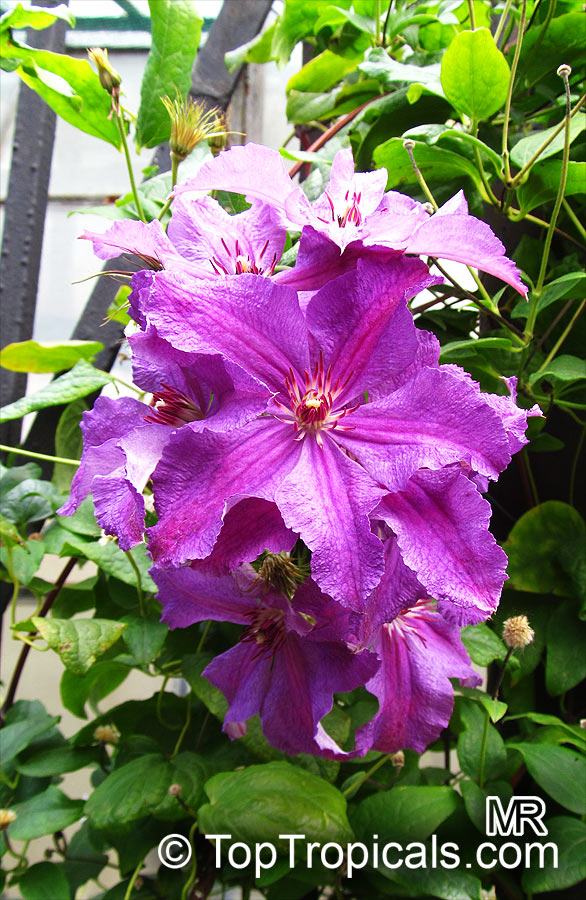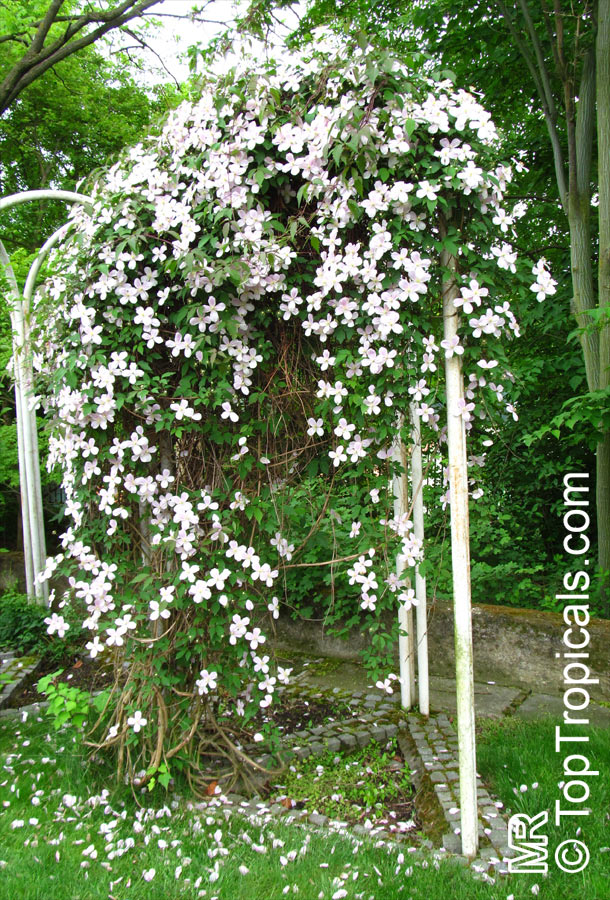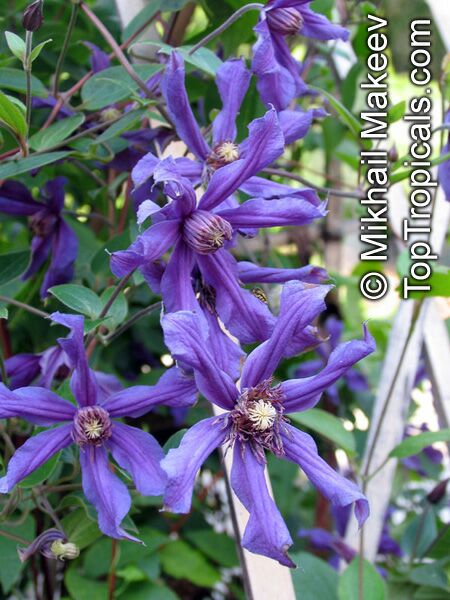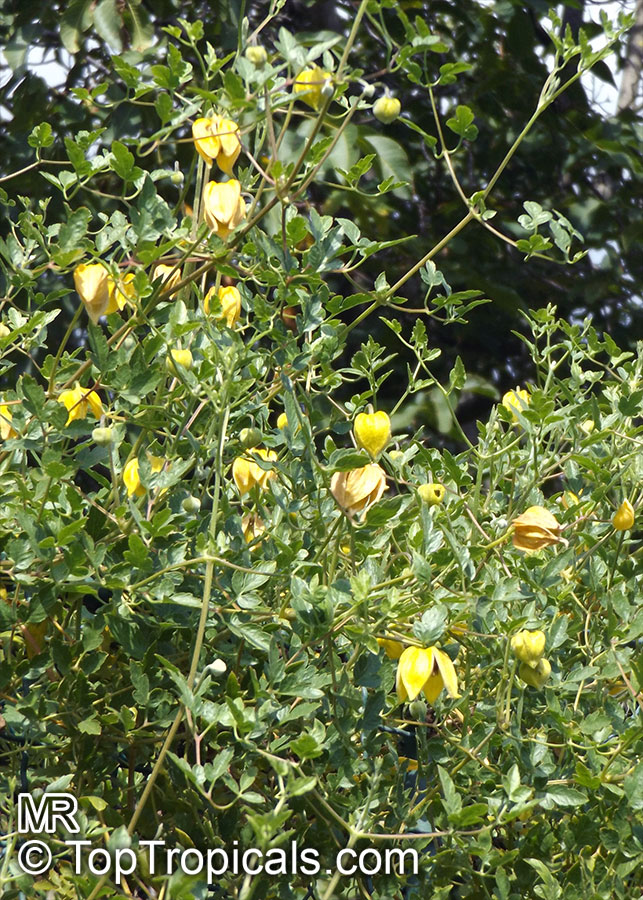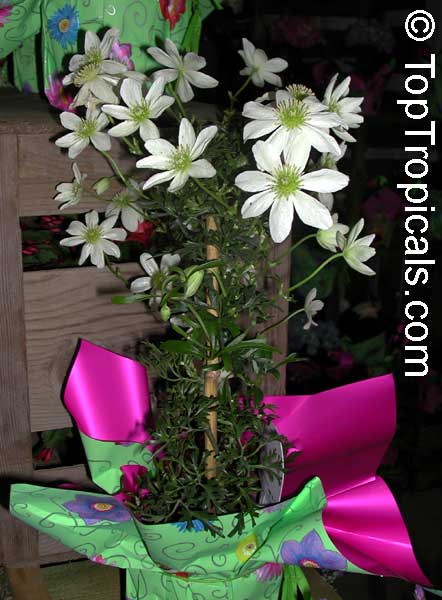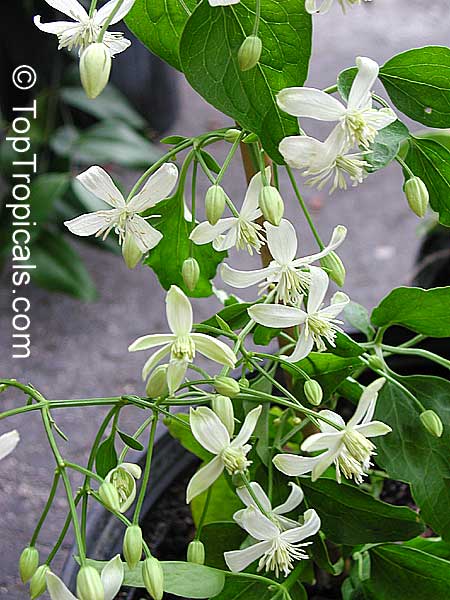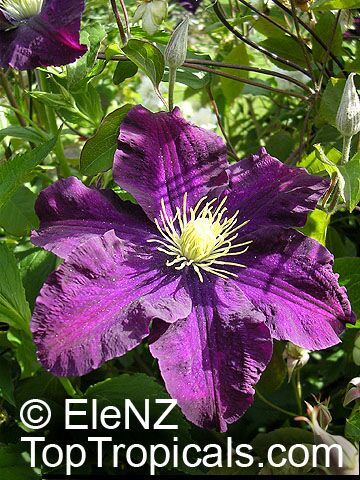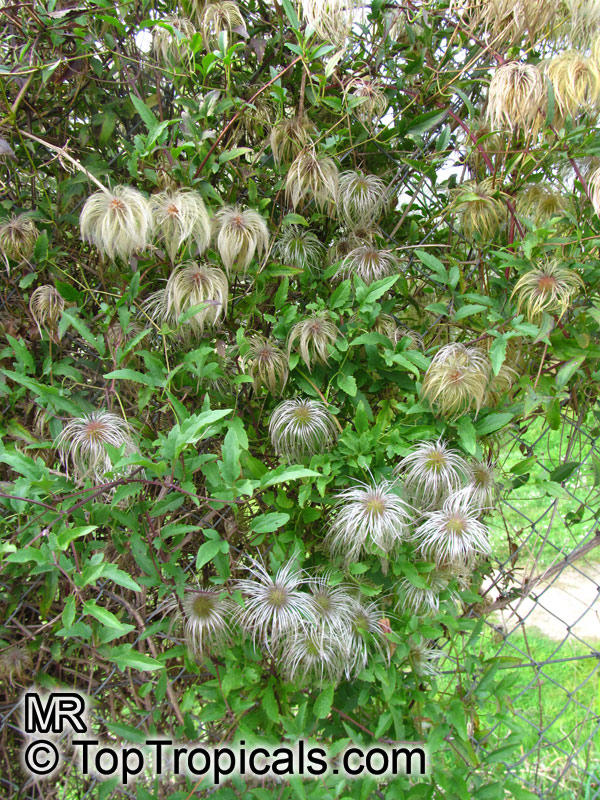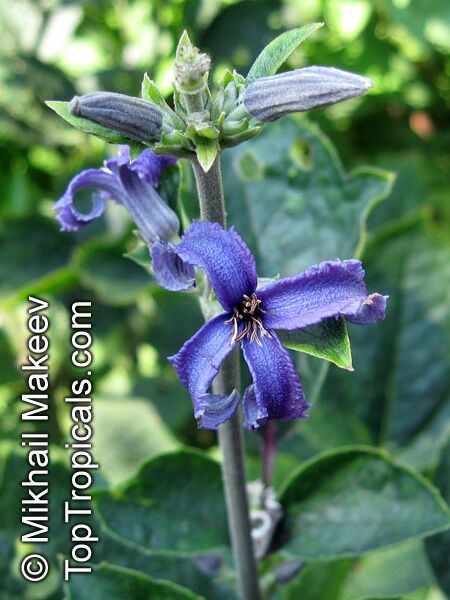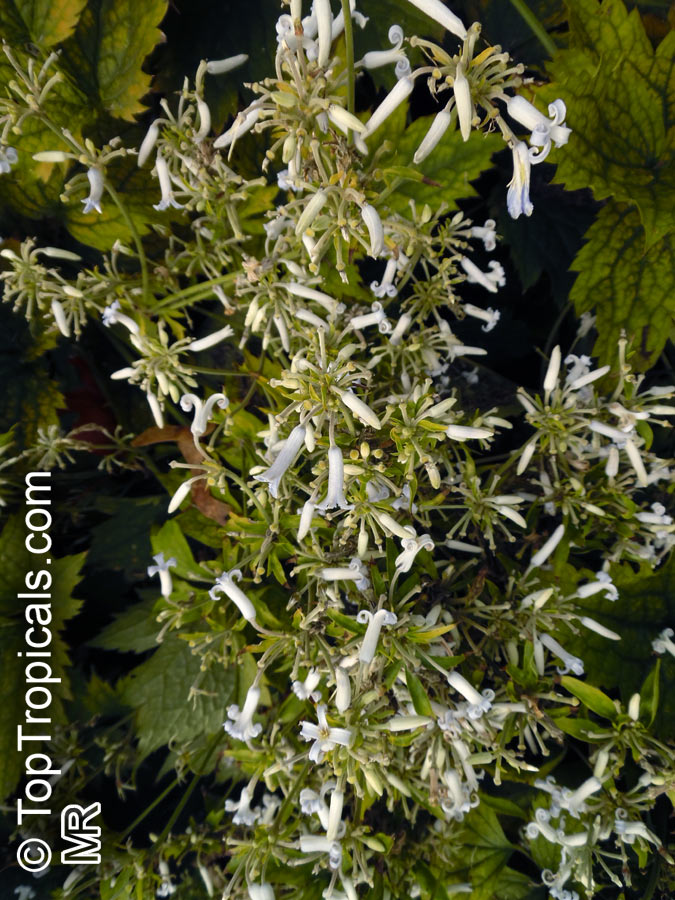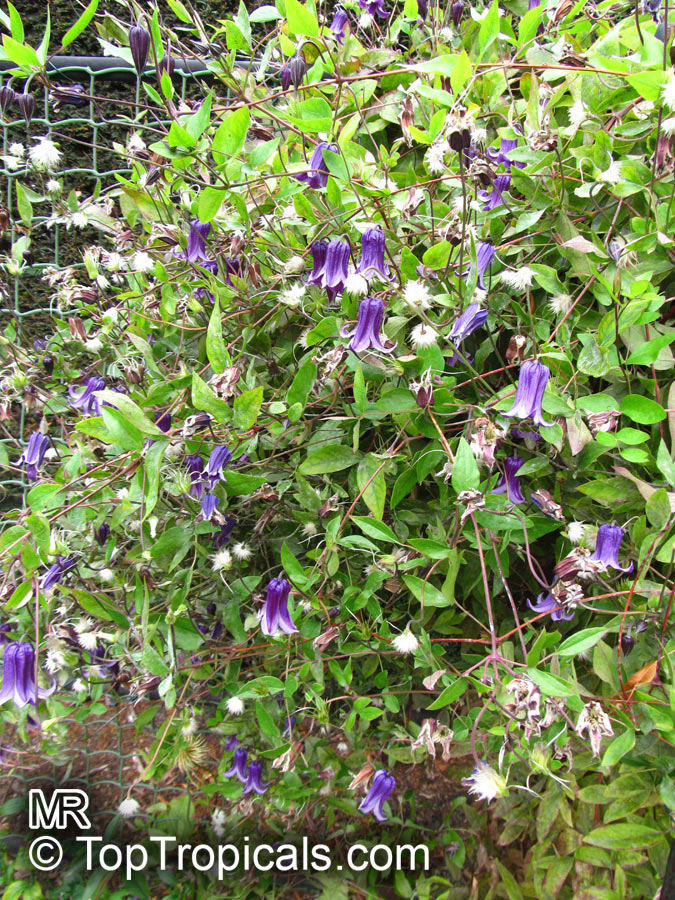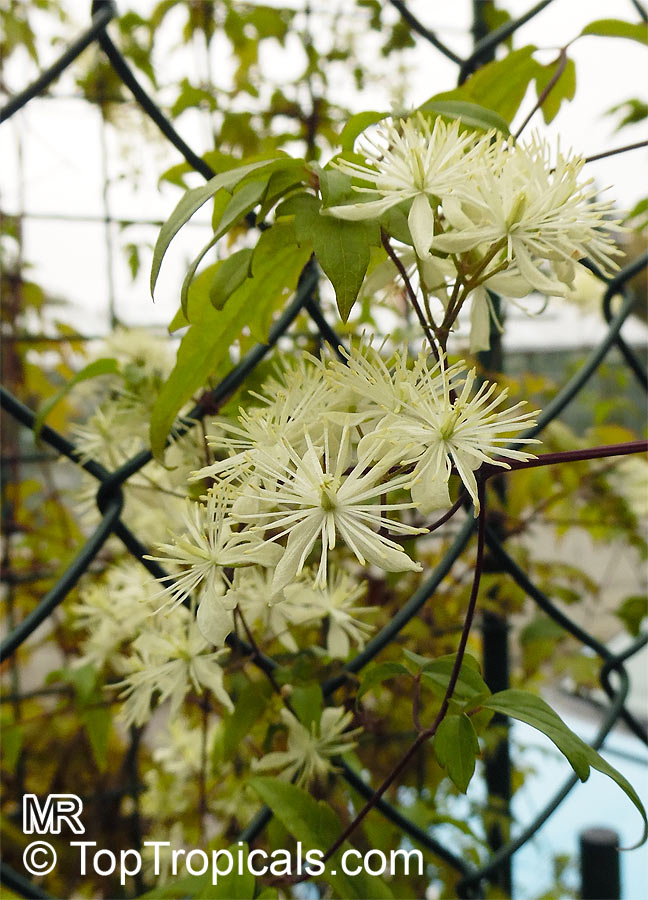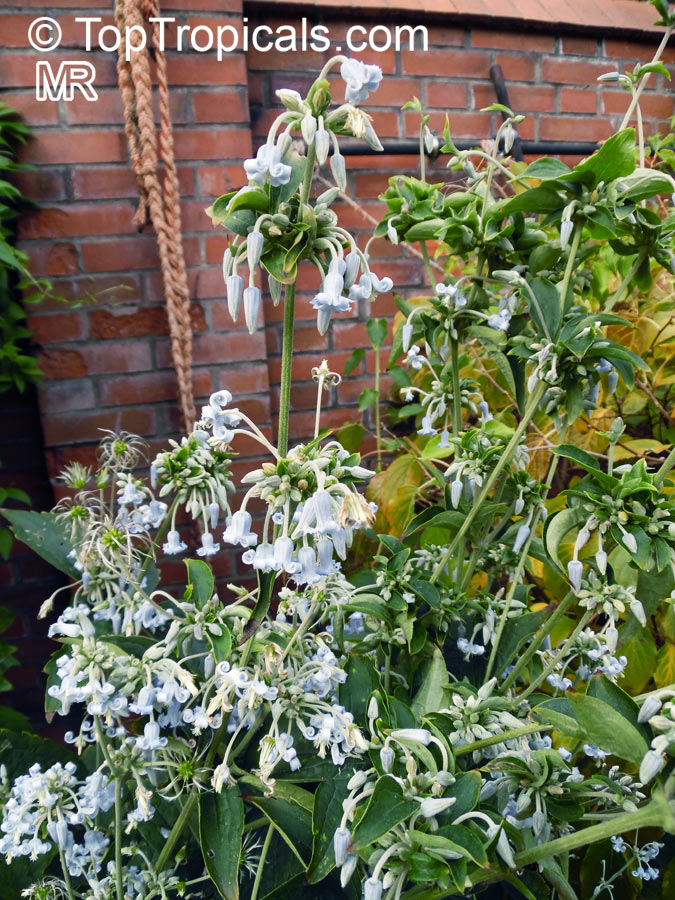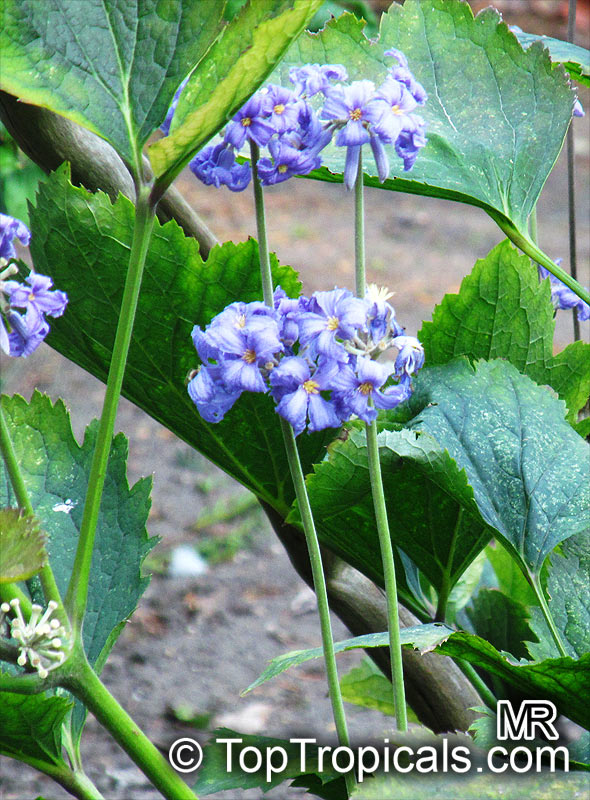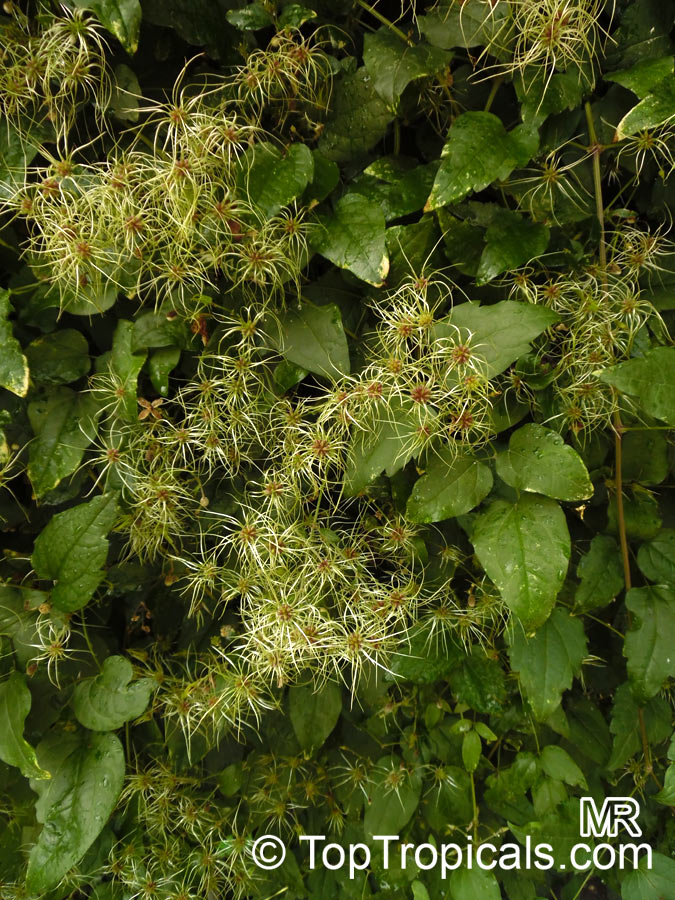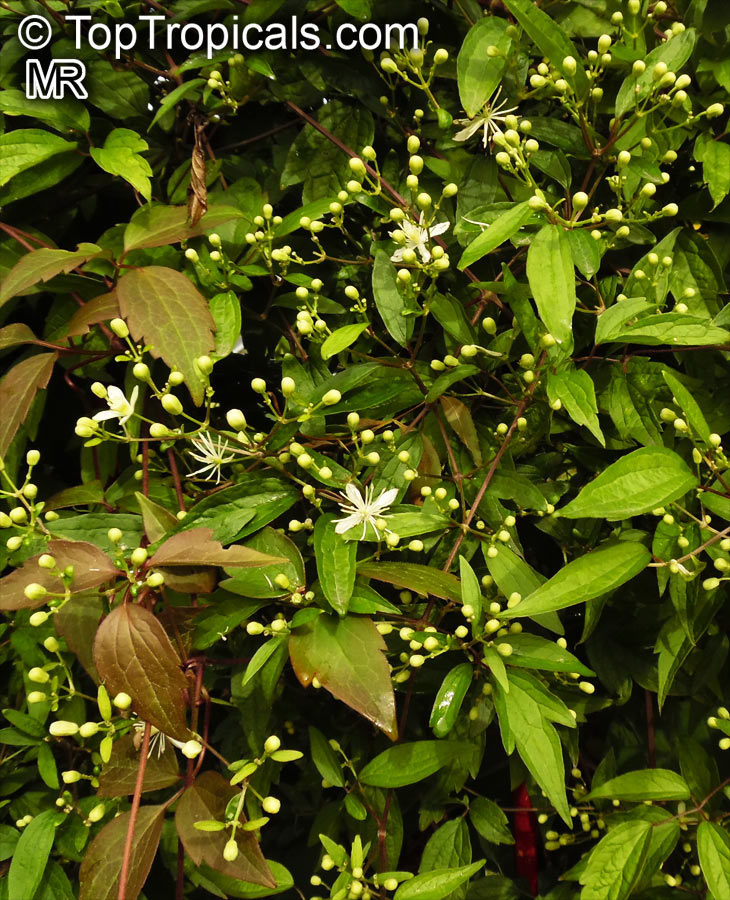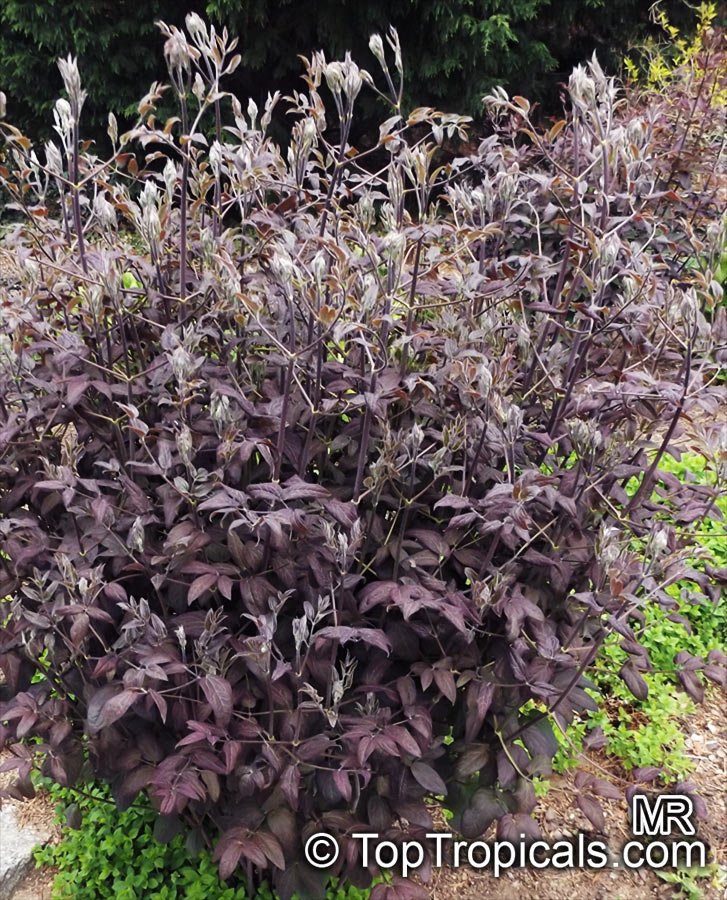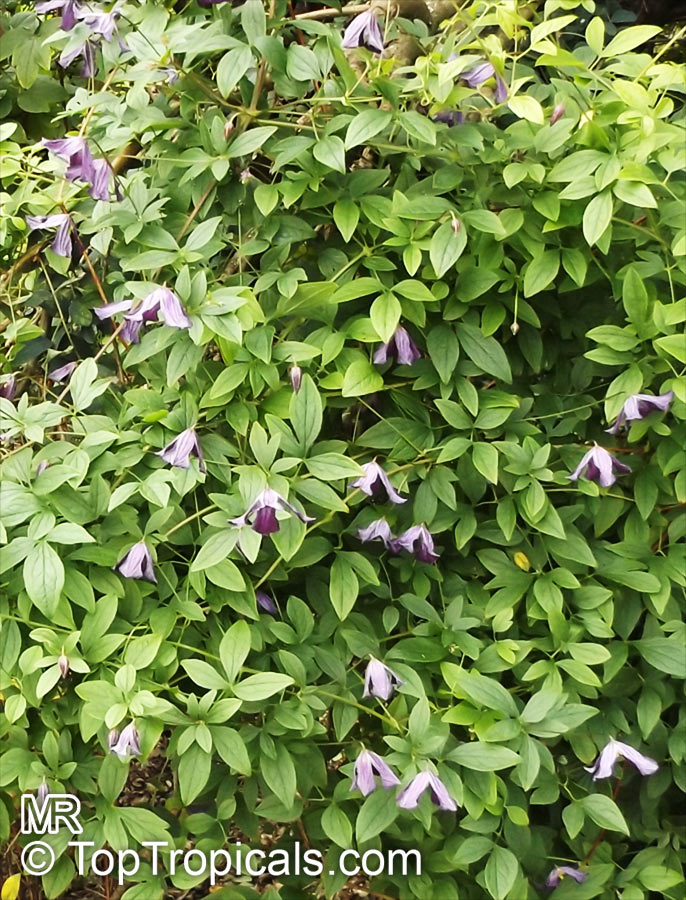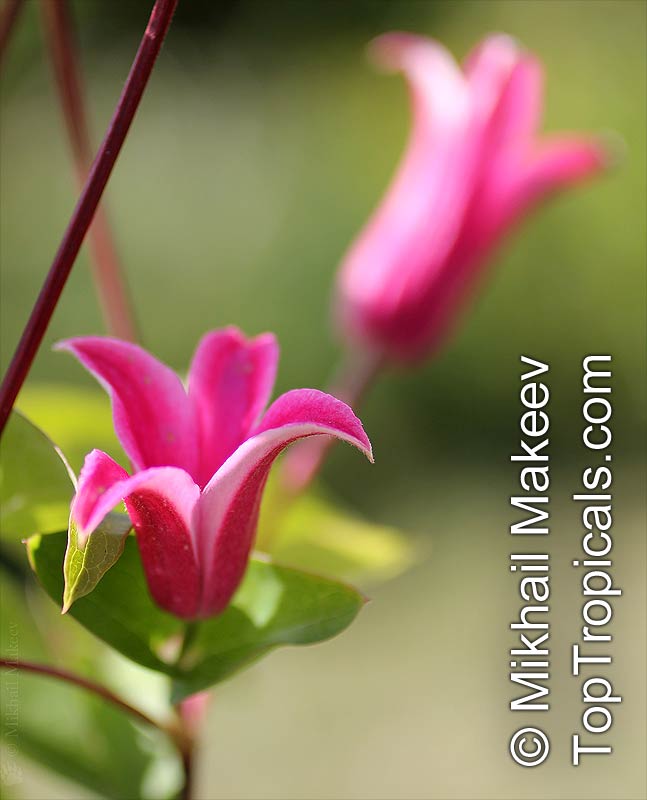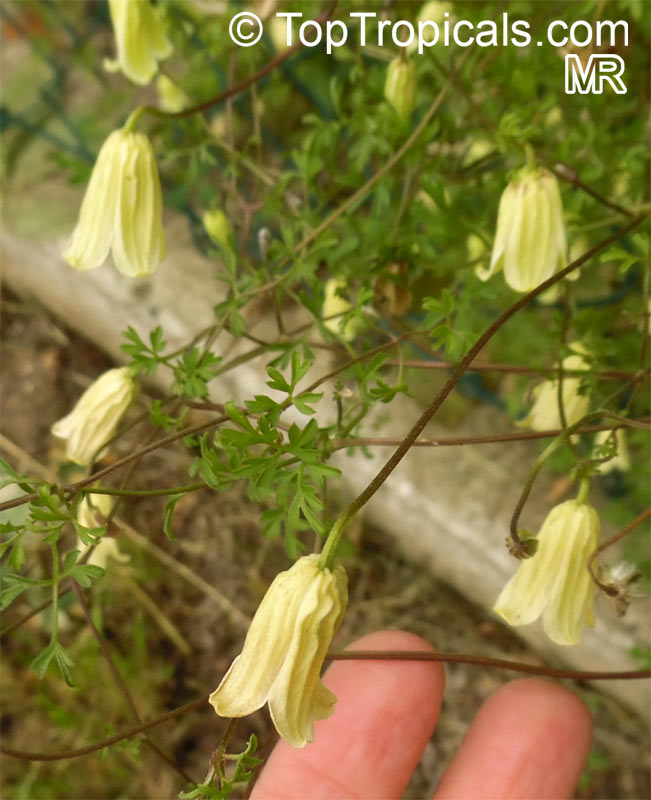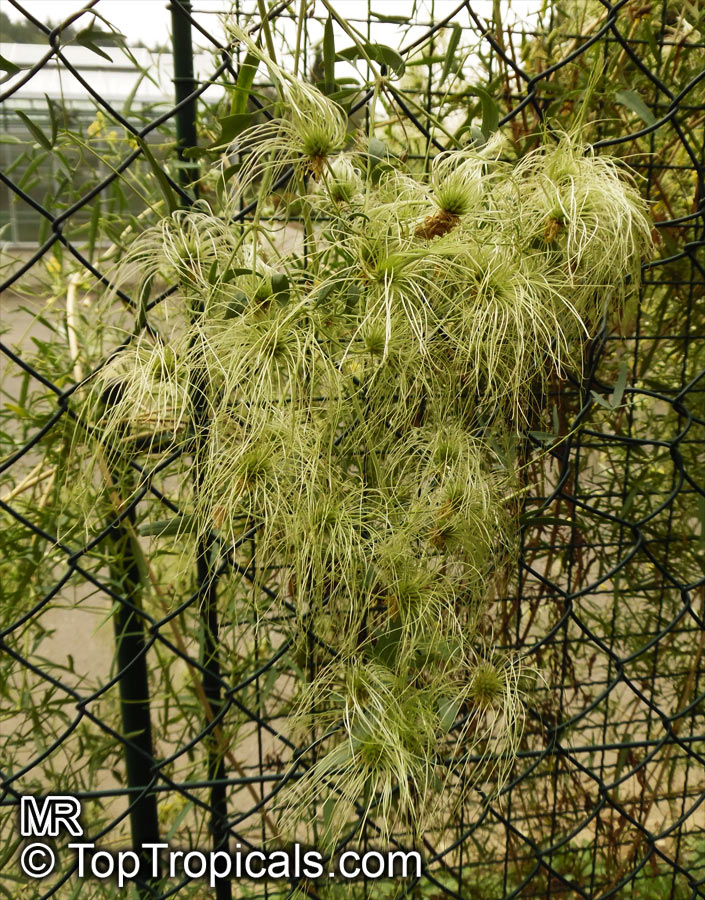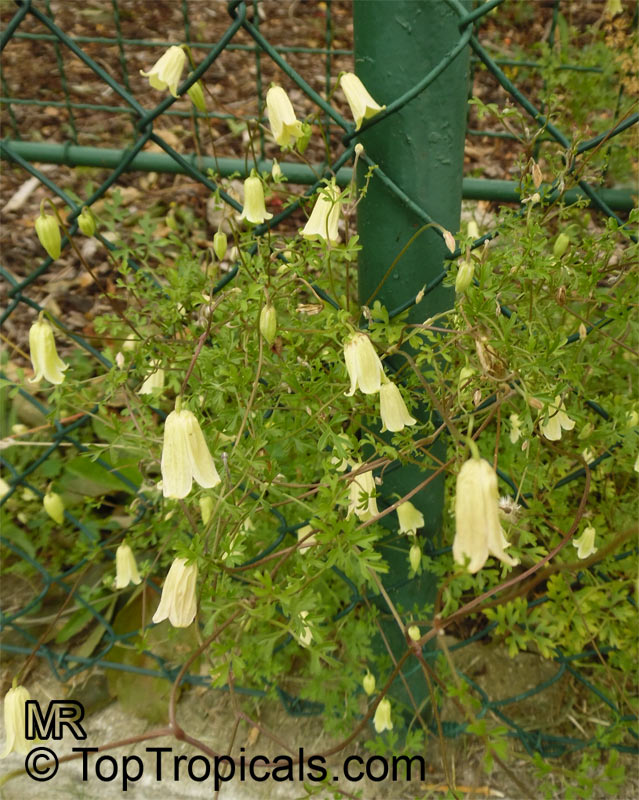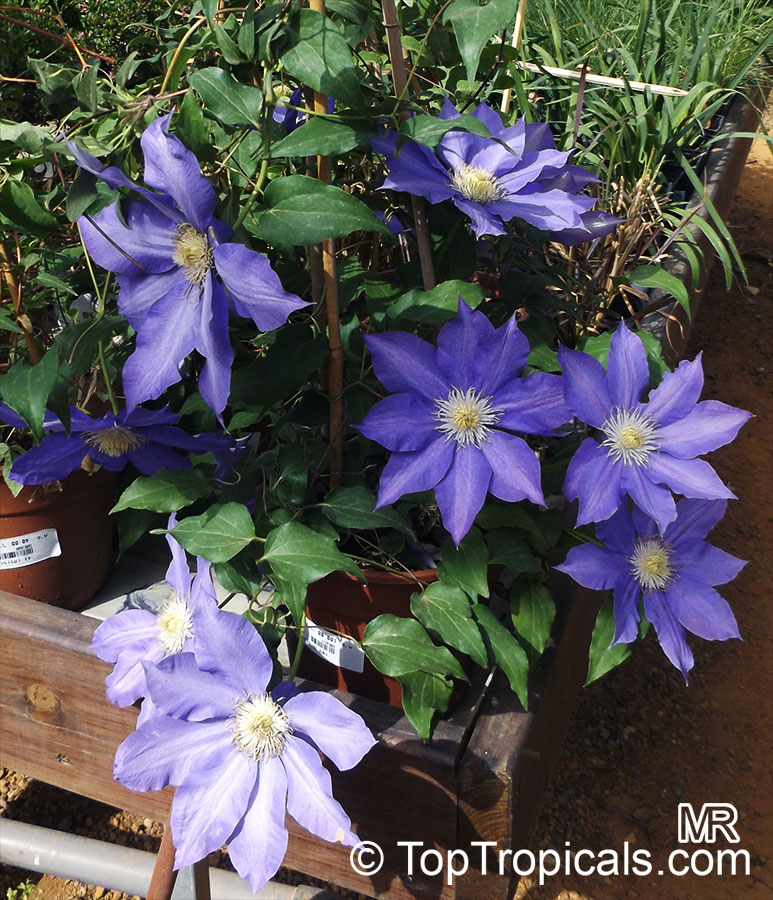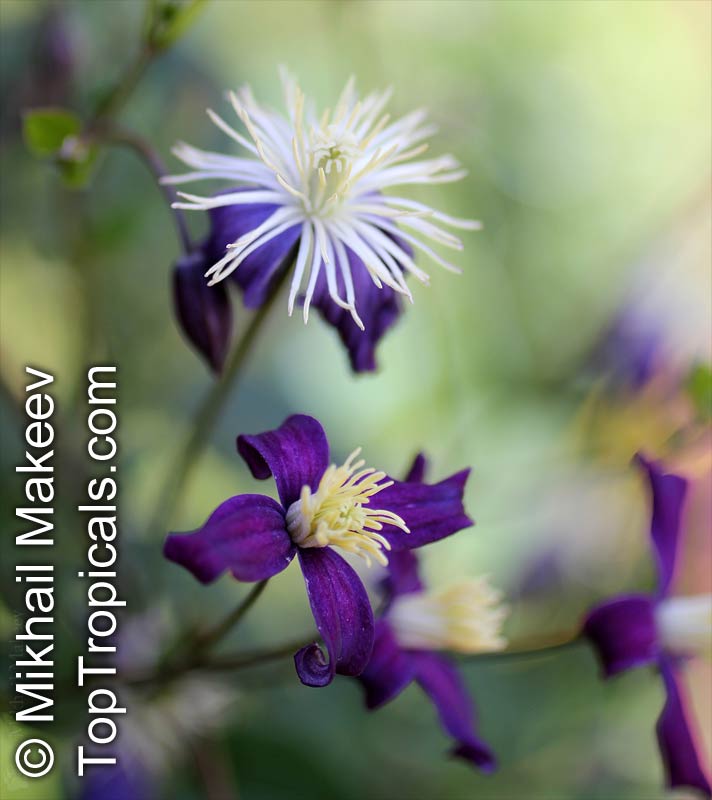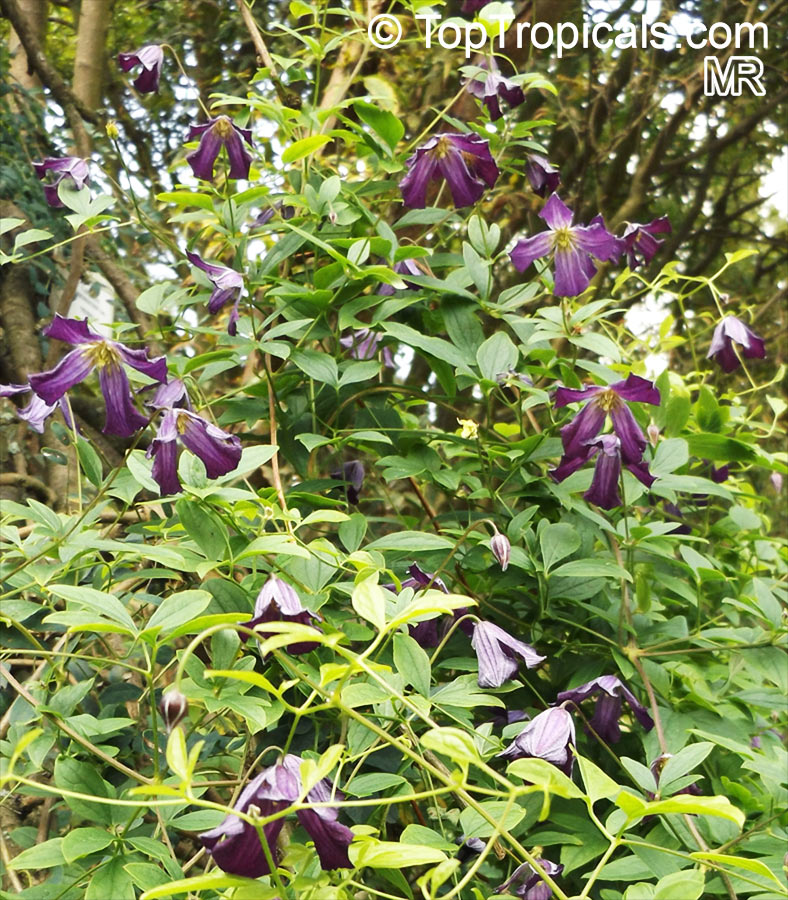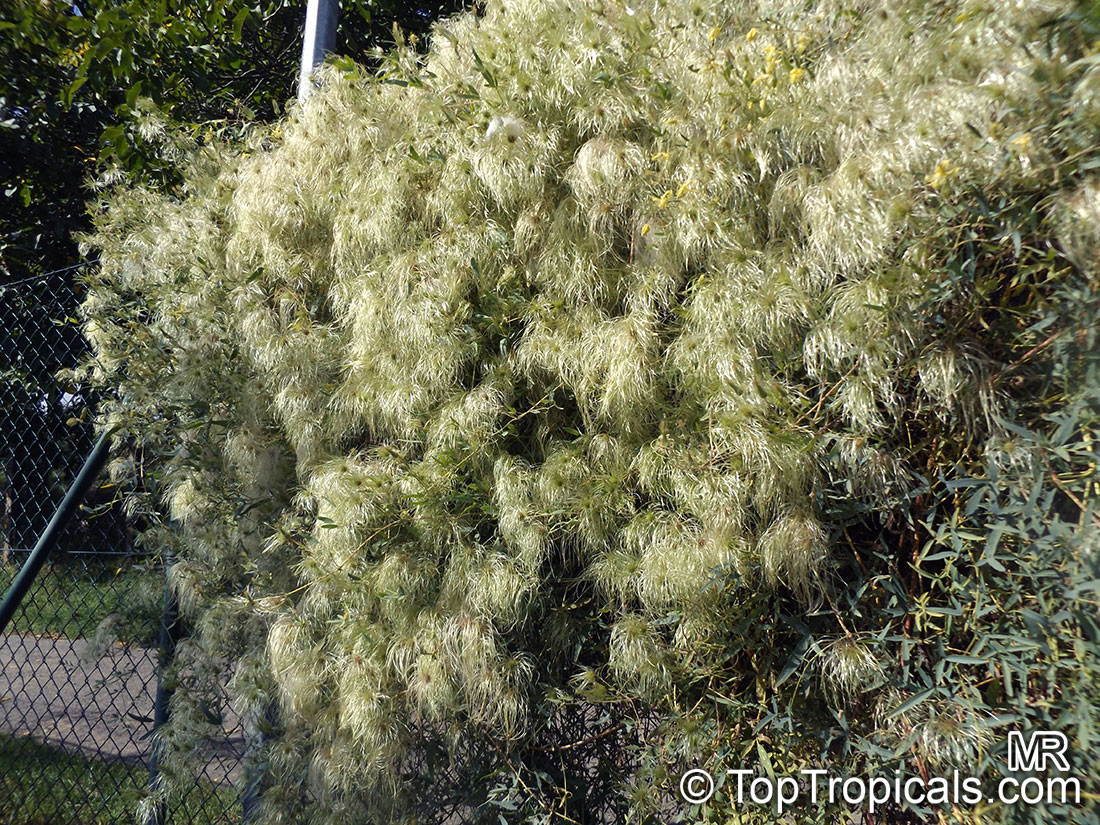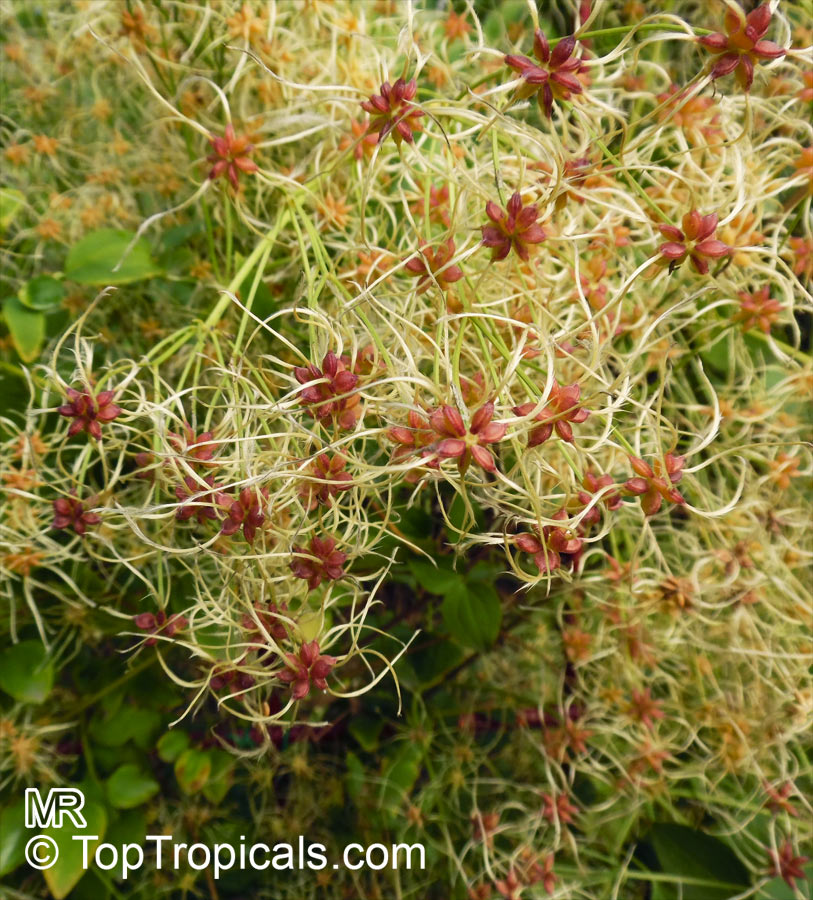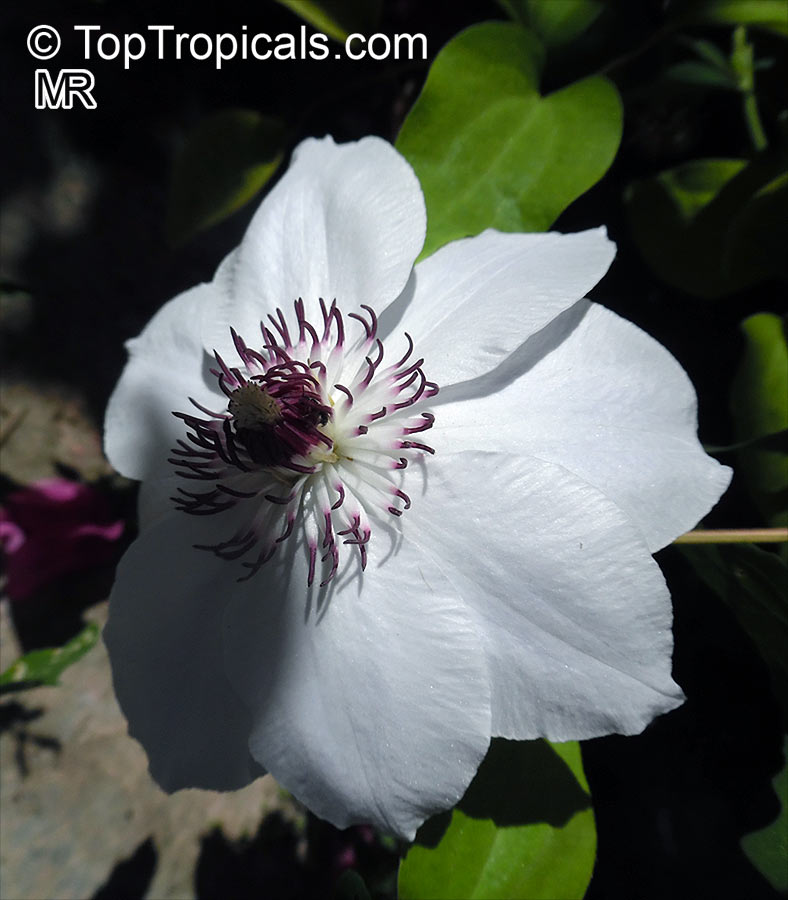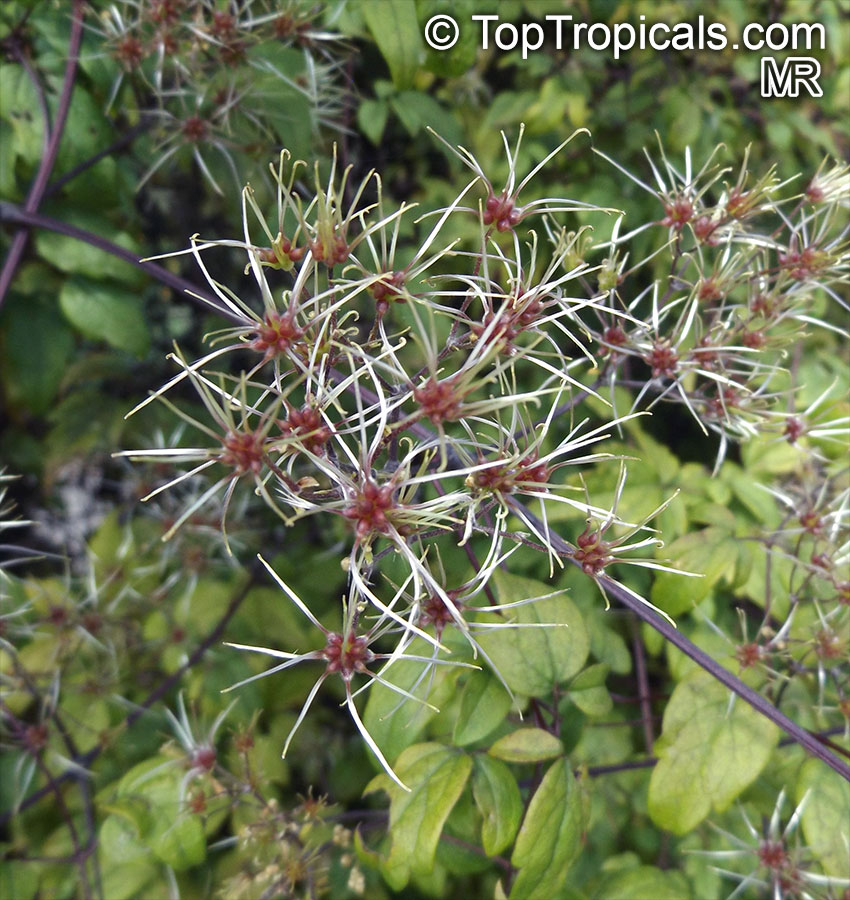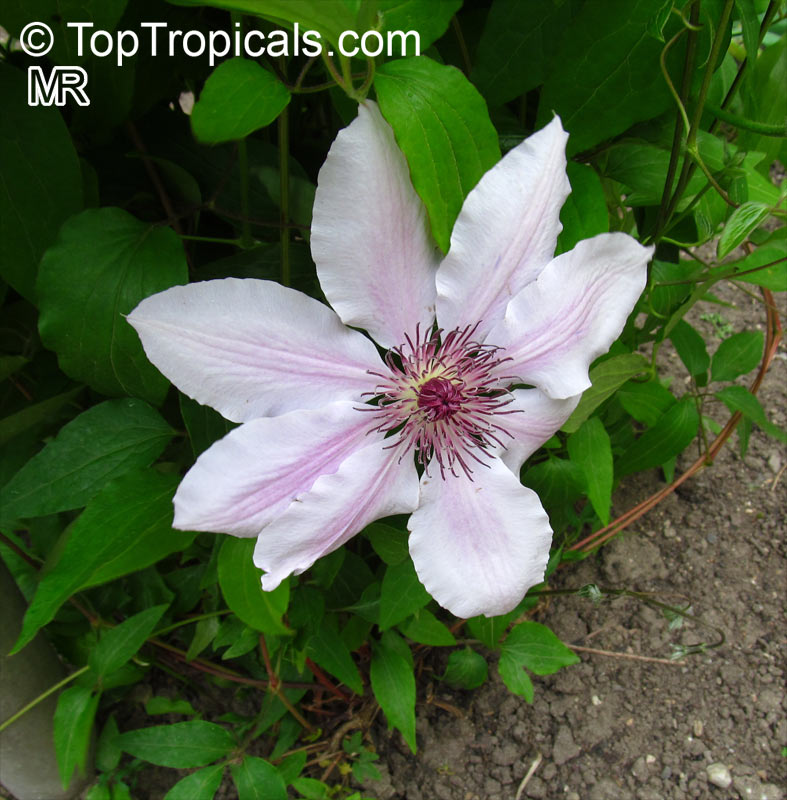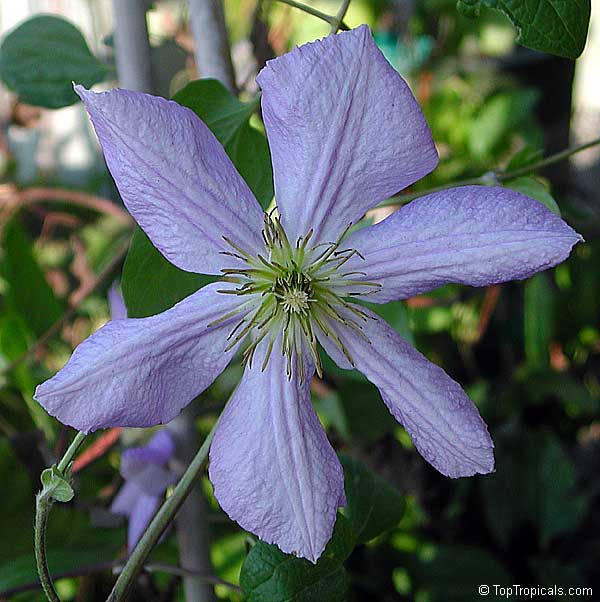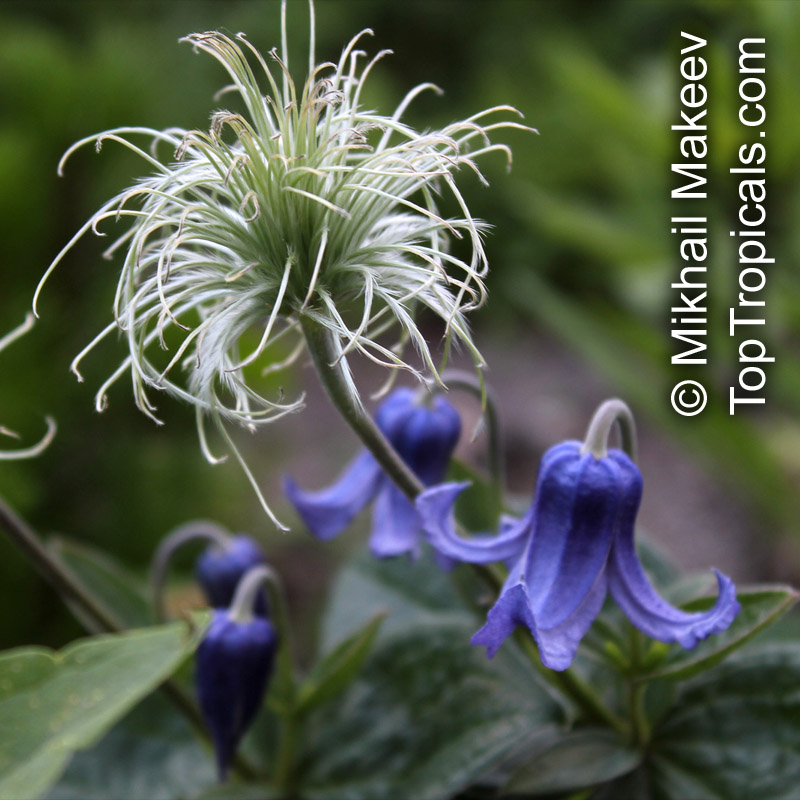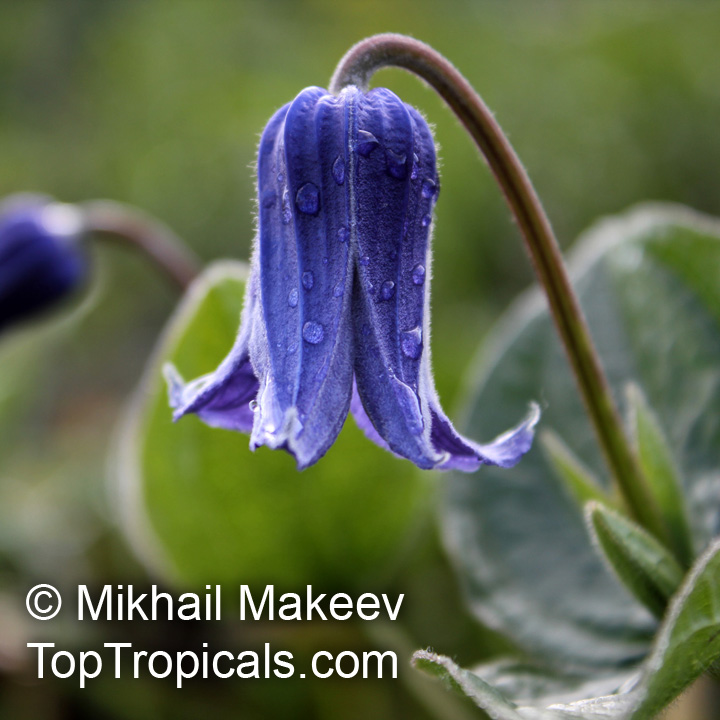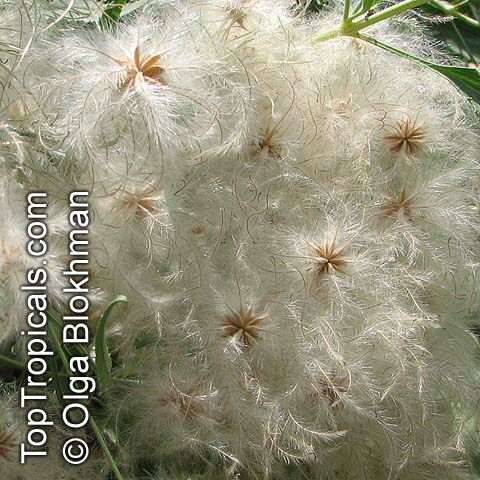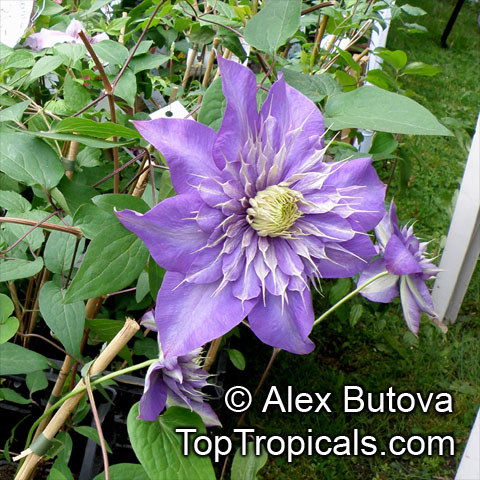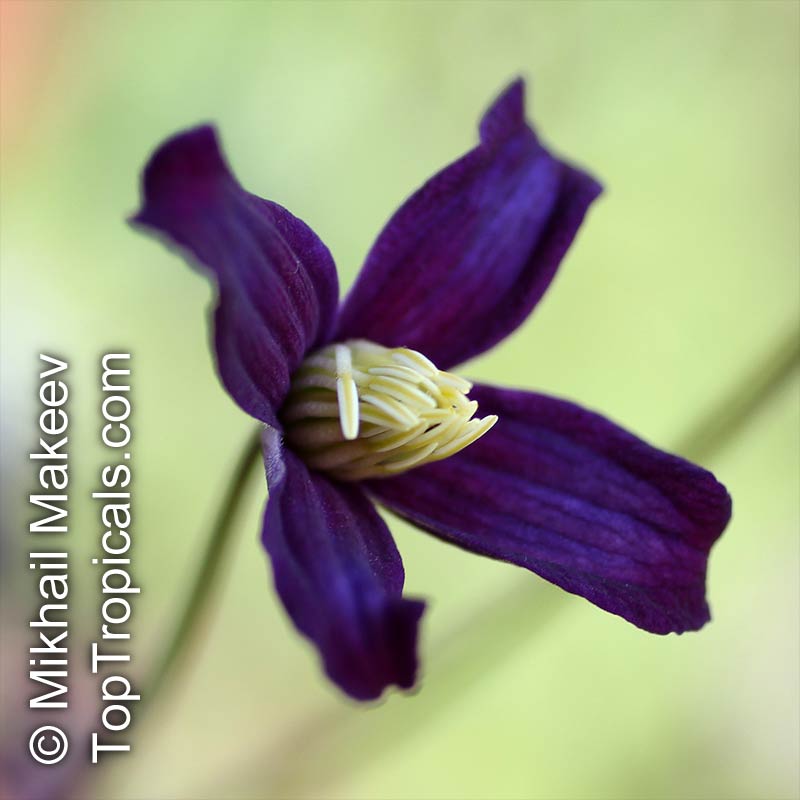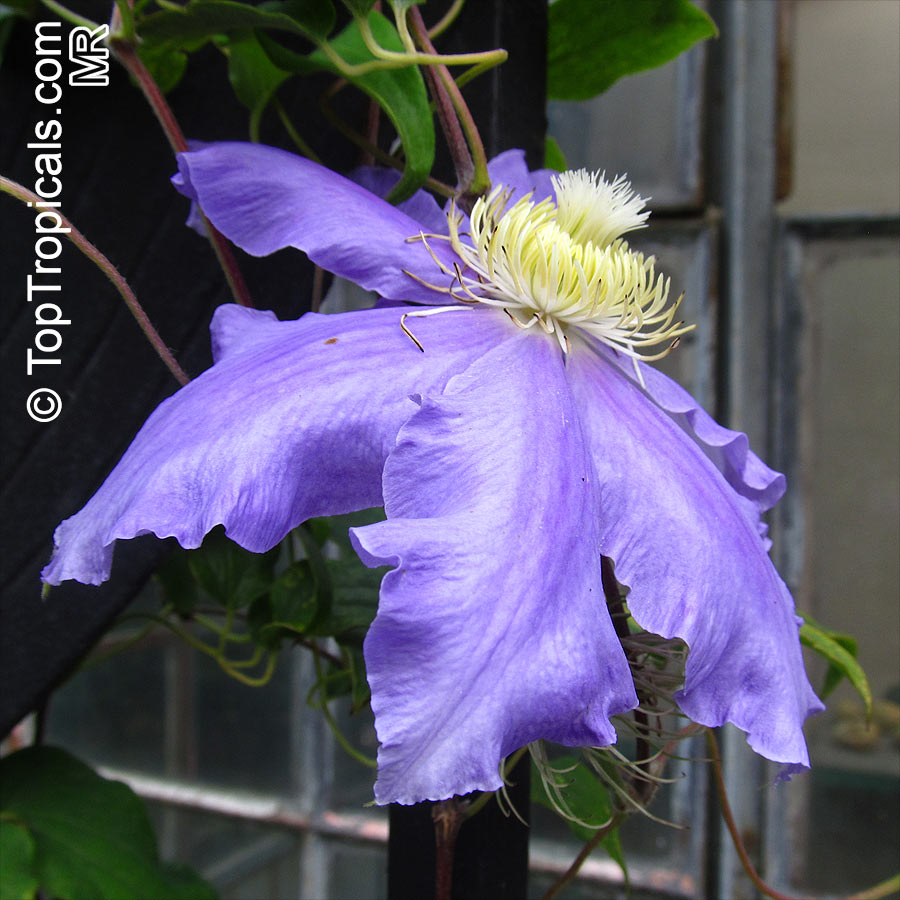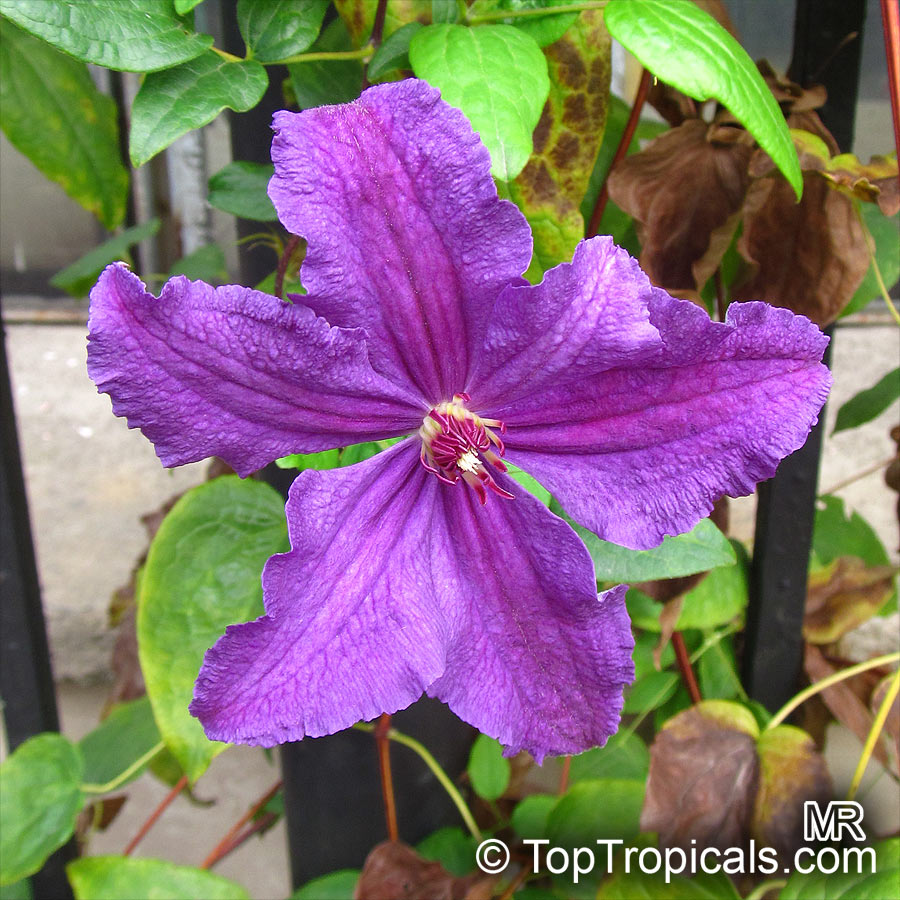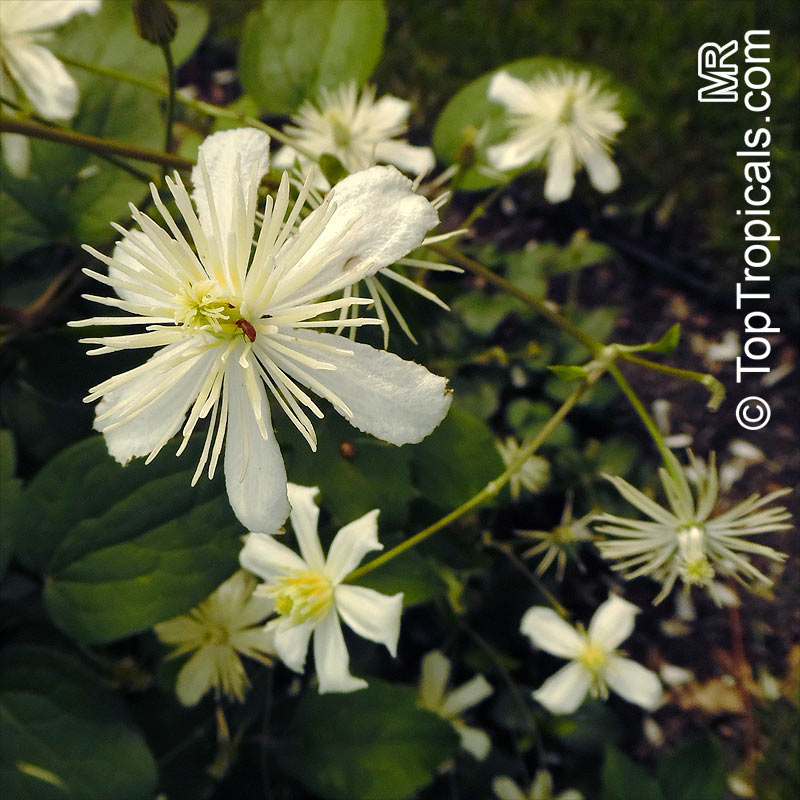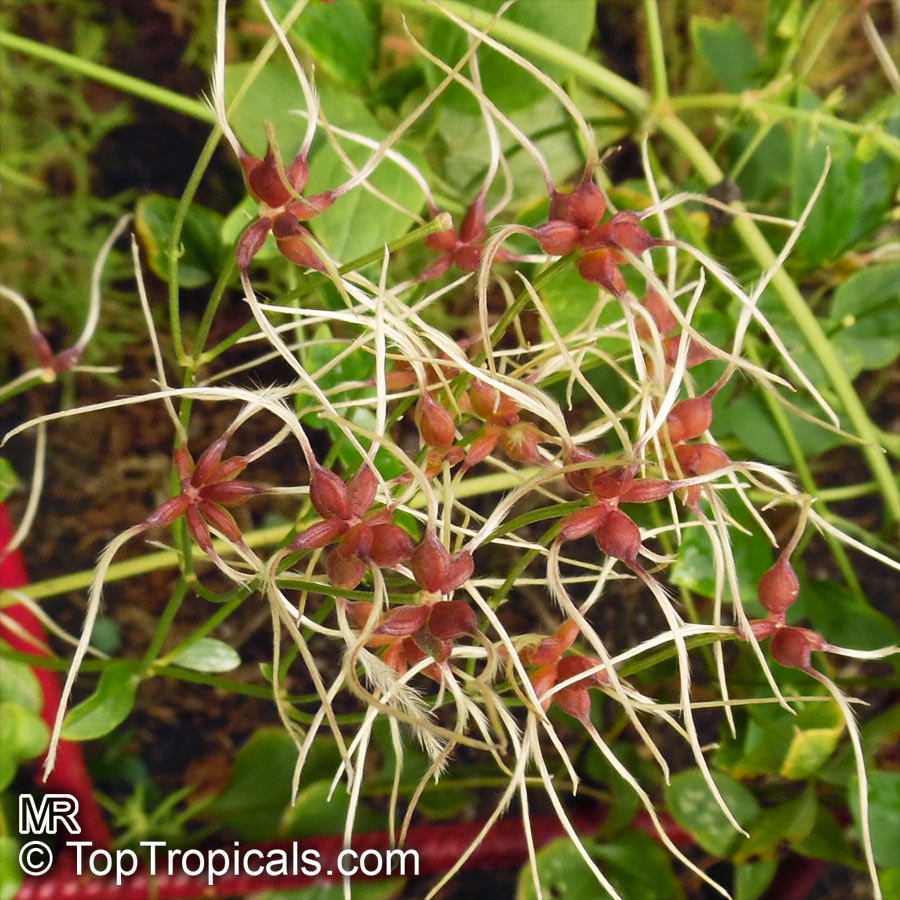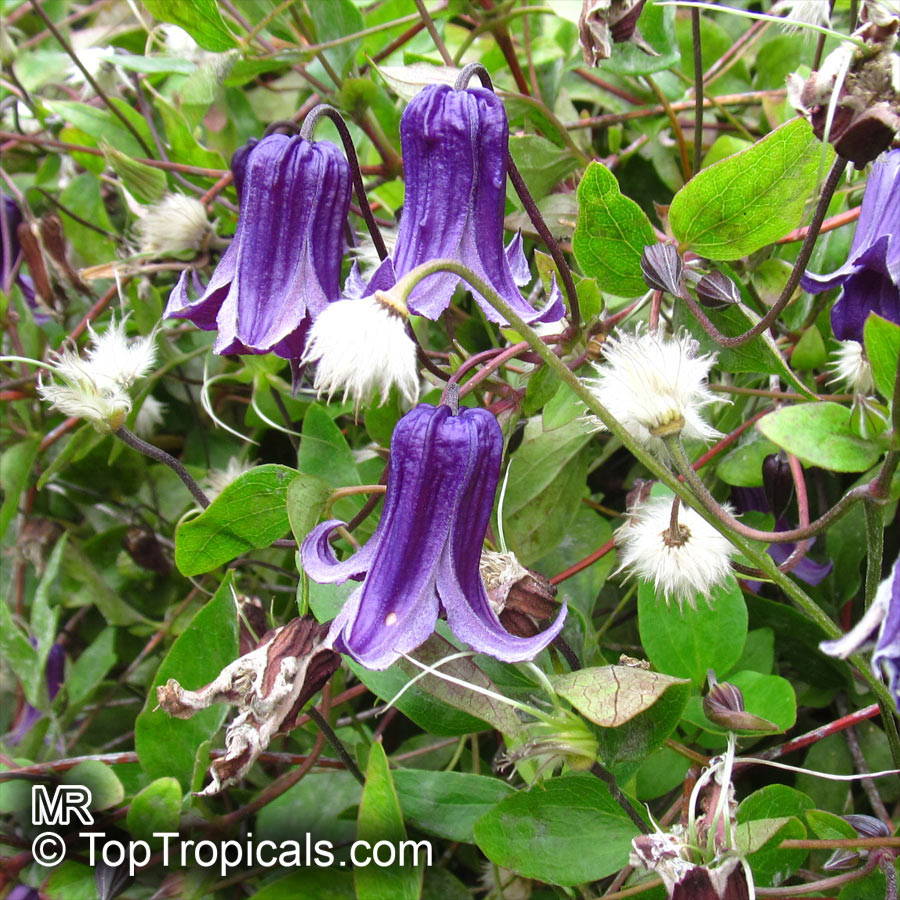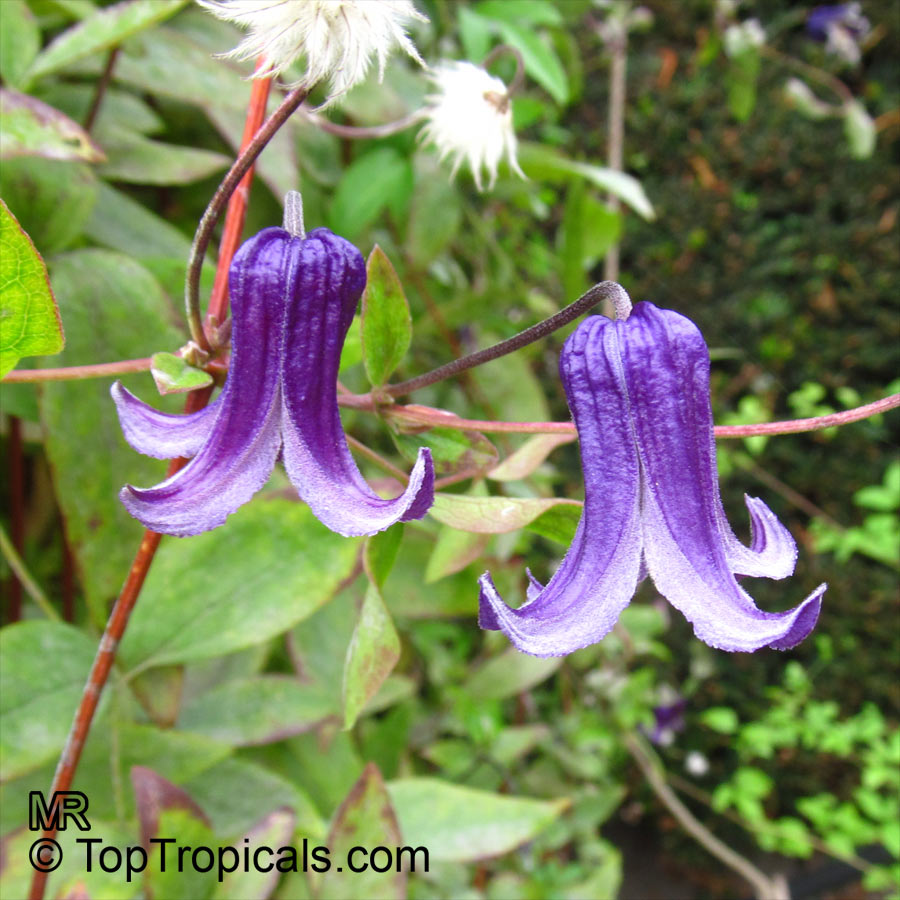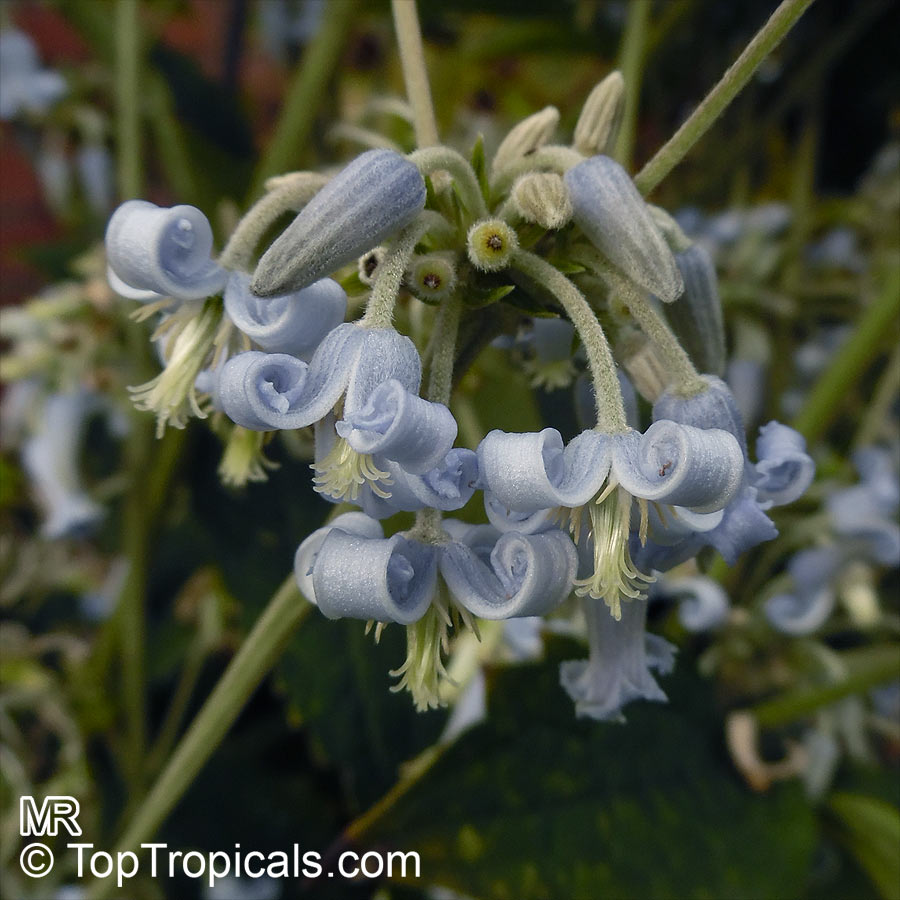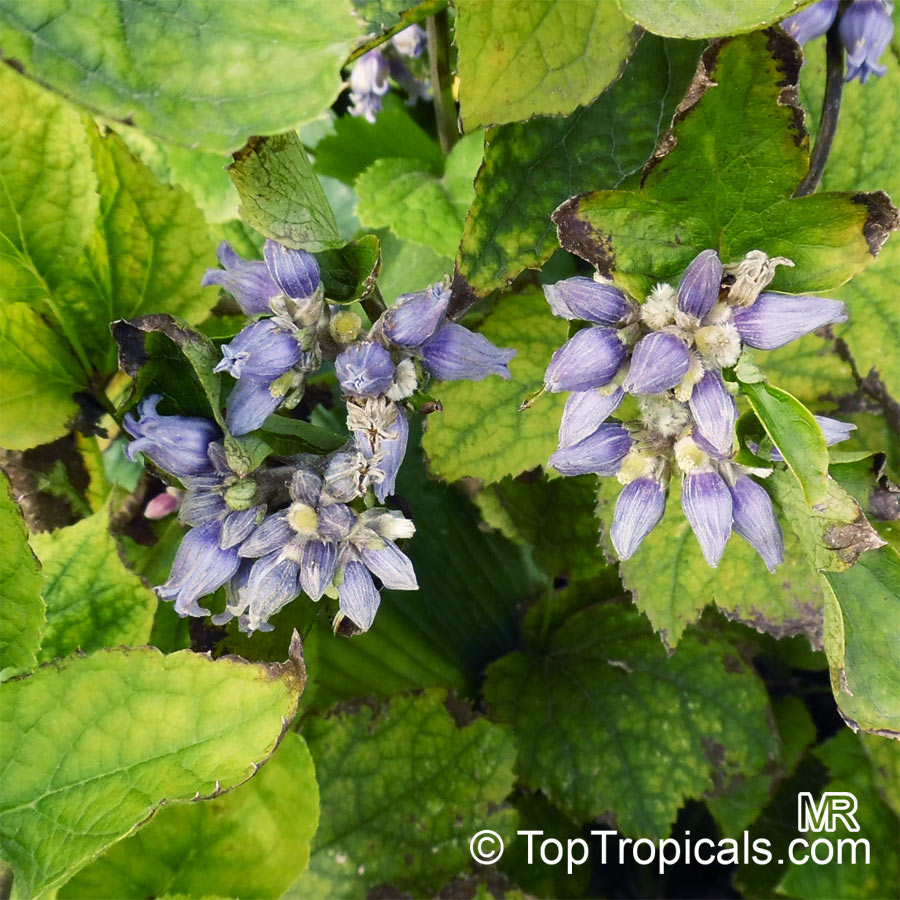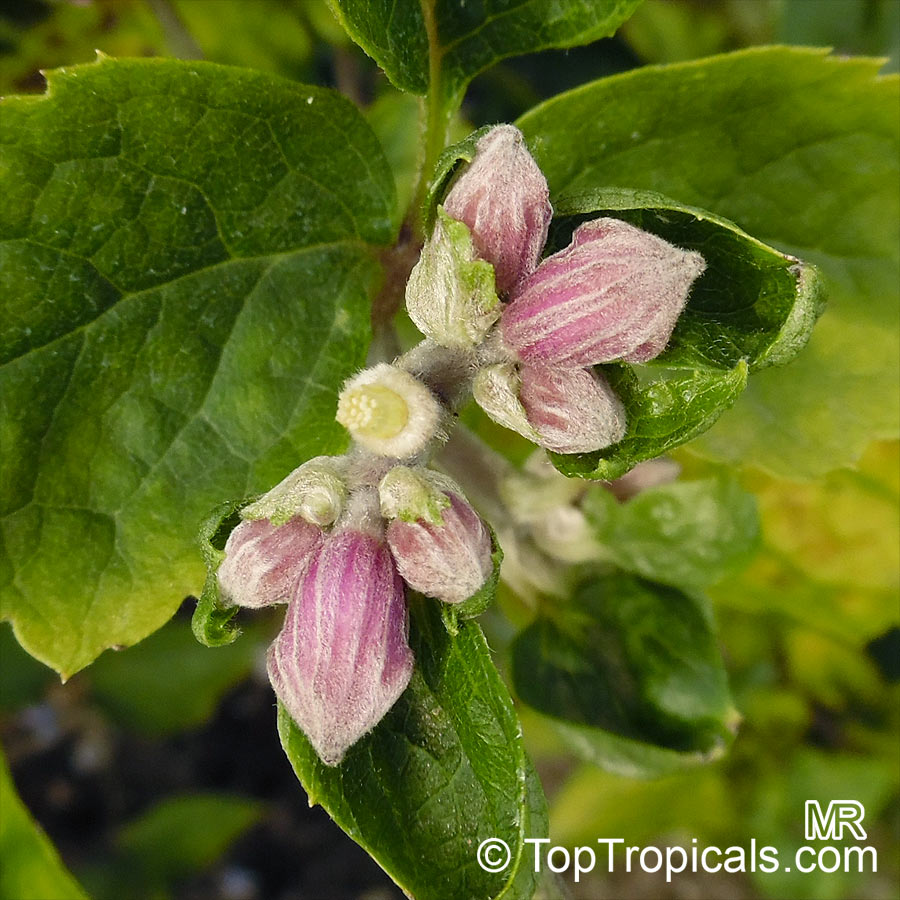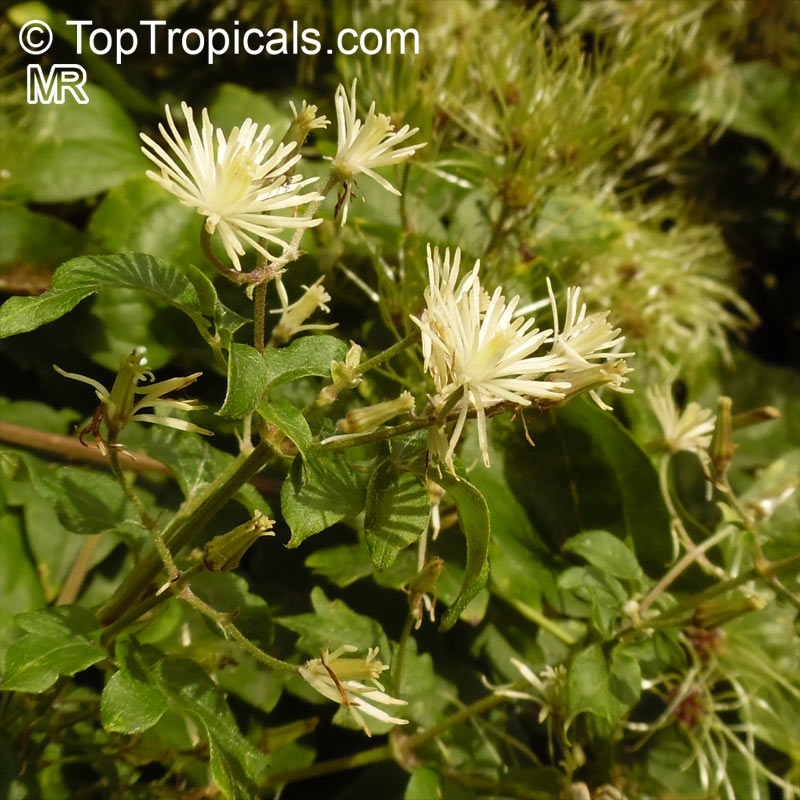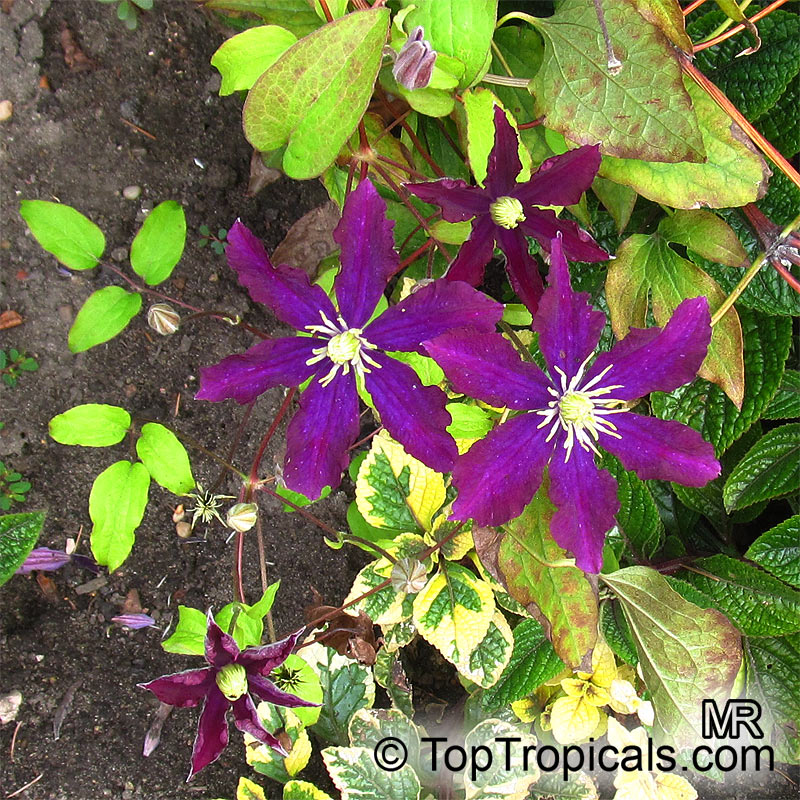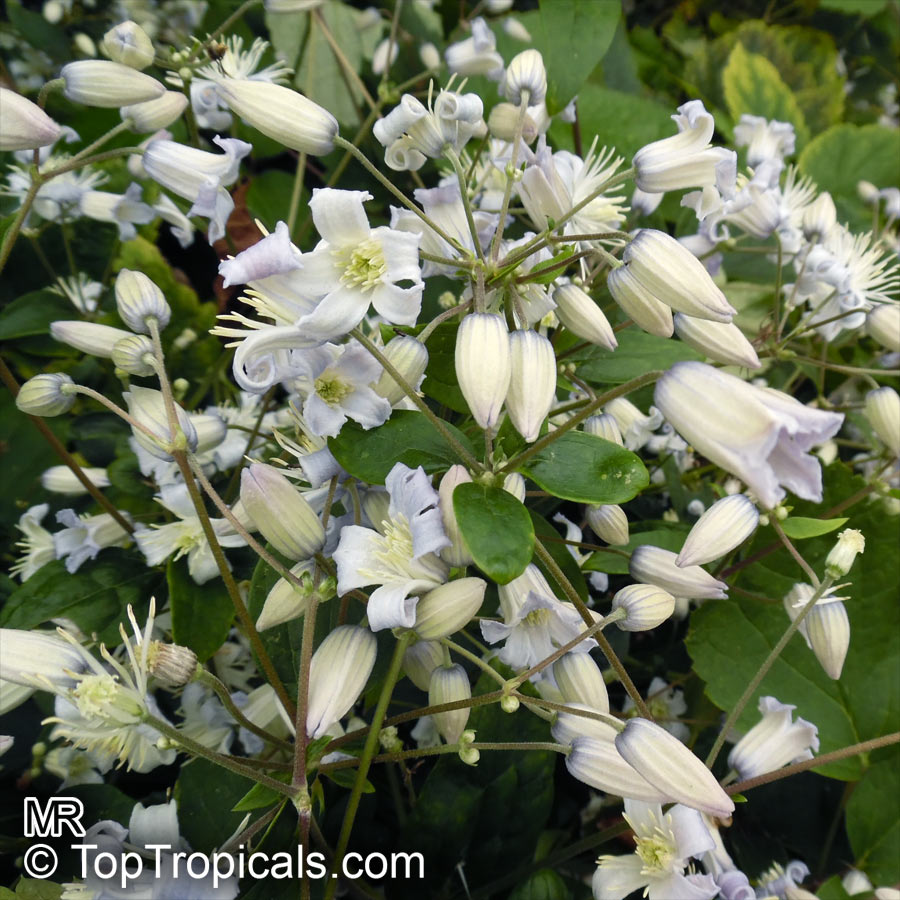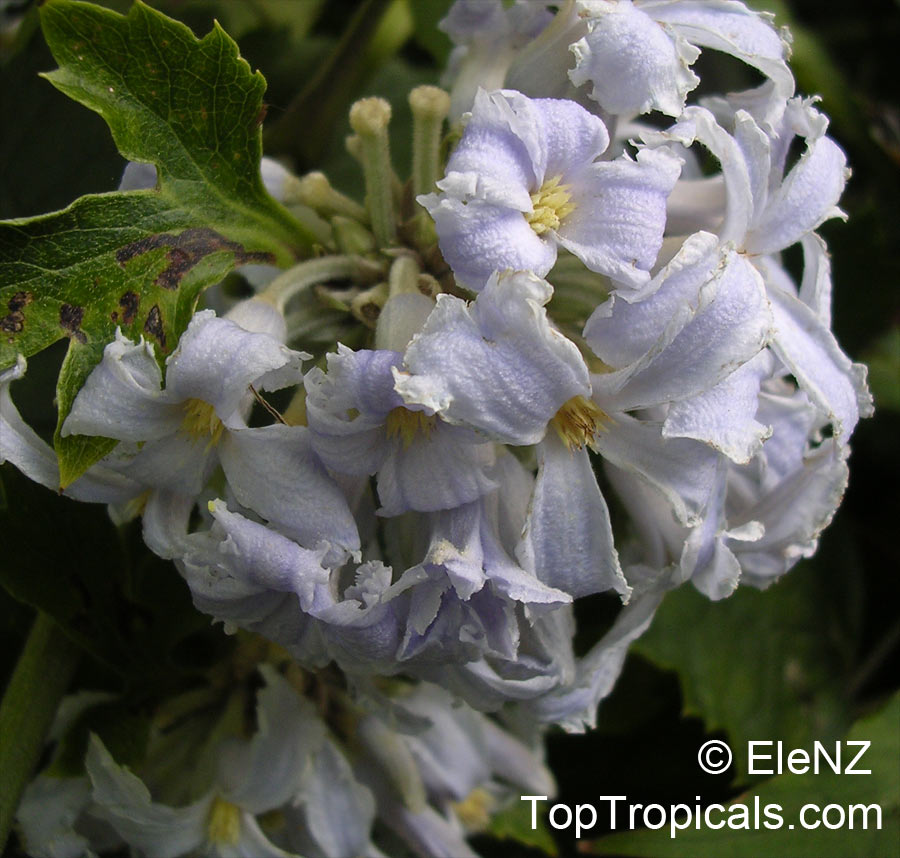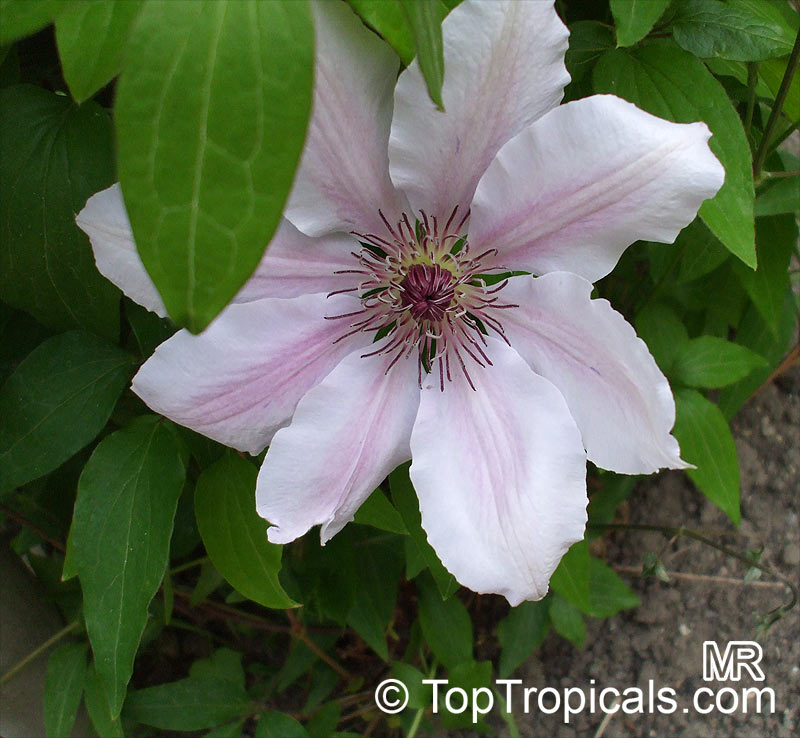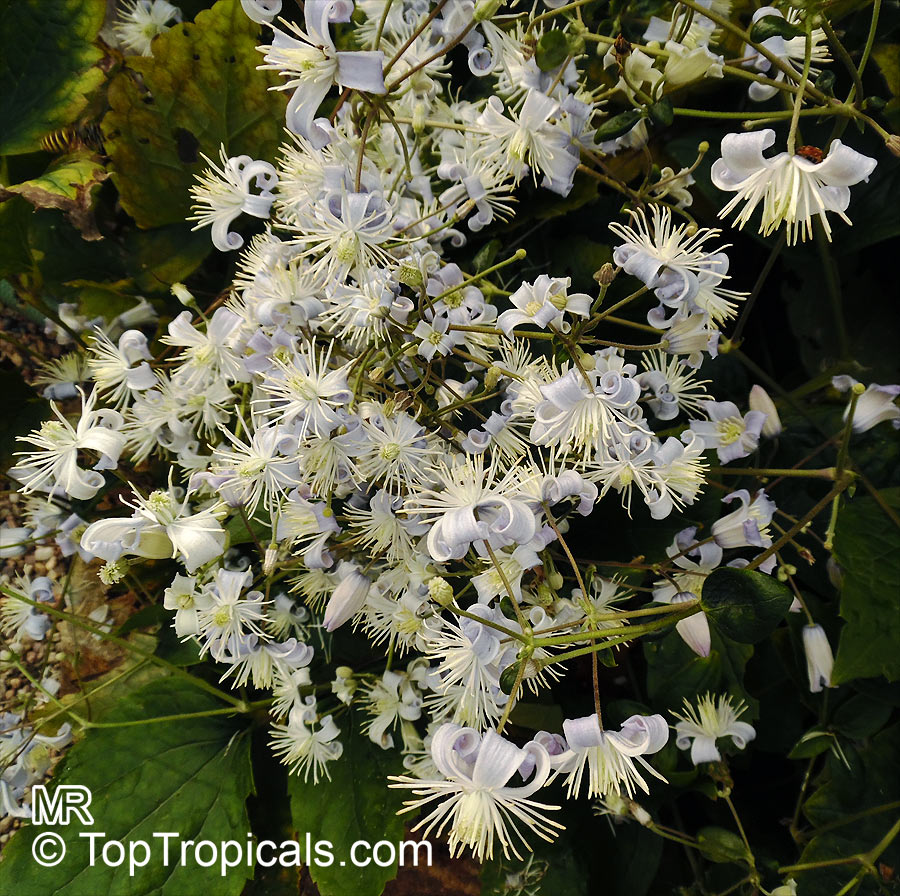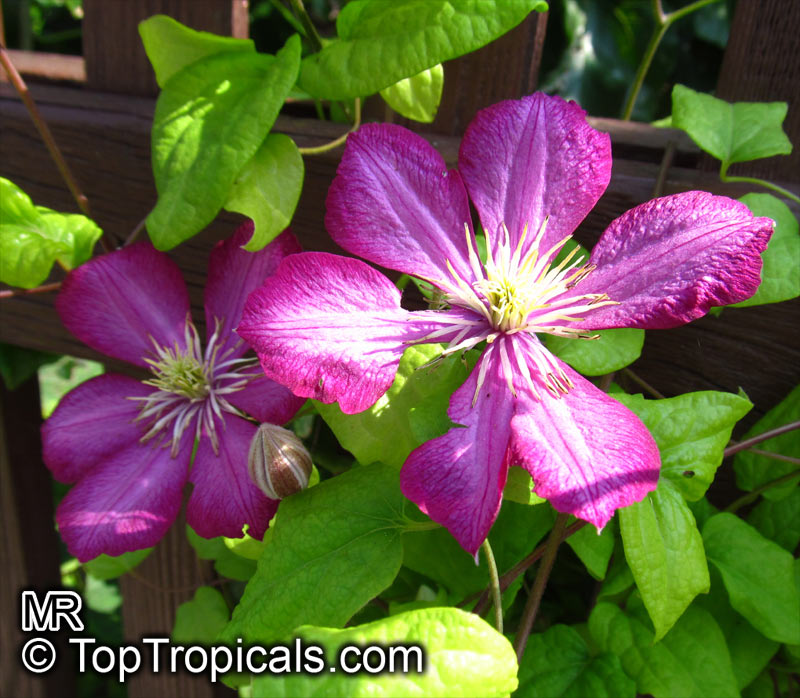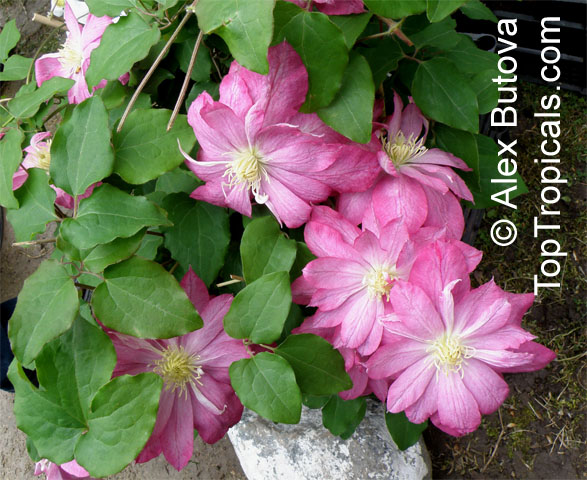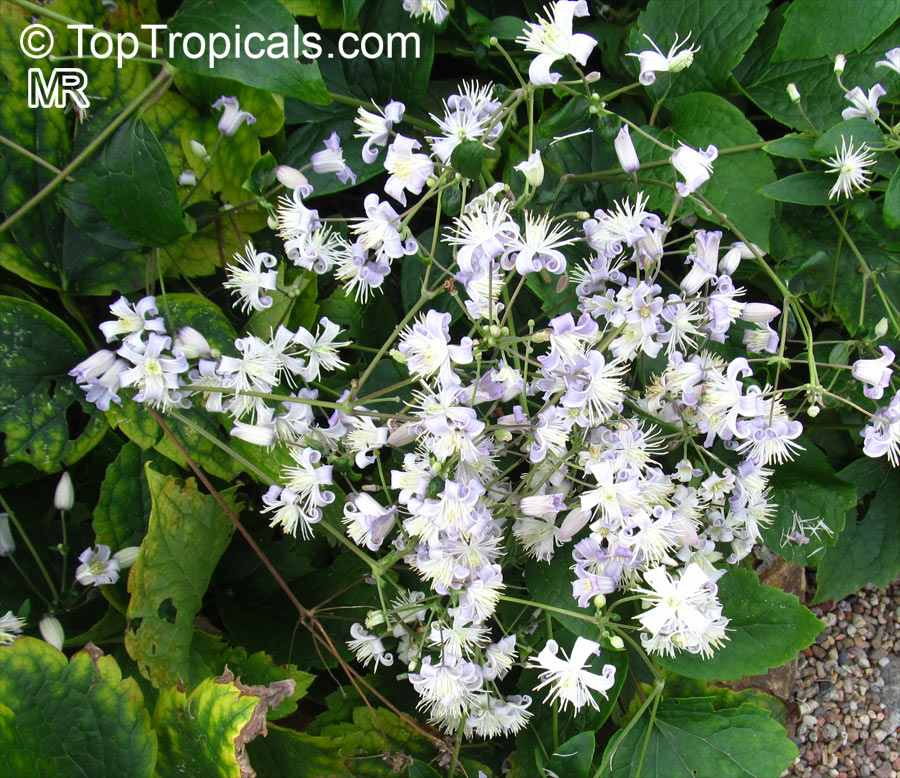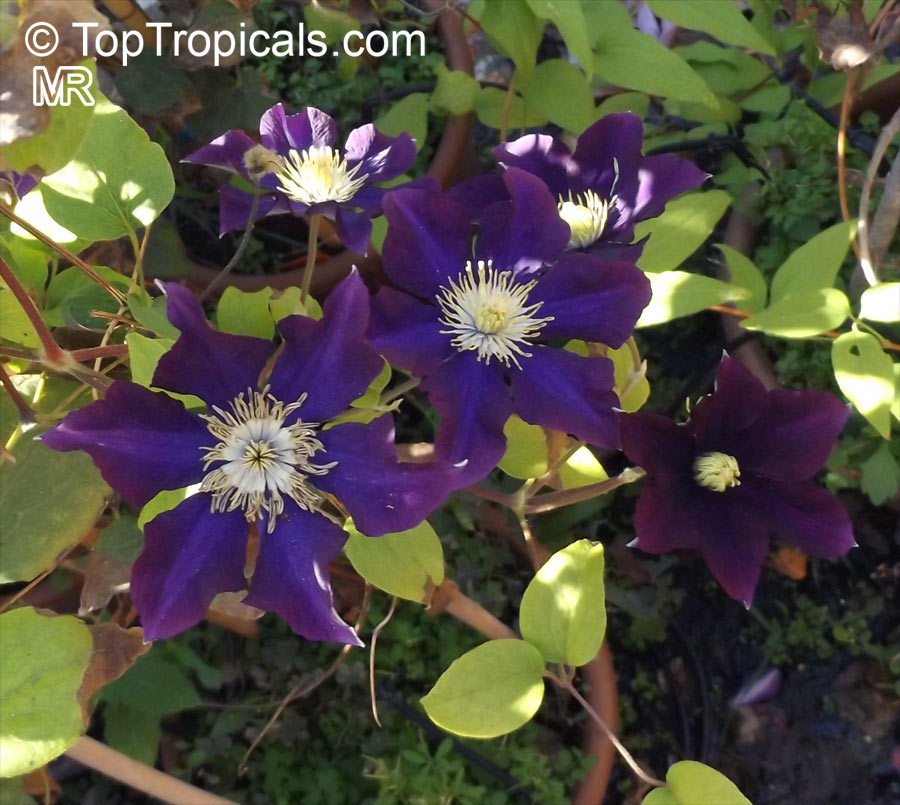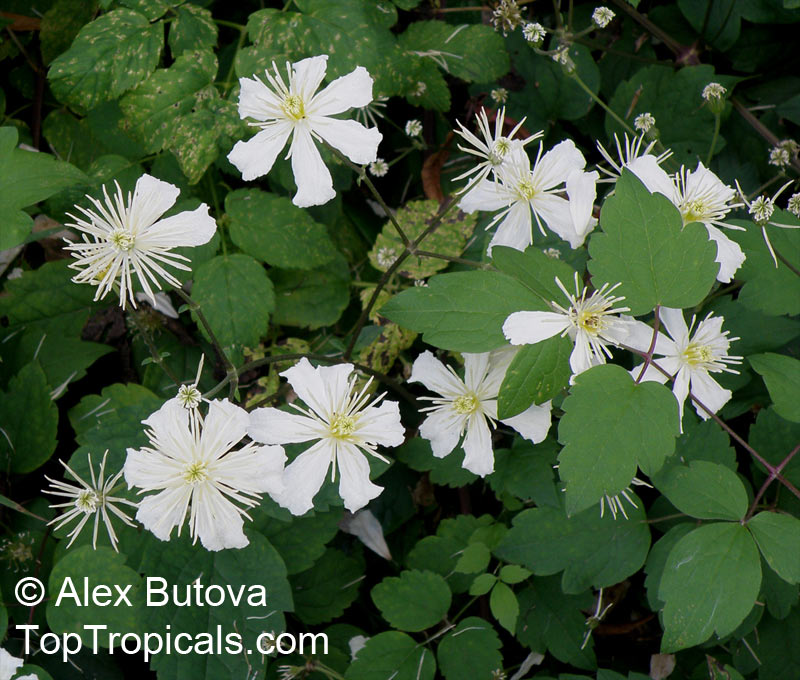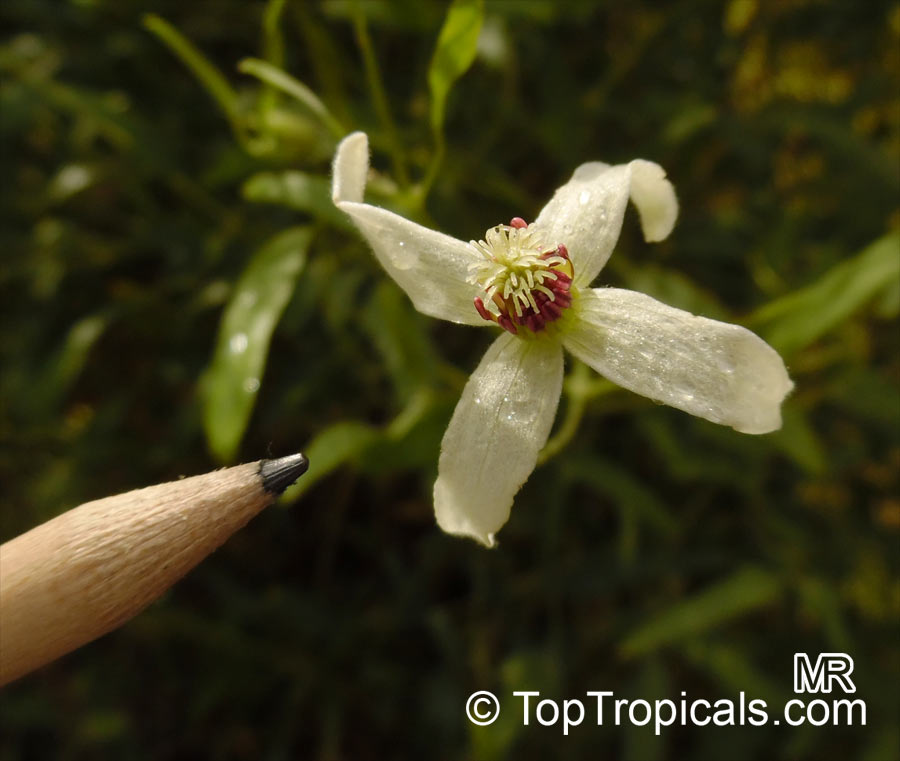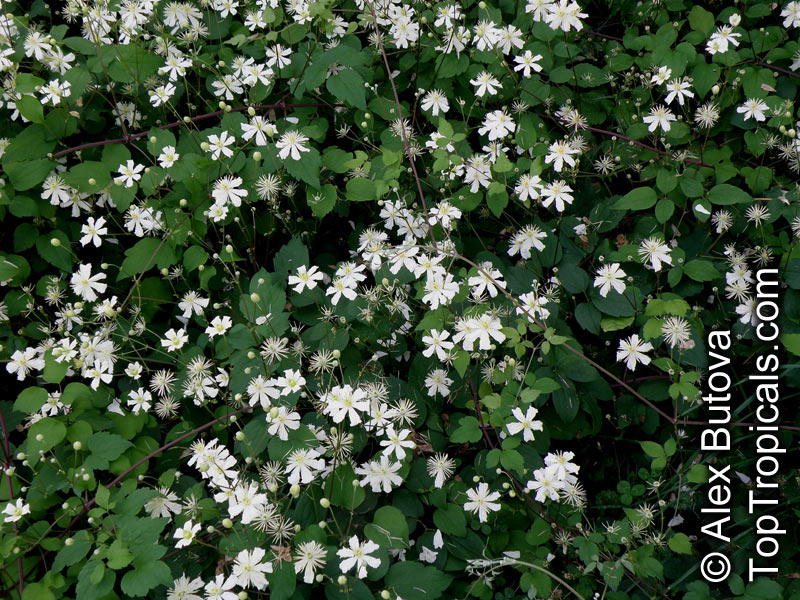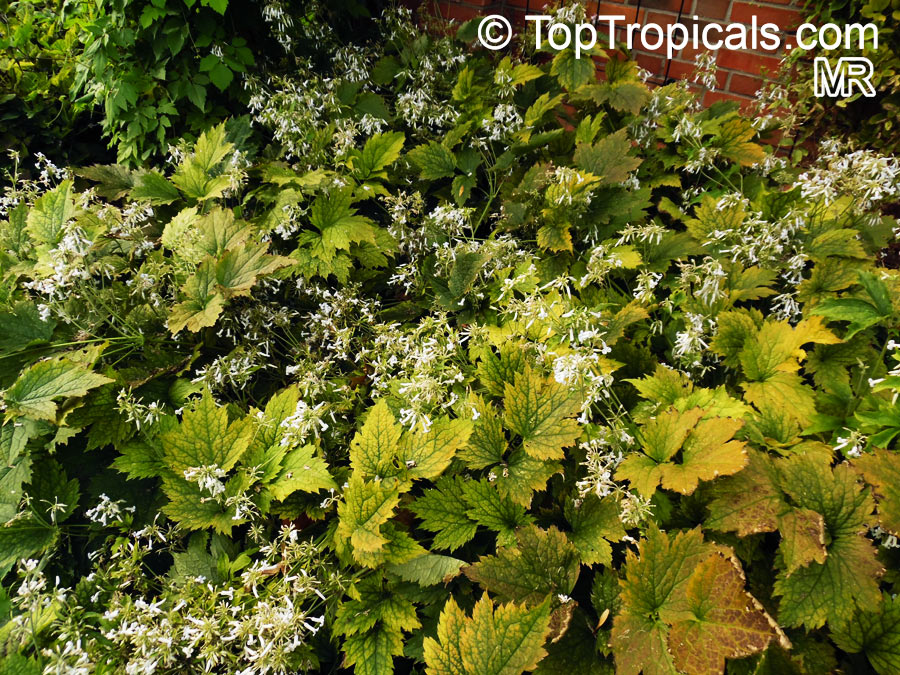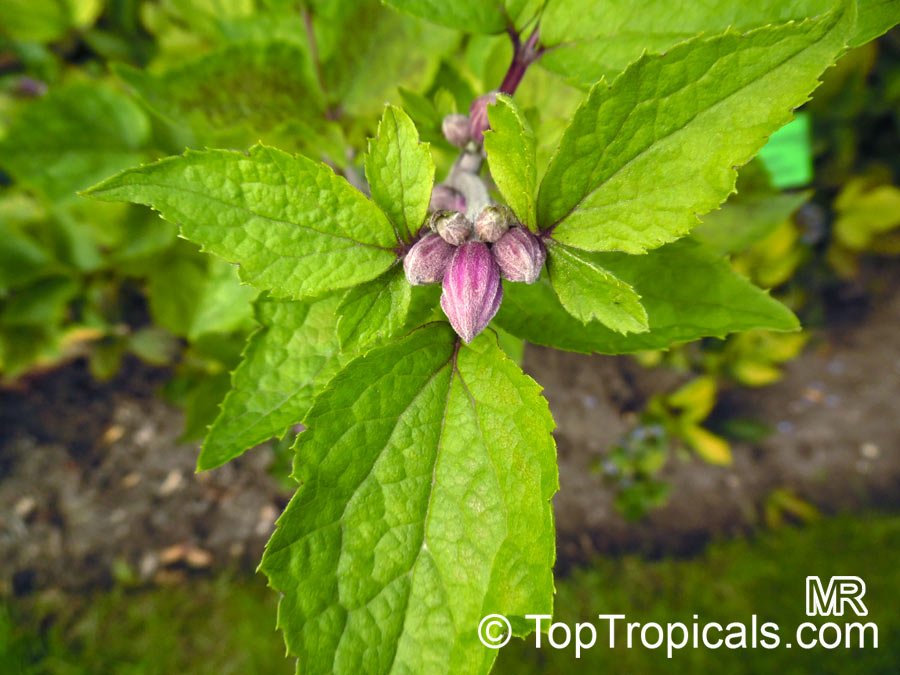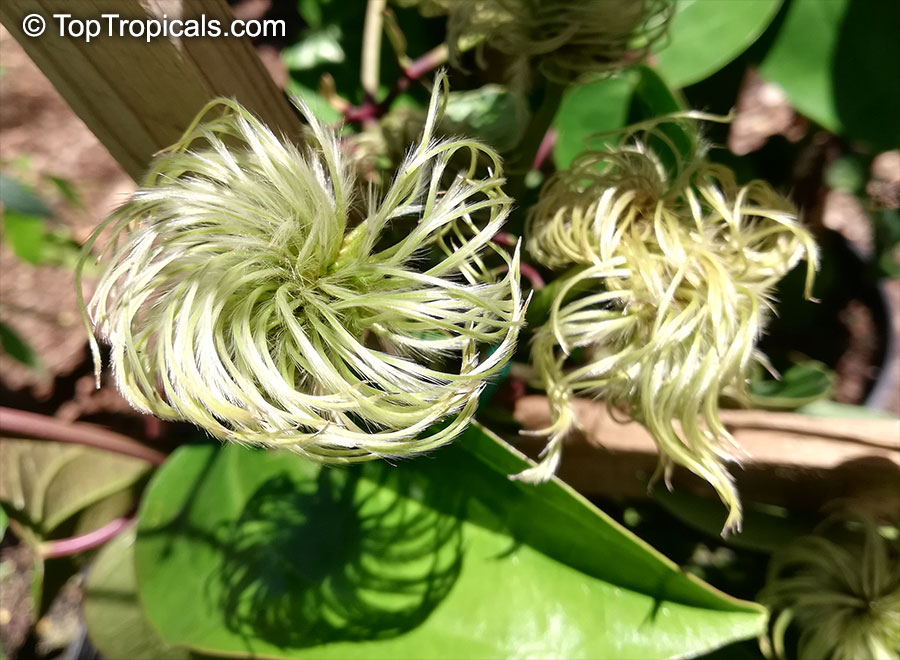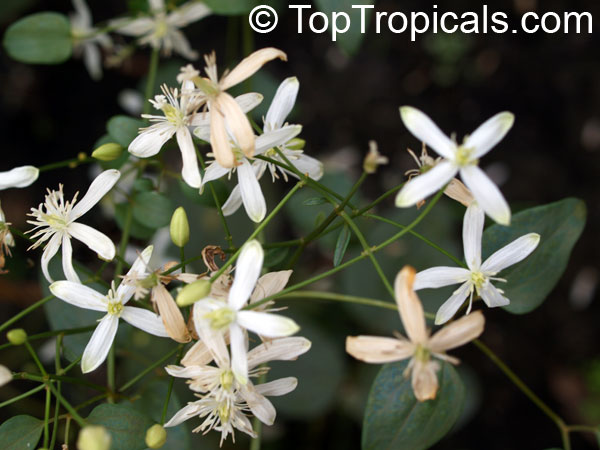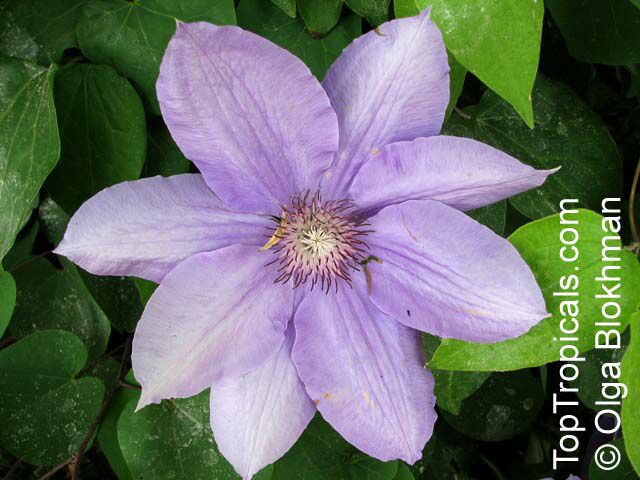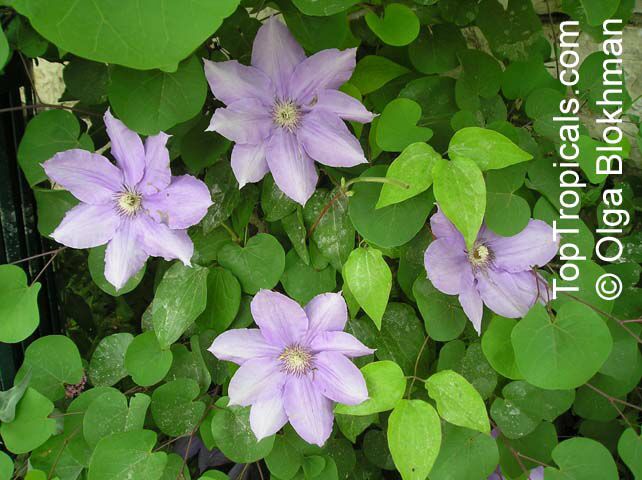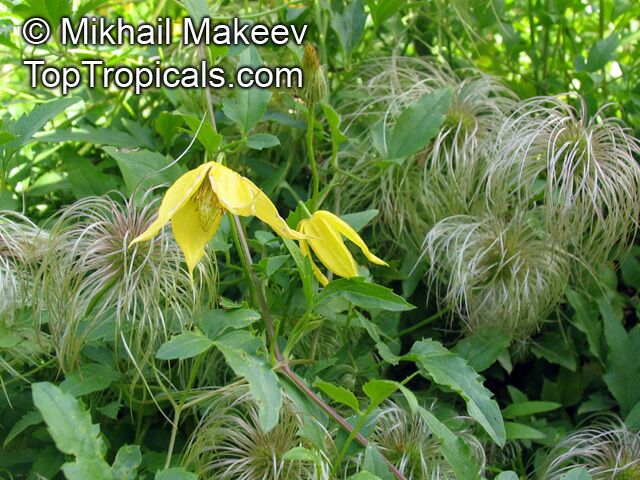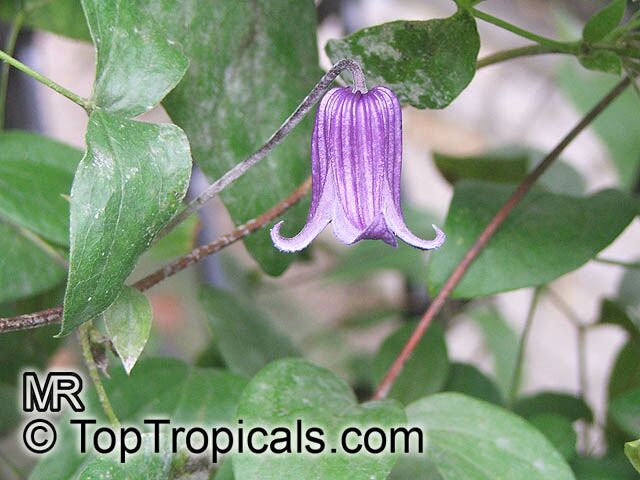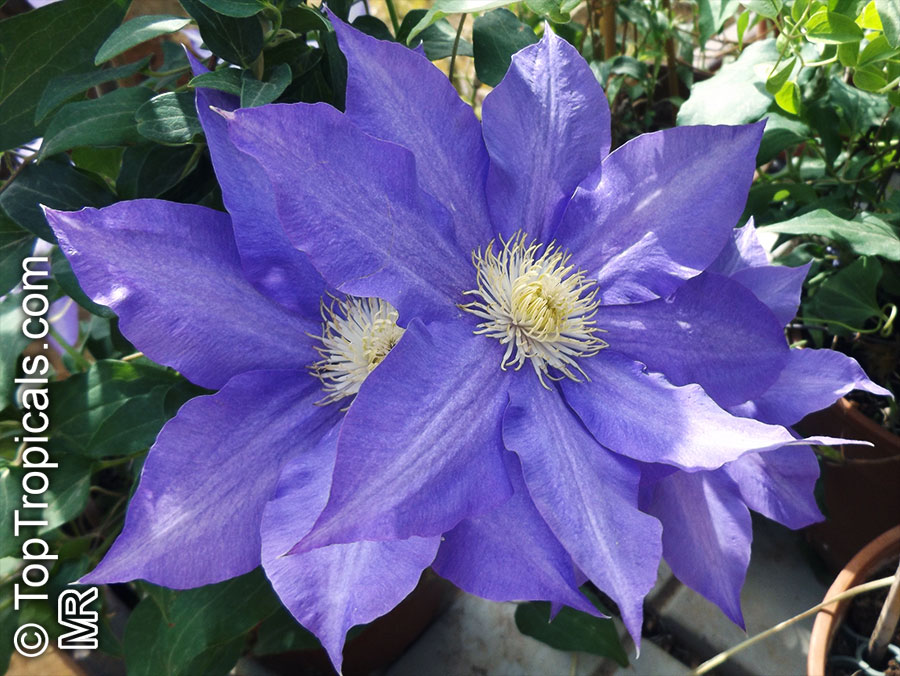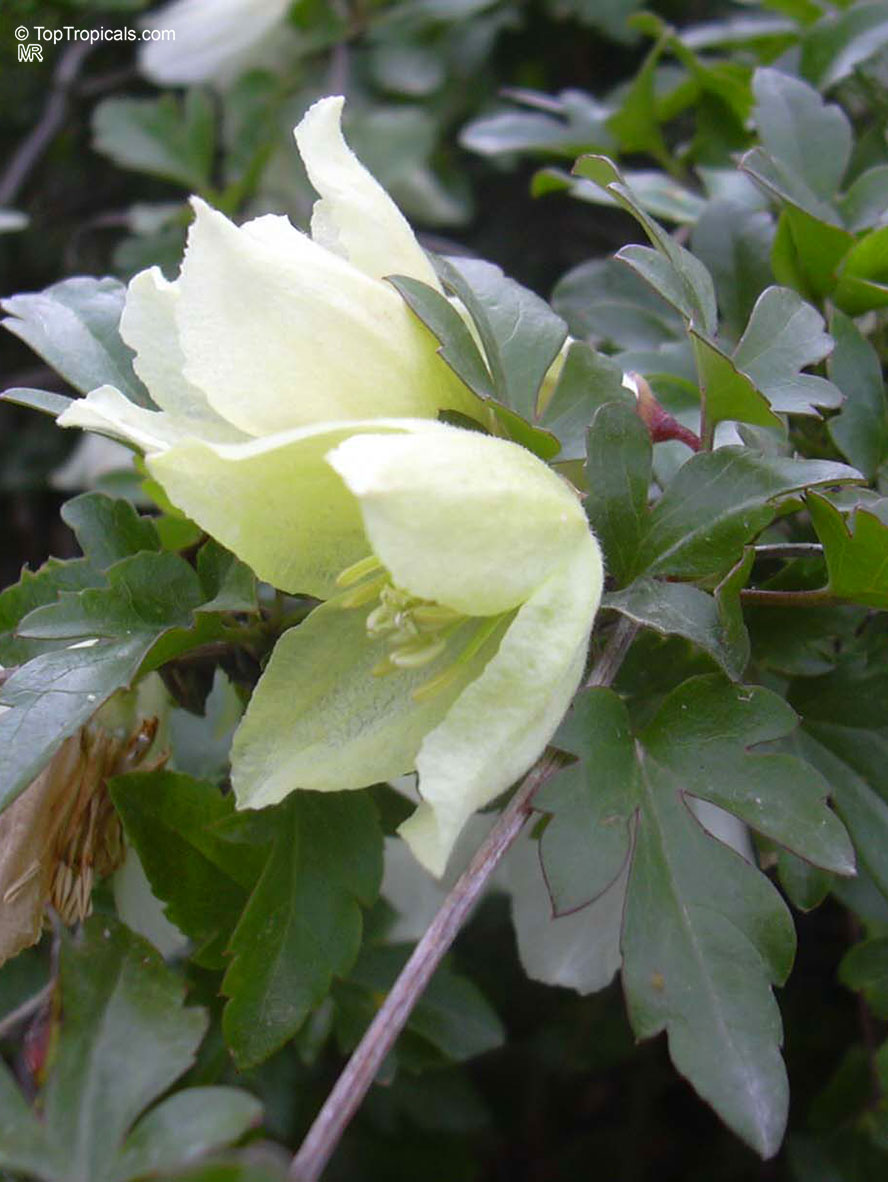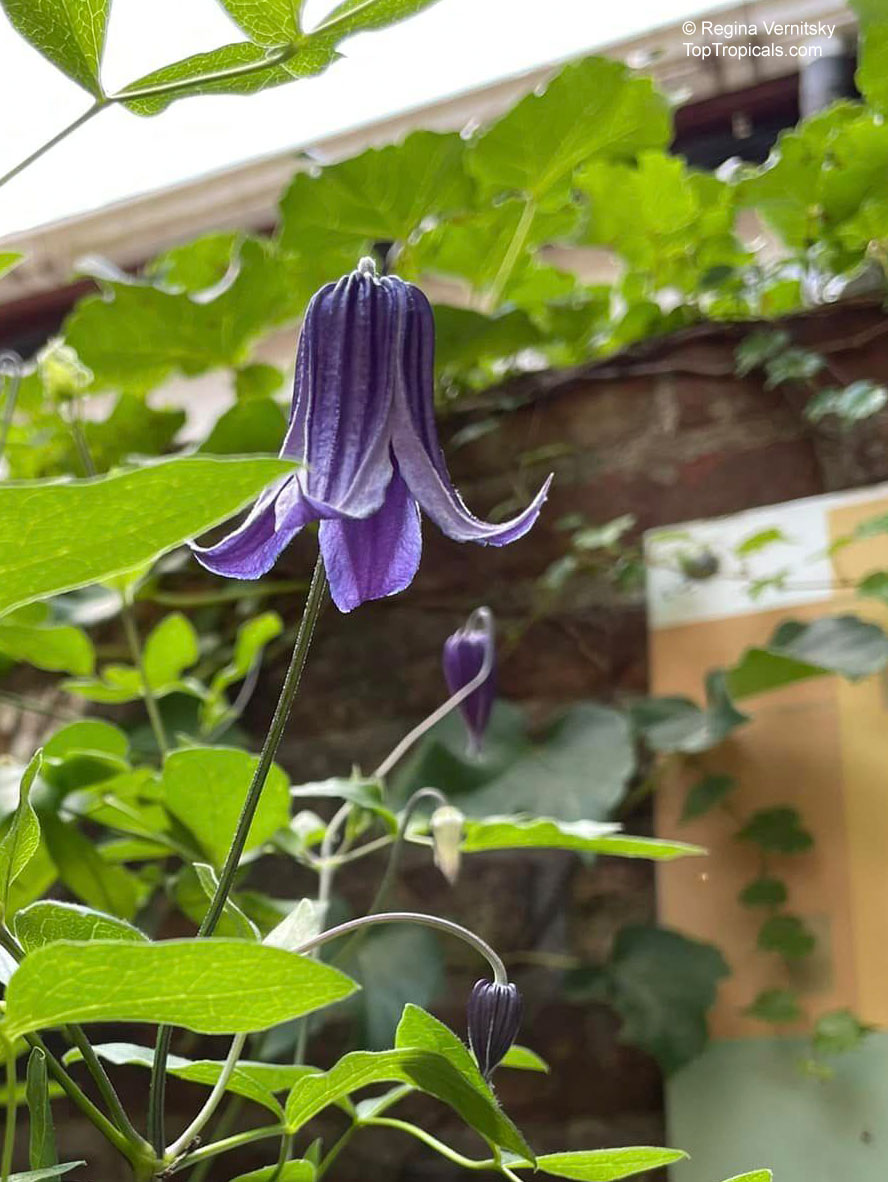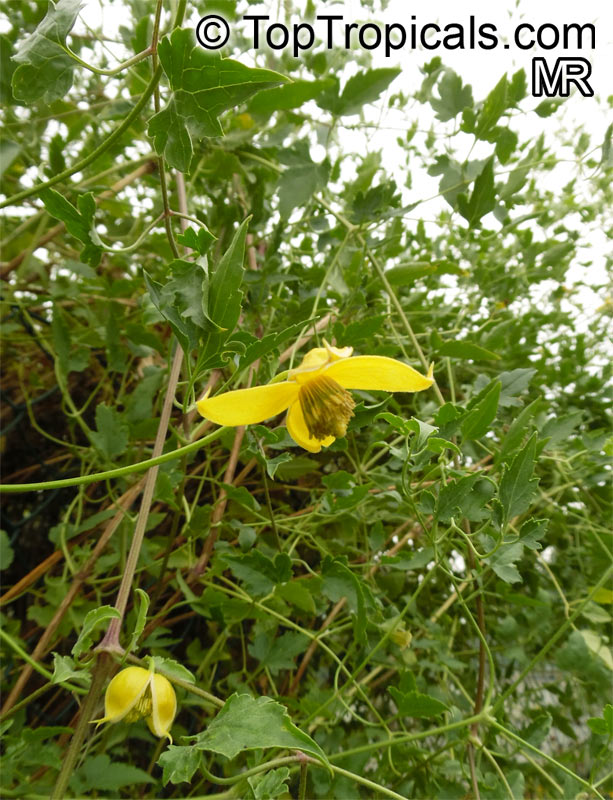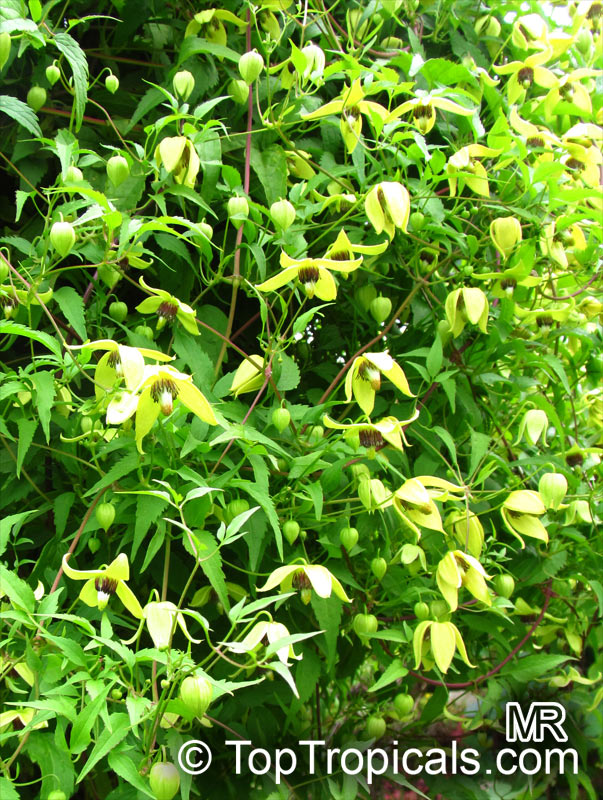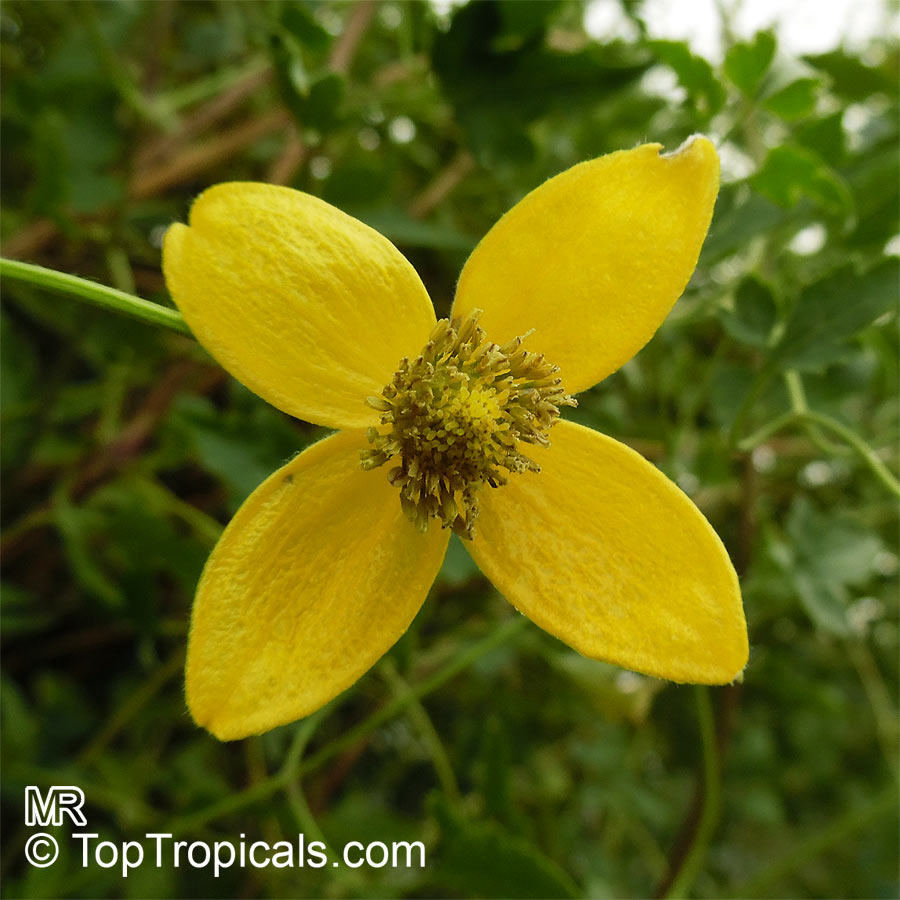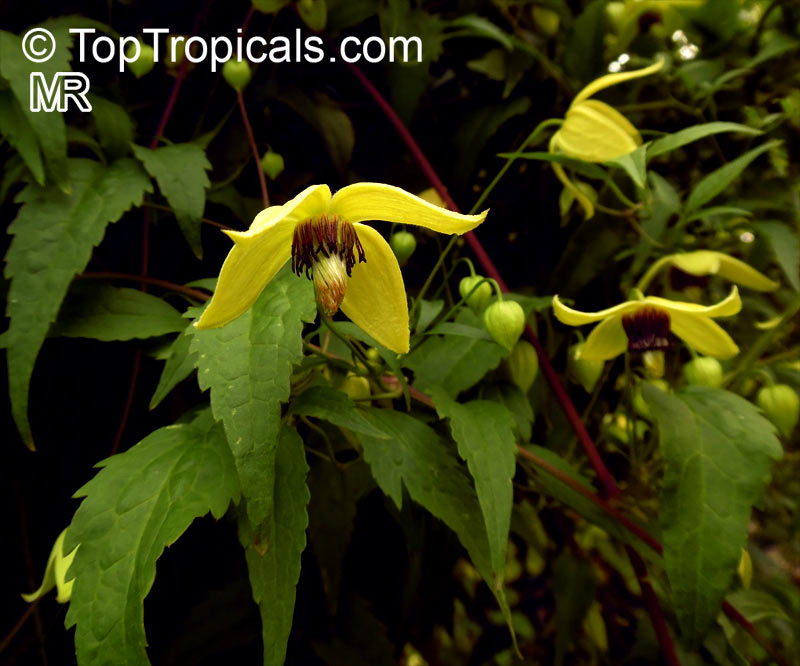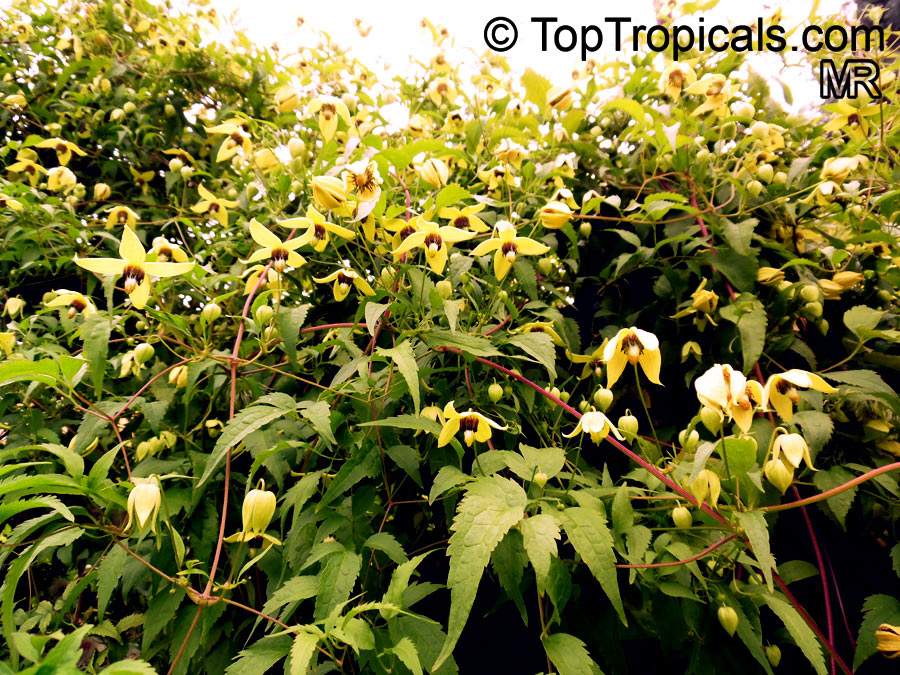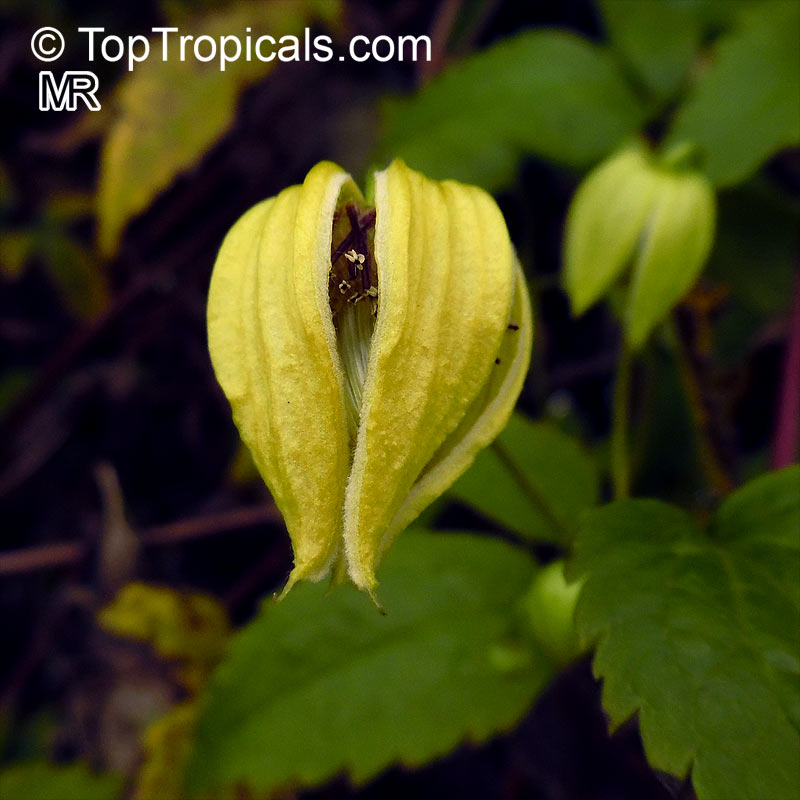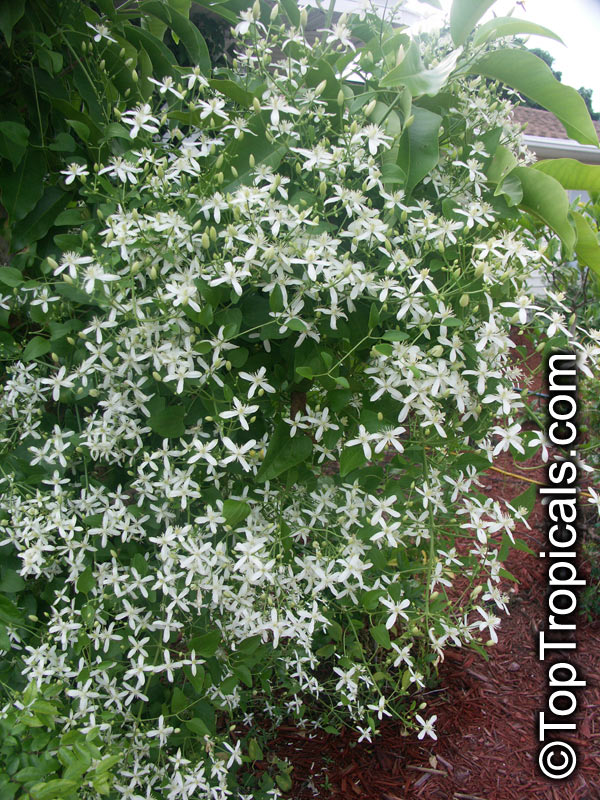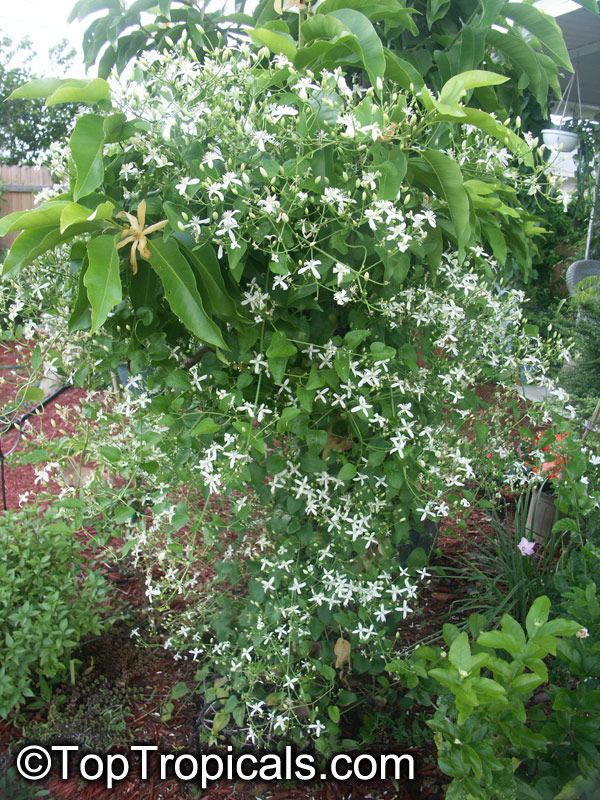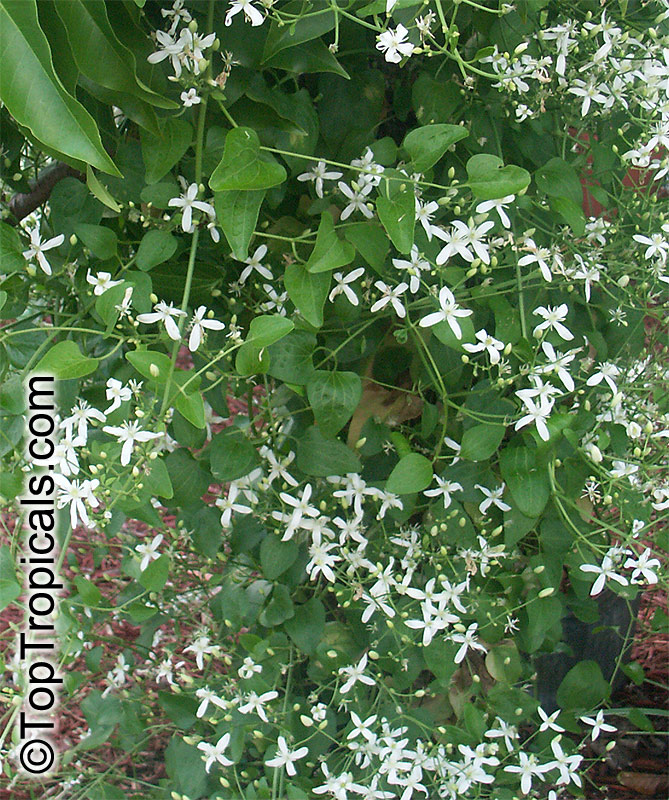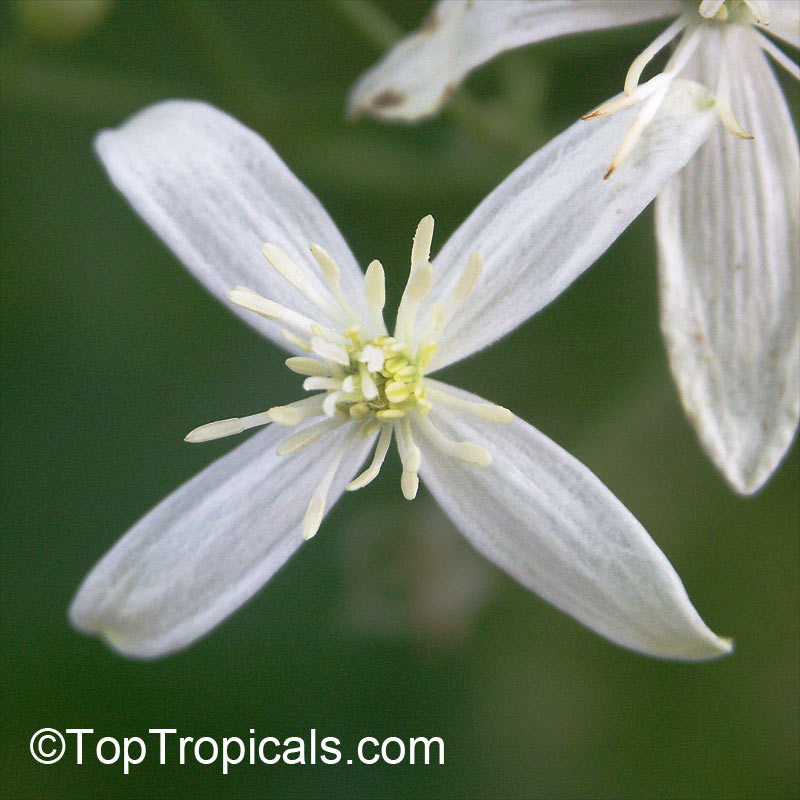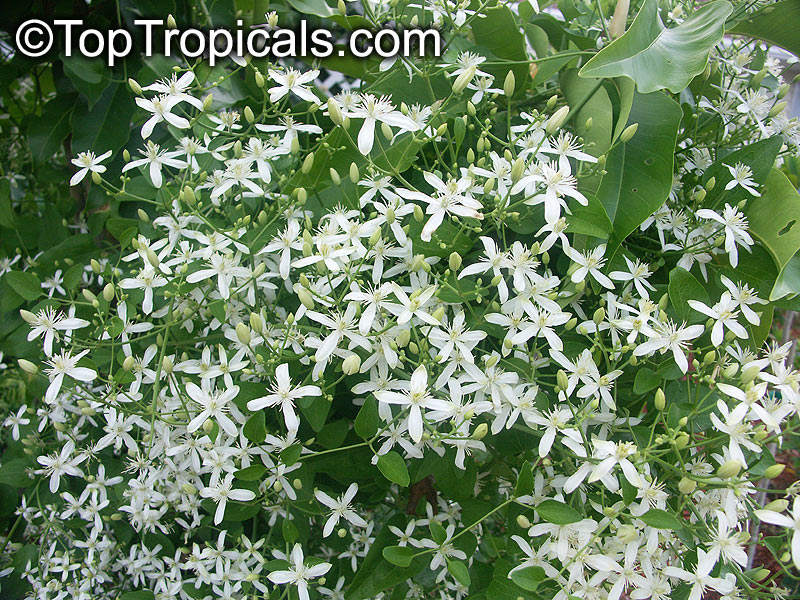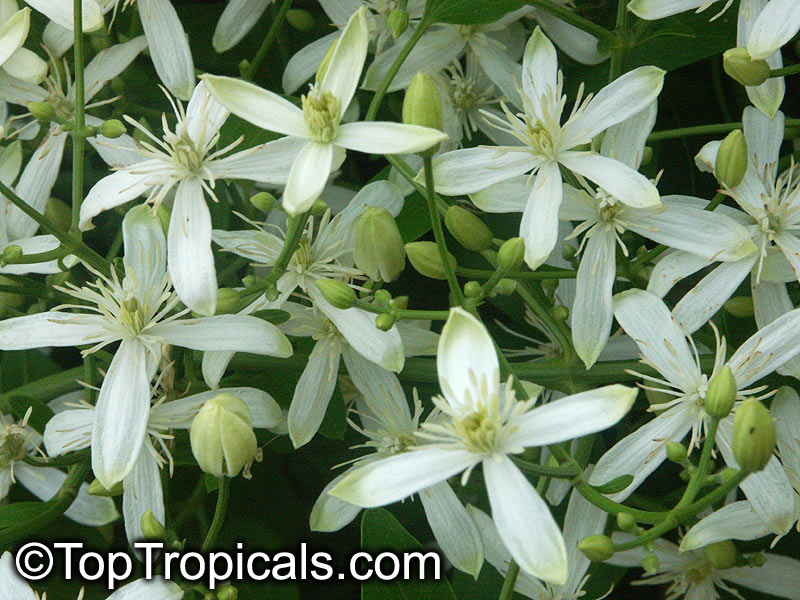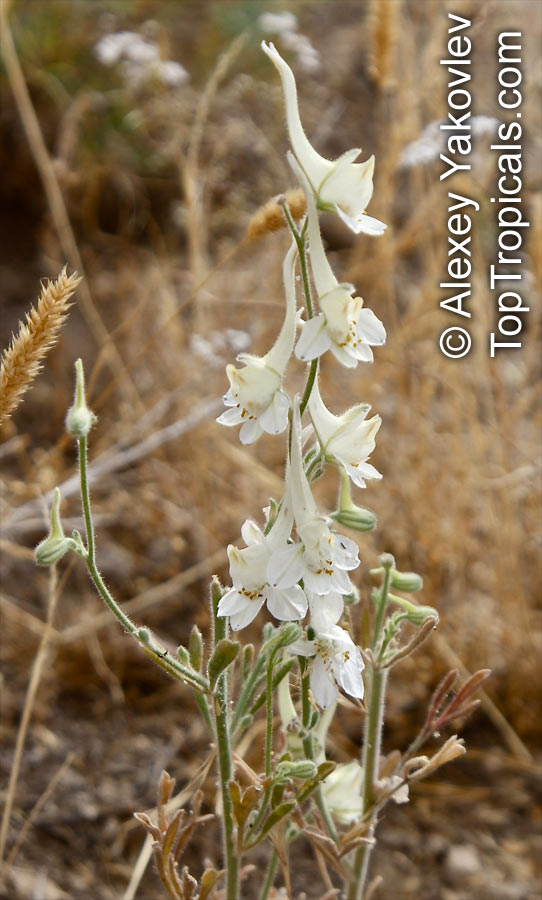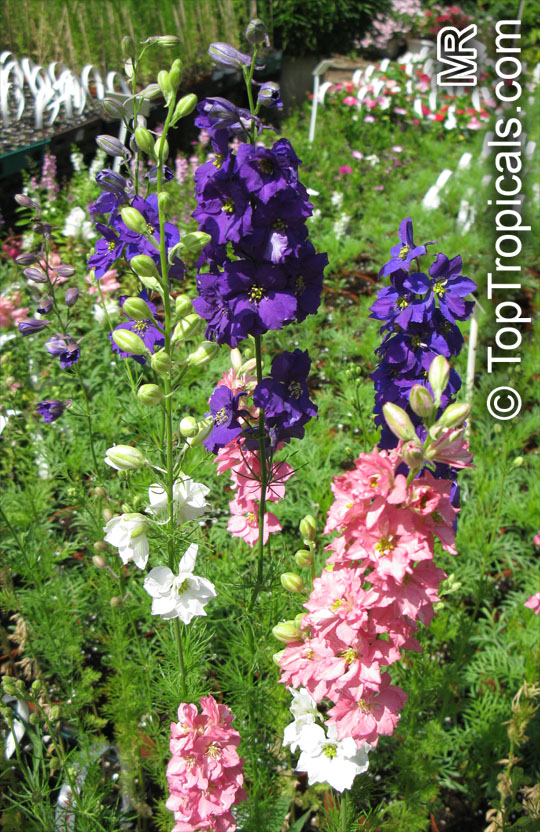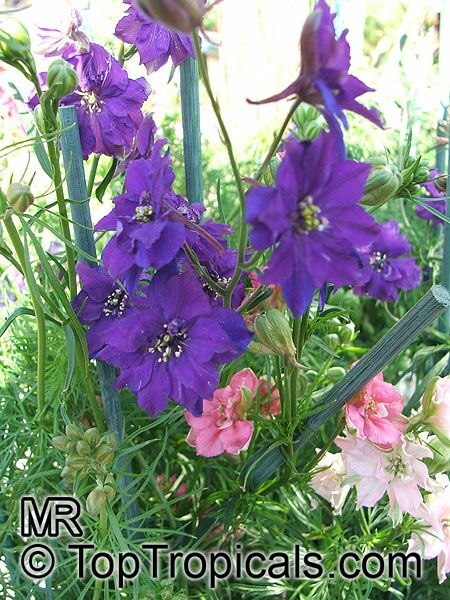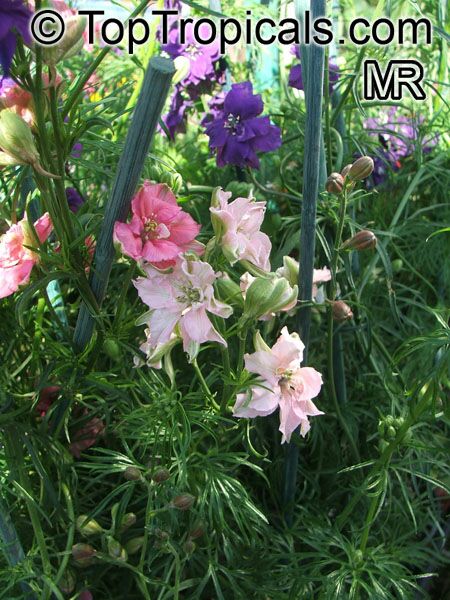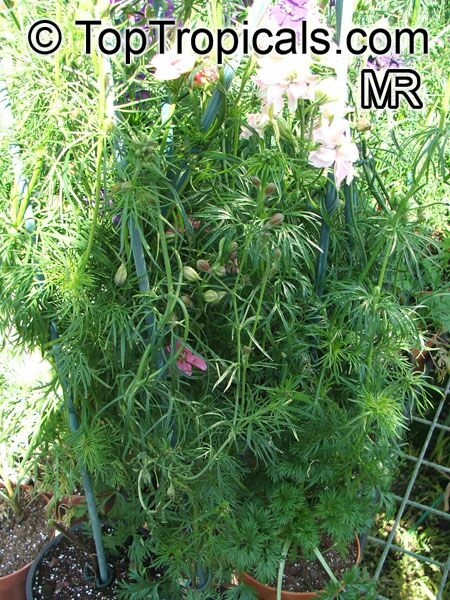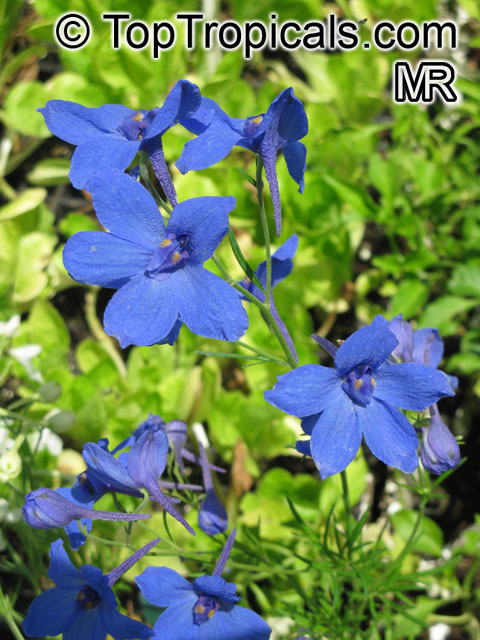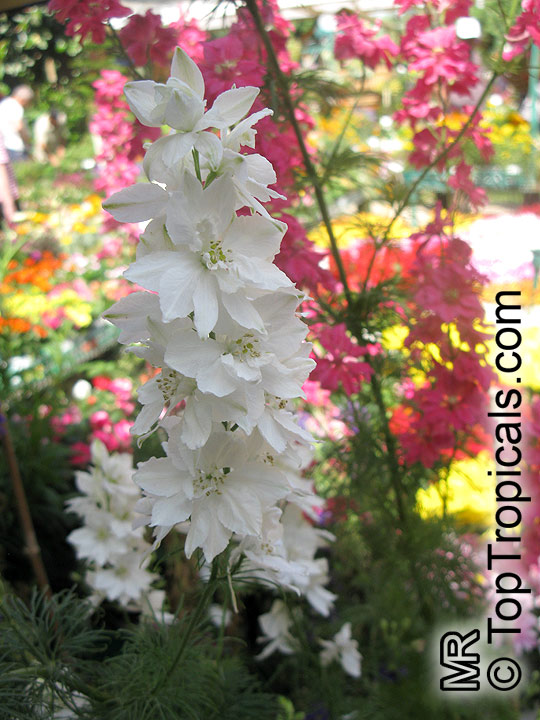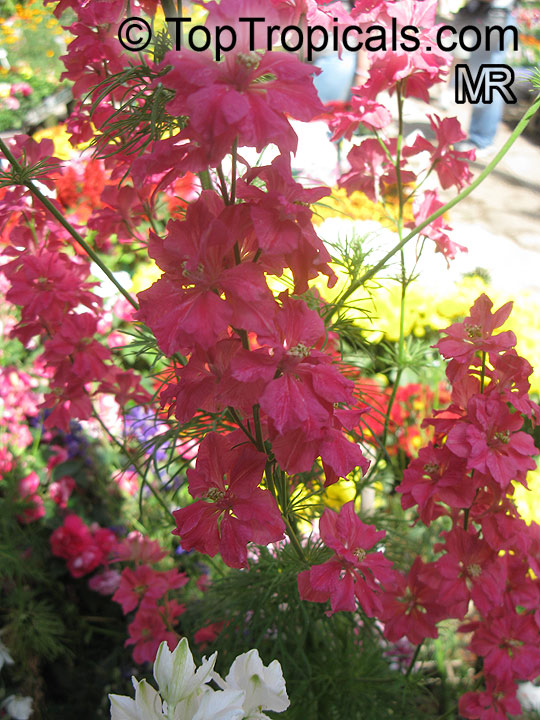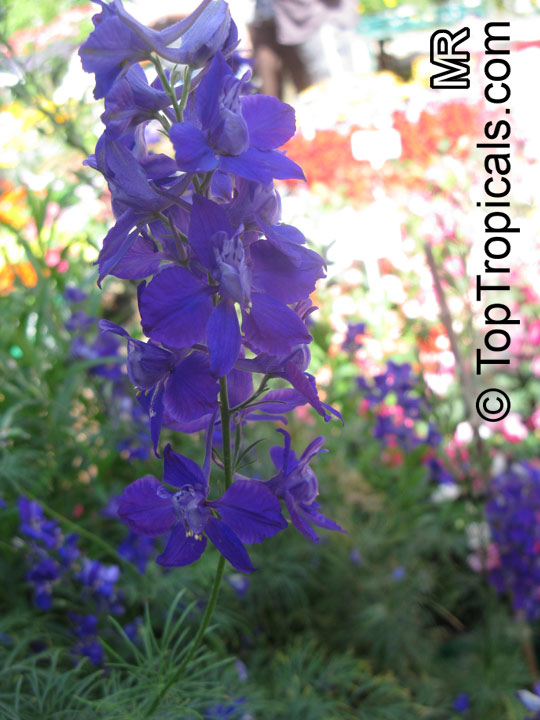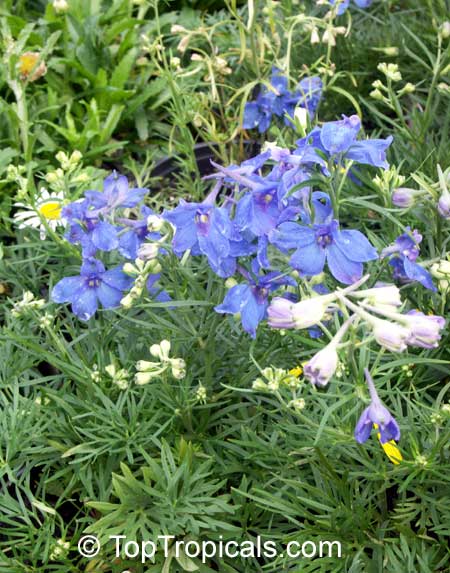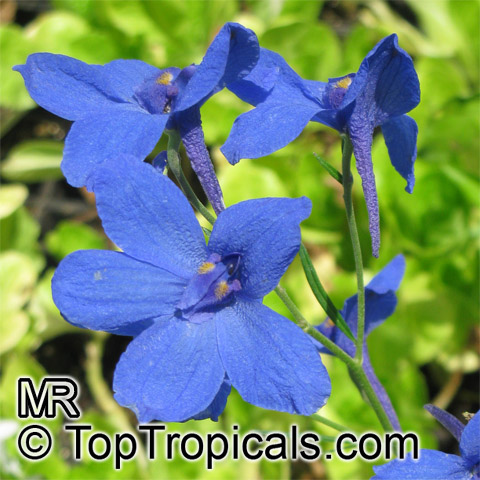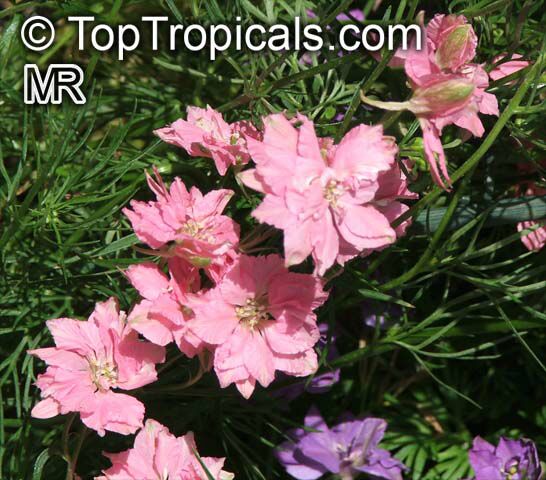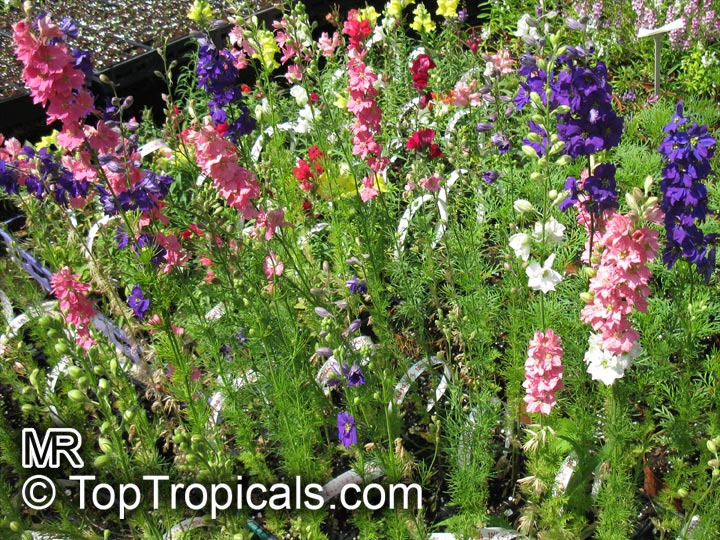Ranunculaceae - Botanical Family
Top Tropicals Plant Encyclopedia
| Number of plants found: 15 | Next | 
|
Go to page: | 1 | 2 |
Botanical name: Aconitum sp.
Common names: Monkshood, Wolfsbane
Family: Ranunculaceae














Different Aconitum species (and their varieties) scattered across temperate regions of globe.
These are handsome plants, the tall, erect stem being crowned by racemes of large and eye-catching blue, purple, white, yellow or pink zygomorphic flowers. Aconitum is grown in gardens for its attractive spike like inflorescences and showy flowers.
All Aconitum plants contain poisonous alkaloids that can, in sufficient quantity, be deadly. Man has used Aconitum as a medicine and poison for thousands of years. Outside Europe it was widely used for its medical properties.
Botanical name: Anemone sp.
Common name: Windflower
Family: Ranunculaceae












Anemone sp. is a beautiful and hardy plant that is suitable for zones 3-10. It requires full sun to semi-shade, depending on the climate. This a small shrub usually growing up to a height of 2 to 5 feet.
With the right conditions, the Windflower produces beautiful and vibrant blooms in various colors. It produces single or double flowers in colors of pink, white, off-white, blue, lavender, purple, red, crimson and vinous and also yellow and orange.
Most windflowers require regular watering, however some species will tolerate extremely dry conditions. Generally, water once or twice a week, so that the soil stays moist but not soggy. To help conserve water, you can mulch the area around the plant to reduce evaporation. Additionally, to keep your Windflower blooming throughout the season, make sure to deadhead spent blooms.
Windflowers are not only attractive but also they attract a variety of butterflies and hummingbirds to your yard, making it a truly appealing area. These plants are cold hardy and can usually survive temperatures of 30F (or lower) for a short period, so they are great for gardeners in cooler climates.
Growing Anemone sp. in a container in a cooler climate can be a great option. As the flower prefers moist, well-drained soil, the container will help to keep it contained, while allowing air to circulate without the risk of it becoming waterlogged. Make sure to water more frequently and recheck moisture levels when temperatures begin to drop to keep your Windflower thriving. Additionally, if in a cold climate, you may also want to bring the container inside during the winter months to provide it extra protection.
Botanical name: Caltha palustris
Common names: Marsh Marigold, Cowflock, Cowslip, Kingcup
Family: Ranunculaceae
Origin: North America










Caltha palustris, commonly known as the marsh marigold, is a small plant native to North America typically growing to between 2-5 feet in height. This species requires a location in full sun to semi-shade and moist soil that is bog-like or aquatic, along with regular water. This plant will produce yellow and orange, daisy-like flowers from mid-spring through to mid-fall.
Although this species is mostly harmless and attractive, it can be irritating to some people with sensitive skin, and various parts of the plant have been used for ethnomedical purposes throughout history. The roots and leaves of the Marsh Marigold have been used in traditional medicine to treat colds and sores, as an aid in childbirth, to induce vomiting and as a protection against love charms and constipation. However, it should be noted that the leaves of the plant are poisonous - especially to livestock and small animals.
It can be grown in USDA Zone 3-7. Those in colder regions wanting to grow this species in pots should ensure that they are in a sheltered location and, once established, the plant should be given protection during severe cold weather. Furthermore, soil should be kept evenly moist throughout the growing season.
Botanical name: Cimicifuga racemosa
Common names: Black Cohosh, Squawroot
Family: Ranunculaceae
Origin: North America







This perennial woodland plant likes the deep shade of moist hillsides, the home of other important medicinal plans such as goldenseal and ginseng. It has robust, three-divided leaves, with three-lobed terminal leaflets. The middle lobe of the sharply-toothed leaflets is the largest. The plant is little-noticed until it sends up its tall spikes of showy white flowers, three to eight feet tall.
The root was an important folk medicine among American Indian groups and early settlers for menstrual irregularities, as an aid in childbirth and for rheumatism. Black cohosh will become of increasing interest to women looking for an alternative to estrogen therapy in the treatment of menopausal symptoms.
Botanical name: Clematis montana
Common names: Himalayan Clematis, Anemone Clematis
Family: Ranunculaceae
Origin: Asia







The Himalayan Clematis (Clematis montana) is a vigorous and robust deciduous vine native to the mountains ranges of Asia. It reaches heights of up to 50 feet and is typically grown as a creeper along walls, fences, or trellises. This plant is best suited to cooler climates, preferring full sun with some sun protection in hot and humid climates, and is able to tolerate short periods of semi-shade. The Himalayan Clematis needs moderate water and will thrive during periods of drought once established.
The foliage of the Himalayan Clematis is a deep green color and its flowers vary in beautiful shades of pink and white to off-white. As temperatures start to drop in autumn, the foliage displays a stunning bronze-bronze hue before going dormant in winter. This plant is cold-hardyis able to be grown in USDA zones 6-9.
When planting this climber, it is important to select an area with full sun or light shade and fertile, well-drained soil. If living in a colder region, planting in a pot is an option that allows for easy relocation to a warmer spot. In soil, be sure to add a thick layer of compost and a balanced slow-release fertilizer prior to planting. Additionally, irrigate the plant during its first growing season and during dry periods with more frequency. This will help maintain soil moisture. Pruning regularly is also important in order to stimulate new growth and abundant blooms later on.
The Himalayan Clematis is an attractive and versatile plant and is commonly used by gardeners to hide unsightly structures such as sheds and walls. With the correct care and maintenance, this climber can fill an area with lush foliage and fragrant flowers, ultimately creating a beautiful display.
Botanical name: Clematis sp.
Common names: Clematis, Old Man's Beard, Traveler's Joy, Virgin's Bower
Family: Ranunculaceae
Origin: Europe, Hemalayas, China, Australasia, North and central America











Clematis is a vine, native to Europe, the Himalayas, China, Australasia, North and Central America that loves to climb for support, so incorporate fences and trellises into your garden design, to ensure your clematis thrives. This beautiful species produces a variegated mix of pink, white and off-white, blue, lavender, purple, red, crimson and vinous flowers, as well as yellow and orange, depending on the variety.
Clematis prefer areas that are shaded from mid-morning through mid-afternoon, but still get some direct sun. To get the most abundant flowers and foliage, try a partially shaded area, such as an east-facing wall, or a north-facing wall in climates that don't experience intense heat in the summer.
When growing in a pot in colder regions, be sure to provide extra protection over the winter months.
Keep the soil moist, but not wet, by watering regularly. It's important to give clematis a consistent supply of water, as too much or too little can cause them to become stressed or can even cause them to die. If your clematis becomes stressed, it may be necessary to prune back some of its foliage. This will help the plant to recover.
Clematis is an easy to grow and versatile flowering vine, requiring very little maintenance once established. With the right combination of sun, moisture and support, your clematis can provide beautiful blooms for many years in your garden.
Botanical name: Clematis tangutica
Common names: Golden Clematis, Russian Virgin's Bower
Family: Ranunculaceae
Origin: Asia








Tangutica Group consists of deciduous climbers with ternate or pinnate leaves and small, bell- or star-shaped flowers appearing on the current year's growth in summer and early autumn. Clematis tangutica is a vigorous, late-flowering climbing vine to 15 or 20 feet tall with intense golden-yellow, bell-shaped flowers that eventually fully open to reveal crimson filaments.
Botanical name: Clematis terniflora
Common name: Sweet Autumn Clematis
Family: Ranunculaceae
Origin: Asia









Native to Asia, it can easily be grown in humid climates, in full sun to semi-shade. It favors regular rather than excessive water and semi-frequent feeding. Mature plants can take short light frosts and can withstand temperatures as low as 30's F for a short time. In colder climates, they are best grown in a container so they can be brought under shelter if an unexpected freezing night arrives.
Clematis terniflora (Sweet Autumn Clematis) prefers well-drained, humus-rich soil with a light layer of mulch. When grown in pots or containers, mix the soil with moisture retaining materials like peat, bark chips, and perlite. Completely water and feed with diluted organic fertilizer before and after flowering. In cooler climates, these plants need more protection from cold and wet weather, such as covering them with sheets or blankets. Pruning is usually unnecessary, but if desired, it should be done after the flowering season and before the new growth emerges.
The Sweet Autumn Clematis has cascading white to off-white flowers that are deliciously fragrant, making it an attractive addition to the garden. They attract butterflies and hummingbirds and require very little maintenance once established. They need to be grown in USDA zones 9-11; otherwise, they can be grown in containers and brought indoors when temperatures fall below their cold hardiness limit. When grown in pots, they require extra care to keep their roots healthy. To ensure the plant is properly hydrated, regular watering and occasional application of water-soluble fertilizers can keep it healthy and vigorous.
Botanical name: Consolida sp.
Common names: Larkspur, Knight's Spur
Family: Ranunculaceae
Origin: Mediterranean, Central Asia











Consolida is cool weather annual, closely related to the delphiniums, and sometimes included in that genus as Delphinium consolida. Consolida differs from Delphinium in the flower structure, with the flowers in an open, loose, often branched spike, rather than the dense column of flowers found in Delphinium, and in the fruit, which comprises a single follicle, instead of a cluster of several together.
The leaves are bright green and finely dissected-feathery, even. There are dozens of named cultivars, many being products of hybridization between closely related species.
Western variants of the plant are poisonous to cattle.
| Next |  |
Use link to repeat this search:
https://toptropicals.com/cgi-bin/garden_catalog/cat.cgi?search_op=and&keyword_op=and&language=e&family=Ranunculaceae
&number=10&no_change_lang=1&user=tt&sale=1&first=0
